

Best Women’s Safari Clothing for Africa Overland Travel
Africa Packing Lists , Packing Lists , Travel Packing Lists
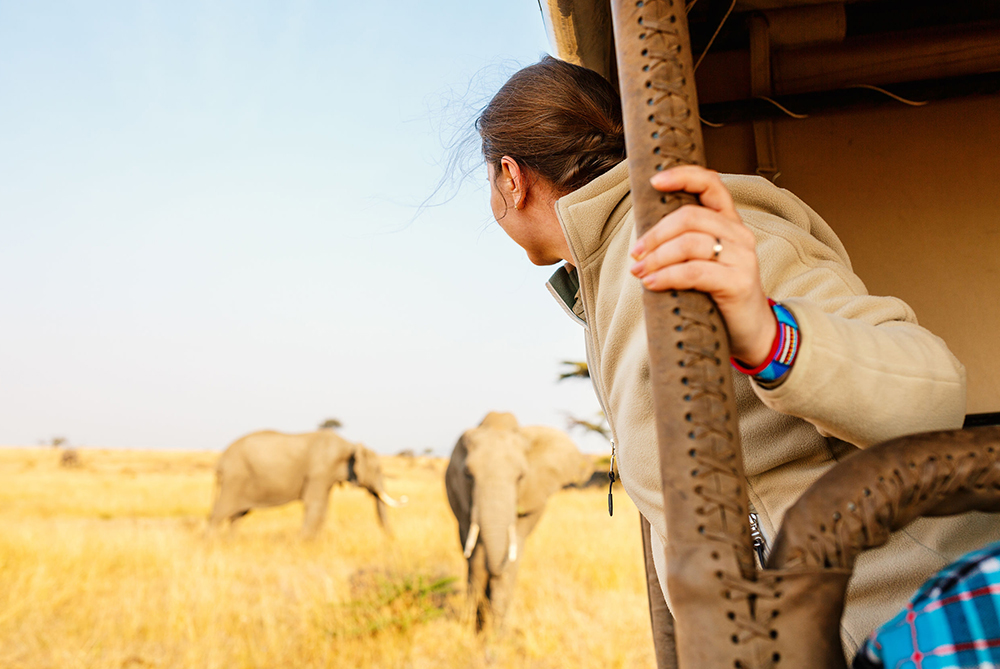
Support TFG by using the links in our articles to shop. We receive a small commission (at no extra cost to you) so we can continue to create helpful free content. We earn from qualifying purchases made to the featured retailers. Thank you, we appreciate your support!
Planning a safari or overland tour through one of Africa’s incredible game parks? This is the best womens safari clothing for your trip. Read our complete guide to find out exactly what to wear on safari!
Women Safari Clothing
Table of contents.
An African safari is one of the most exciting trips you can take as a traveler. Roughing it in the wilderness surrounded by the Big 5 is truly a thrilling experience. There are several things to keep in mind when you choose safari clothing for this type of adventure.
How should I dress for an African safari?
The focus of your safari attire should be on comfortable safari clothing in neutral colors and light fabrics. If it’s not something you would feel comfortable wearing something on an overnight flight, it’s best to keep it out of your safari gear.
Safari clothes for Africa should be relaxed, so you can enjoy the experience to the fullest. The drive time on overland trips can vary anywhere from 6 to 12 hours each day. Making comfort key on those long-haul journeys — the distances in Africa are massive!
Expect your safari clothing to be covered in dust and keep in mind that you won’t have much time to do laundry. Your safari clothes should feature synthetic fabrics that are hard wearing, quick-dry, easy to wash, and won’t show dirt or dust.
What to Wear on Safari
When it comes to options for what to wear on an African safari, womens travel brands tend to feature technical fabrics focusing primarily on khaki and olive colors. But unless you’re planning to live in the bush or are taking a Gorilla trekking trip to the jungle, it’s likely that this type of clothing isn’t necessary.
The majority of Africa safari tours will see you viewing animals within the confines of a vehicle, whether a giant overland truck or 4×4 car. This means that the khaki safari shirt or safari pants that you purchased will tragically go to waste.

Safari Clothing Essentials Packing Guide: An Overview
Before we get into the nitty-gritty of your clothing options, let’s take a look at an overall view of what your safari gear for your travel capsule wardrobe should consist of. Here’s a quick snapshot of the amount of what should be on your bag when you’re planning what to wear on an African safari.
TFG Recommended Clothing List
4 sleeveless or short-sleeve tops 2 long-sleeve tops 1 dress or skirt 4 pants 1 shorts 1 windbreaker jacket 1 fleece or warm jacket 1 swimsuit 3 bras (sports bras are recommended) 3 socks 7-10 underwear 1 jacket 1 scarf 1 sunglasses
TFG Recommended Shoe List
1 pair comfortable sneakers 1 pair flip-flops
What is the Best Women Safari Clothing?
Whether you’re looking for what to wear on safari in Kenya or are camping in the Serengeti, you need the best of the best when it comes to your safari clothing. Our selections offer you a nice range of safari pants, tops, dresses, and even safari jackets. That way you can be confident and comfortable on your jaunt in Africa!
Best of all? You can avoid the head-to-toe khaki safari outfits that somehow became the must-have on an African safari. Here are some realistic clothing pieces you’ll love carting along with you:
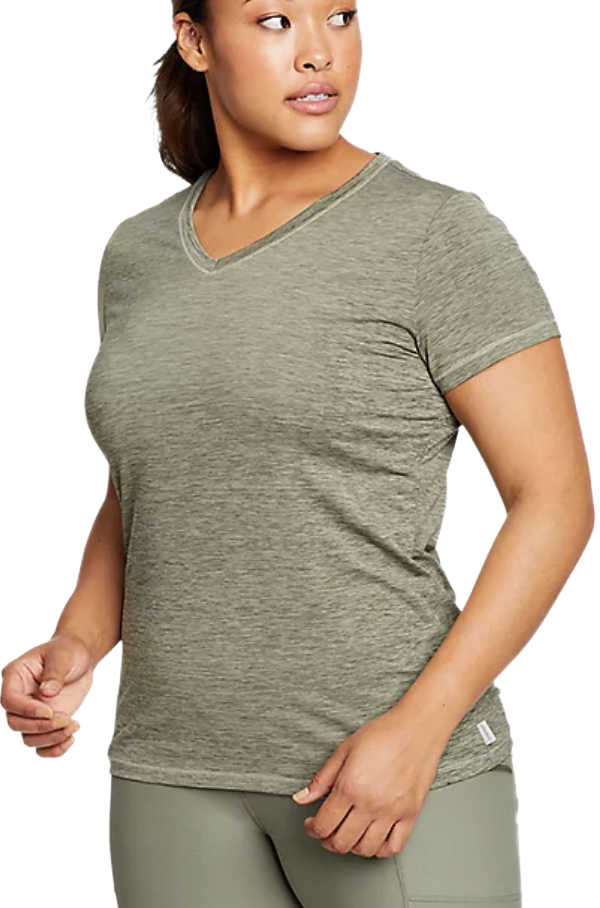
Shop Sizes XS-3X: Eddie Bauer Resolution T-Shirt
Best Safari Shirts for Women
As you plan what safari clothes to pack, make sure to bring a variety of tops and include sleeveless tanks, short sleeve tees, and long sleeves that you can layer!
The best safari shirts for the day time and warm weather are sleeveless or short sleeved breathable, moisture wicking tees in neutral colors.
For really hot days or to layer underneath warm items if cold, add a couple of casual tees. These also will be beneficial for those long safari travel days (read more on this in the Pants section below).
Stay cool with these moisture wicking shirts !

Shop Sizes XS-XL: Icebreaker Merino Standard 175 Everyday Short Sleeve
Merino wool tops are some of the best safari shirts because they are both practical and can be re-worn without washing. This is particularly important on longer safari trips when you won’t have access to laundry for extended periods of time.
However, If you plan to hand wash your merino wool tops you’ll have to wait until you spend two or more nights in one location to allow time for the clothes to dry. This is why either quick-dry or long-lasting items are the best as safari clothes.
While merino wool is more expensive, you can get away with bringing just a few tops and then re-wearing them every few days. This is key for packing light!
Merino wool Icebreaker tops like these have a higher price point but are excellent for safari trips because they’re practical and you can rewear them (for weeks) without washing.
Learn more about how to hand wash while traveling !

Shop Sizes XS-XL: Icebreaker Merino Women’s Siren Tank
If you are traveling in hot weather, you might prefer a sleeveless top like the Icebreaker Merino Women’s Siren Tank one pictured above (perfect safari shirt). Like the short sleeve tops, the ideal fabrics are from performance brands with quick dry 100% cotton, merino wool, or synthetics.

Shop Sizes XS-XXL: Columbia Cades Cape Tank
If you’re looking for a sleeveless safari shirt that’s less body hugging, then one like the Columbia shown here is perfect.
A sleeveless top not only helps to keep you cool on your safari days, but it can also be dressed up when you’re visiting the city! Pair it with a cute skirt and you have an instant evening outfit. Double-duty top!
Plus, it also looks the part of an African safari shirt!

Shop Sizes XS-3X: Columbia Quick Dry Sun UV Protection Convertible Long Sleeve
For the sunny days you’ll want to bring one light but practical womens long sleeve safari shirt to protect you from the sun’s beating rays. This will be a piece you’ll want to re-wear, so we advise choosing a quick dry fabric so that when you wash it, it will dry relatively quickly!
The dark khaki convertible womens long sleeve safari shirt (pictured above) is not only quick dry, but it’s specifically designed for UV protection. Plus, with it being convertible you can make the sleeves longer and shorter based on your preference.
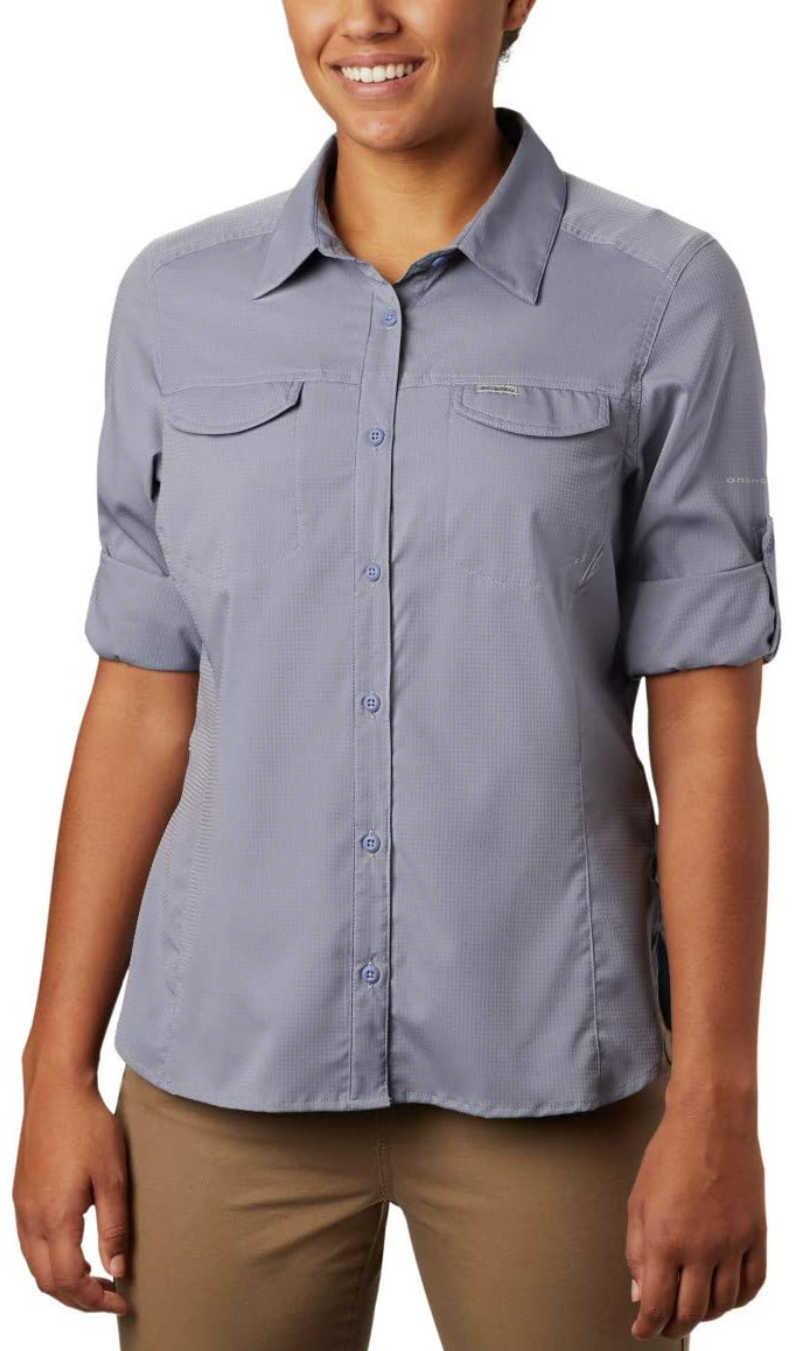
Shop Sizes XS-3X: Columbia Silver Ridge Lite Long Sleeve
Can you wear grey on safari? Grey is a great color choice for safari clothes along with other medium to dark neutral colors like khaki. These colors are good choices due to the fact that your clothes are likely to collect a lot of dust, especially the ones you use for the outer layers, and the darker neutral colors are able of masking it.

Shop Sizes XS-3X: Woolx Remi Long Sleeve T-Shirt
When you’re planning what to wear on a safari, make sure to bring at least one warm long sleeve or thermal top . You should also include a long-sleeve blouse you can use to cover you from the winter sun and to wear in the cities.
Depending on the time of year you’re headed on your safari and the region in Africa that you’re going to, you might need to add a few extra long sleeve tops to your safari wardrobe to layer at night. It can get pretty cold!
Safari Packing Tip : You’ll want to keep your safari attire as light as possible. To keep your packing light, make sure to include six to eight safari shirts. Any more and you’ll be overpacking!
Best Safari Pants for Women
When you are actually on a safari, you are much more likely to be going inside of a vehicle — walking safaris aren’t the norm. Being inside a vehicle allows for the undisturbed observation of the wildlife in a natural setting. Perfect for safari adventurers!
Of course, it’s best not to assume. So if you aren’t sure that you’ll be in a vehicle, double-check with your tour operator (if you have one).

Shop Sizes XXS-XXL: Zella Live In High Waist Leggings
It might surprise (and excite you) to find out that some of the best pants for safari are leggings. Seriously! This is specifically the case when you are taking a driving safari tour, NOT if you are getting out of the vehicle and walking in the bush.
Leggings are the perfect safari pants choice for comfort. Avoid choosing thick fabrics that will take too long to dry if you are hand washing them.
Leggings are also great for travel days. If you’re looking for leggings to take on your safari, TFG readers voted for the best leggings for women , so you’re bound to find a pair you like! We also really love these leggings from Zella (which are also available in plus size ).
Leggings are the most comfortable, packabe safari pants. So they’re definitely a good choice to wear on safari. While you can easily wear a pair of black leggings when you’re inside the vehicle, you might want to consider a lighter color to wear outdoors by the campfire (you’ll thank us later).
Safari Packing Tip : Make sure to choose a legging color that you can easily re-wear in-between washes!

Shop Sizes 02-20: Scuba High-Rise Pant
If leggings aren’t your thing, a good alternative is casual joggers. Lululemon — a much-loved brand by yogis and travelers alike — makes a great pair of chic joggers which are great safari pants. They also make some pretty nice leggings too!
The travel-friendly fabric in these safari pants makes them easy to clean and de-wrinkle. Plus, with four-way stretch and a drawstring waist, you can wear them comfortably on the longest of overland safari rides!

Shop Sizes 2-16: Amazon | REI | Columbia | Zappos
When you first think about what to wear on African safari, you might imagine an outfit consisting of a khaki button down shirt and convertible trousers. But generally speaking, convertible pants are not a necessary item to add to your safari attire (unless they make you comfortable and confident, that is).
We recommend a modern-yet-functional pair of travel pants like Saturday Trail Pants by Columbia . Not only are these safari pants versatile, but more importantly they’re comfortable! They also pack light, dry quickly and don’t stain easily — what more are you looking for in your safari pants?
As an added bonus, they have a stretchy pull-up waist band that’s sitting down for long periods of time. It’s also easy to remove for quick bathrooms stops on an overland trip.
Here are 16 best hiking pants for women that are lightweight and practical!

Shop Sizes 0-16: prAna Halle Pant
If you’re looking for both more traditional and budget-friendly safari pants, these prAna travel pants are for you! Both safari pants are ideal for walking safari tours or trips that will incorporate both extensive time outdoors and inside a vehicle.
If you are going to be trekking through the bushes, we highly recommend making technical womens safari clothing part of your wardrobe.
When you’re planning on what to wear on safari, make sure you always pack a pair of safari shorts! Safari shorts are casual and easy-to-wear on hot days.
You might also want to consider including a breezy long skirt or sarong. Both make it easier to “pop a squat” on the side of the road without baring it all to your tour mates!
Travel Tip : There aren’t usually bathrooms along the long roads, and stops are typically infrequent.
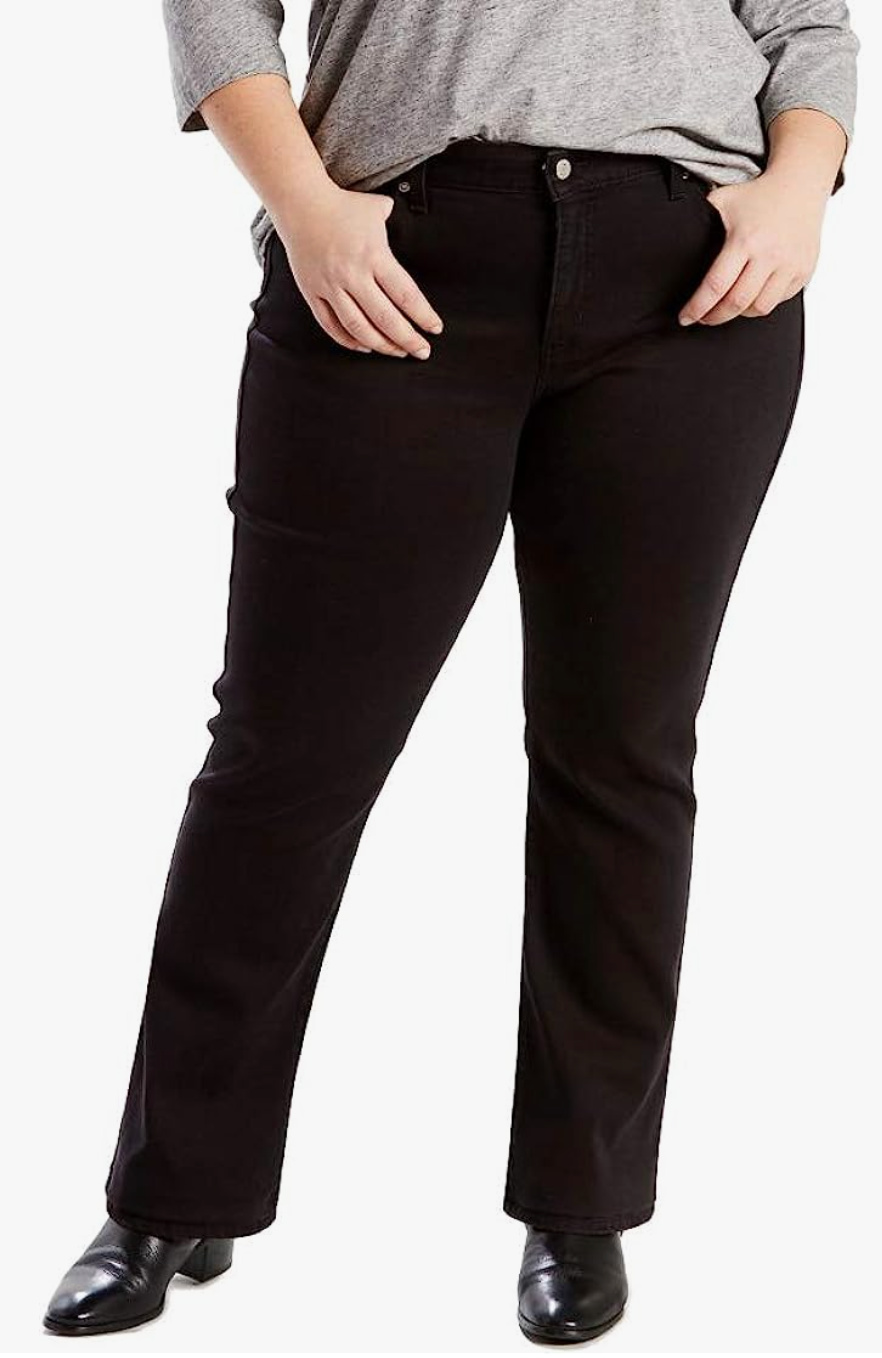
Shop Sizes 26-40: Levi’s Classic Straight Jeans
Can you wear jeans on safari? Jeans are a must, especially if you’re traveling in the winter! Sometimes the best women’s safari clothing isn’t necessarily the most technical travel gear. Jeans are not only practical, but they’ll provide you with warmth disguise dirt, and also give you a bit of style if you make a top in a major city like Cape Town!
But make sure not to hand wash your jeans! They’ll take way too long to dry. Denim is practical because you can re-wear it constantly without washing it. Denim designers make them specifically for multiple uses, and it’s one of the main reasons that modern travelers pack jeans. Jeans are a must-have when it comes to what to wear on safari !
You’ll also want to have a comfortable pair of pants that you can wear around the campsite at night.
Safari Packing Tip : Make sure you’re packing light. You should need no more than 5 pairs of safari pants.
Best Safari Dresses

Shop Sizes XS-3X: Columbia Sportswear Freezer III Dress
A dress may sound like the exact opposite of safari clothing. But, it’s always good to have at least one dress that you can sport on the beach in Zanzibar or wear out to a nice dinner at Victoria Falls.
The best safari dress is a little black dress that you can dress up for restaurants or a fun night out in the city. This one by Columbia features wicking, cooling, and sun protection fabric. Plus it’s available in sizes up to 3XL.
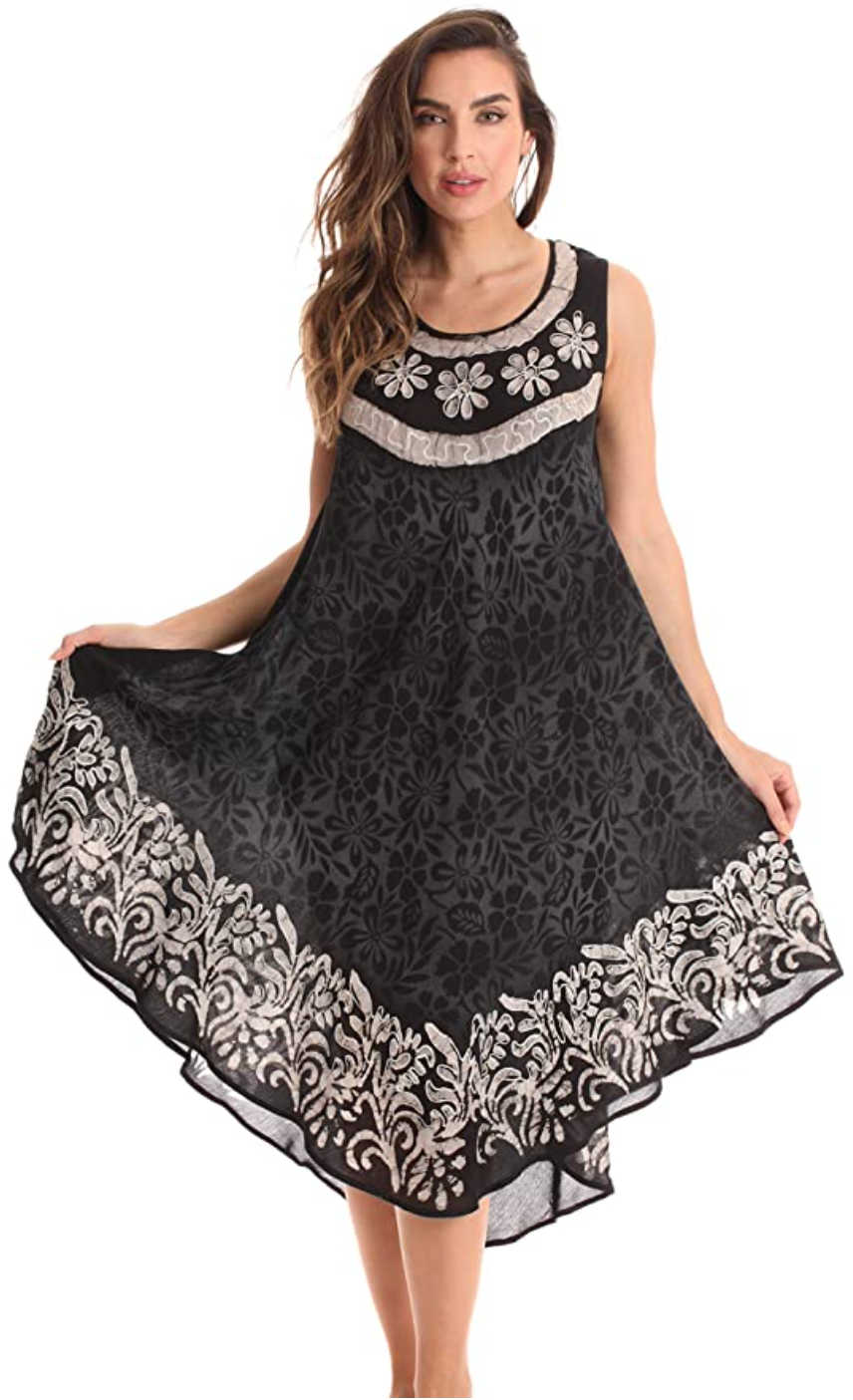
Shop Sizes S-3X: Riviera Sun Tie Dye Summer Dress
When it’s hot, a loose and lightweight safari dress is also ideal for those long overland trips. In fact, dresses are more practical than pants — especially when you need to stop on the side of the road for a quick bathroom break in the bush along with your fellow tour mates!
When it comes to picking the best safari dress, choose something both versatile and comfortable. When it comes to choosing what to wear on safari, you’ll want a dress that can be worn on the beach and doubled for dinner and night on the town!

Shop Sizes XS-3X: WEACZZYLoose Trapeze Dress
If you aren’t a person that’s comfortable in dresses, you simply don’t like them or you’re going to be traveling when it’s colder, a long tunic top that covers your backside cans also do the trick for those safari roadside bathroom stops.
Long tunic tops can be versatile just like a safari dress — you can wear it in the camp after a shower, on the beach over your bathing suit, loosely over a comfy pair of safari pants or tick it into your shorts for a cute but casual safari outfit!
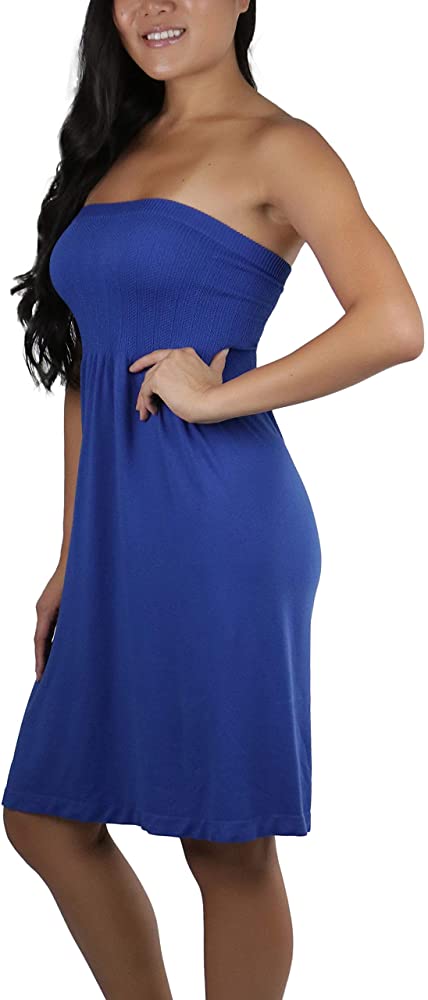
Shop: ToBeInStyle Strapless Dress
REALLY IMPORTANT TRAVEL TIP : WHEN PLANNING WHAT TO WEAR ON SAFARI, AVOID ROMPERS. ESPECIALLY ON AN OVERLAND TRIP FOR TRAVEL DAYS . YOU DON’T WANT TO HAVE TO PULL OFF YOUR ENTIRE ROMPER TO USE THE BATHROOM ON THE SIDE OF THE ROAD. NOT COOL .
If you’re something that has the same comfy and lightweight feel as a romper, opt for a strapless sundress like the ToBeInSty Strapless (seen above). You can wear it as a safari dress during the day for those long safari travel days or layer it over your leggings if it gets cold outside.
A strapless dress can also be worn as a safari skirt. Simply pair it with a cute top and dress it up with some jewelry that you find at a local shop during your travels!
Remember to avoid choosing bright colors on a safari so you don’t draw attention away from the safari (or frighten away any animals!). But if you pack bright colors in your safari wardrobe, you can wear them on travel days when you’re not on a game drive.
If you’re looking for maximum versatility, one of these convertible travel dresses might be perfect for your safari attire!
Best Safari Clothing for Cold Weather

Silk Undershirts | Silk Thermal Pants
Contrary to what you might think, it does get cold in Africa. That means that layering your safari clothes is key to surviving those cold African days. We’ve previously written about how to layer for cold weather , we’d highly recommend you take a peek before you start packing!
Regional climates in Africa vary throughout the season, so be prepared to encounter both hot and cold temperature. Make sure you always check the weather forecast before you go so you’re dressed right!
If you happen to be traveling during the cold season, from May to August, you might want to consider packing a set of thermals for women with your safari clothes so you can stay warm. You can wear them up to two weeks (or longer) without having to wash them!
Safari Packing Tip : For maximum warmth, pack one set of merino wool thermals. Especially if you’re camping in the winter!
Best Women’s Jacket for Safari

Shop Sizes XS-3X: Columbia Womens Arcadia II Rain Jacket
As you’re preparing your safari clothing checklist, make sure you pack a good jacket for safari. The roof and windows of some safari vehicles are open as you drive around the parks. With those open windows it can get quite chilly both at dawn and during night drives.
When you’re looking for the best jackets for safari, you should look for a good, quality jacket that can also serve as a windbreaker. You’re sure to feel a chill in the air with an open window first thing in the morning!

Shop Sizes XS-3X: Columbia Full Zip Fleece Jacket
A travel fleece or rain jacket for safari are most needed when you’re doing an African overland trip that crosses various countries. When deciding what to wear on safari, make sure you don’t underestimate how cold it could get in Africa on your trip!
While it might be hot and sunny during the day, when the temperature drops at night you’ll be glad you packed a rain jacket and fleece in your safari clothes. TFG has a list of the best windproof jackets and fleece jackets for your travels.
When you’re packing your safari wardrobe, make sure you pack both a windproof jacket and a merino wool or fleece jacket for safari clothes.
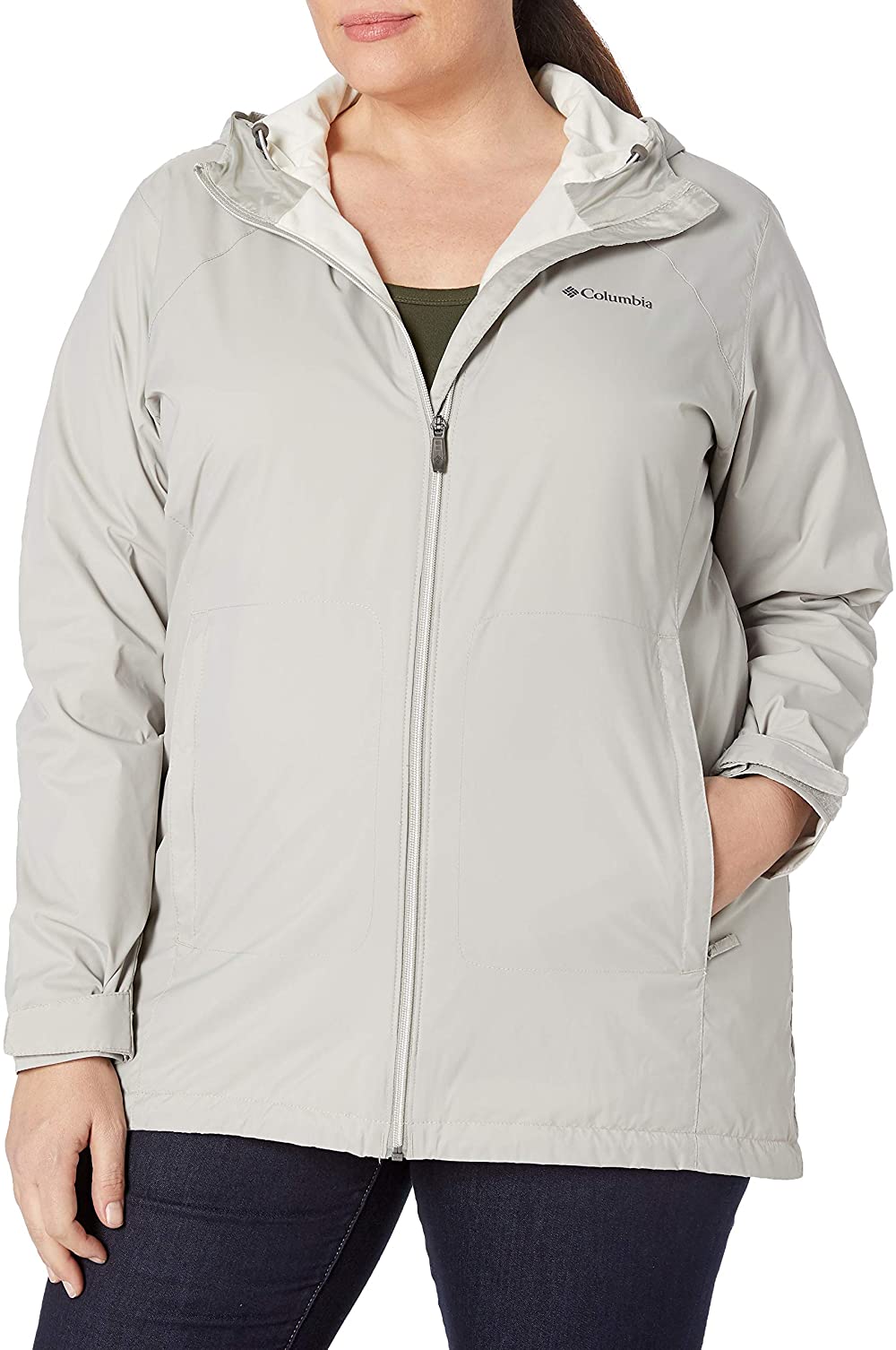
Shop Sizes XS-3X: Columbia Switchback Jacket
Remember to choose neutral tones for your safari clothing. This is especially the case for items that are highly visible such as your jacket for safari.
Trust me on this one. If you’re head is hanging out of a vehicle at 5:30am, you’ll feel the crisp morning air and wish you had a warm jacket — it happened to me!

Shop Sizes XS-XXL: Style & Co Safari Jacket
For a stylish jacket for safari option that you can wear as part of your safari outfit, the Style & Co Safari Jacket is both chic and practical. When it comes to choosing a jacket for safari that’s neutral, easy-to-clean and will hide the dust, go for the grey, khaki, or olive green color!
Best Safari Shoes

Merrell Moab 3 Vent Hiking Shoe
Now that you’re packed and ready with your safari clothing, it’s time to plan your safari shoes! This is probably going to be much easier than you think!
We recommend taking only two pairs of shoes. When it comes to picking those safari shoes, go with a pair of sneakers and flip flops (for camps, shower, and beaches). Your sneakers should be something comfortable you can wear on the truck, for occasional safari walks, and at the campsite at night if it’s cold.
However, if your safari itinerary includes walking safaris, you’ll need substantial sturdy safari shoes. For multi-day treks through the jungle, you’ll want to bring sturdy hiking boots . But for the occasional day trip, regular all-terrain sneakers or hiking shoes will work as safari shoes.
Ideally, you’ll want your safari shoes to be waterproof and easy to clean in case they get muddy or otherwise dirty.

FitFlop Iqushion Super-Ergonomic Flip-Flops
Flip-flops may seem like a random item to add to this safari packing list. But it’s nice to air out your toes if you’ve had them in sneakers all day. Flip-flops are also great safari shoes as they’re convenient to wear in camp showers. And don’t forget about the beach!
Not a big fan of flip-flops? Try one of these slip-on beach sandals as your second pair of safari shoes instead. Throw in a pair of cute ankle boots or stylish slip ons if you’re traveling in Cape Town .
But make sure not to add too many shoes to your safari wardrobe!
Best Safari Socks
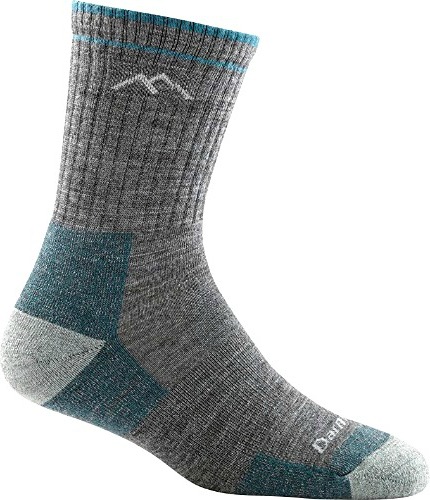
Darn Tough Crew Socks
Whether you need to pair your socks with safari boots or sneakers, make sure they are moisture wicking socks ! This is particularly important so you can keep your sock numbers down.
I know we’ve mentioned merino wool a lot, but just as with the rest of our suggested safari clothing, merino wool socks are perfect to pair with your safari shoes because you can rewear them multiple times without having to wash them.

Signature Trail Sock
Several TFG readers agreed that Kirkland’s merino wool socks are a great pick to add to your safari wardrobe. One reader says, “I wash them in cold water and hang them to air dry, but they have held up really well and keep my feet warm, too.”
If you’re camping, you can bring a pair of Kirkland socks (like the ones shown above) to keep your feet warm at night. If you choose dark colors or prints they won’t show the dust as easily.
Best Bras and Underwear for Safari

Panache Underwire Sports Bra
Last but not least for your safari travel checklist, make sure to pack a good sports bra for the bumpy journey! Vehicles in Kenya, and other countries, often cover all terrains including deeply rutted roads and huge potholes.
Make your ride more tolerable by wearing a sports bra whenever you are being transported. Also, take some motion sickness meds beforehand if you are prone to car sickness.

Icebreaker Bikini
Also, quick dry travel underwear helps you easily do laundry without having to wait ages for it to dry!
Because you may be moving locations every night, you won’t have much time to wash your safari clothing, so it’s best if you bring fast drying fabrics or clothing you can re-wear easily.
Safari Travel Tip: Most of the time, you’ll be popping a squat on the side of the road, so a female urinary device or even a flowy skirt might be helpful if you’re not crazy about the idea of flashing your goods. Don’t forget your antibacterial hand wipes!
Other Safari Gear

UPF 50+ Sun Protection Quick Dry Baseball Cap
TFG has a great post on what to pack for African safari tours that we’d highly encourage you to check out so you know what other safari gear you’re going to need on your trip!
To go along with your safari clothing choices, you’ll need a few accessories.
Hats are great because they can help shield you from the sun and hide unwashed hair. But while hats are a definite must, but that doesn’t mean they have to be unattractive.
When it comes to your hair, you will want to keep it covered and pulled back in a ponytail or bun so it doesn’t get tangled in the wind and full of dirt from the road. We have a few suggestions for some hair accessories that will help keep high maintenance hair on the down low during your safari tour.
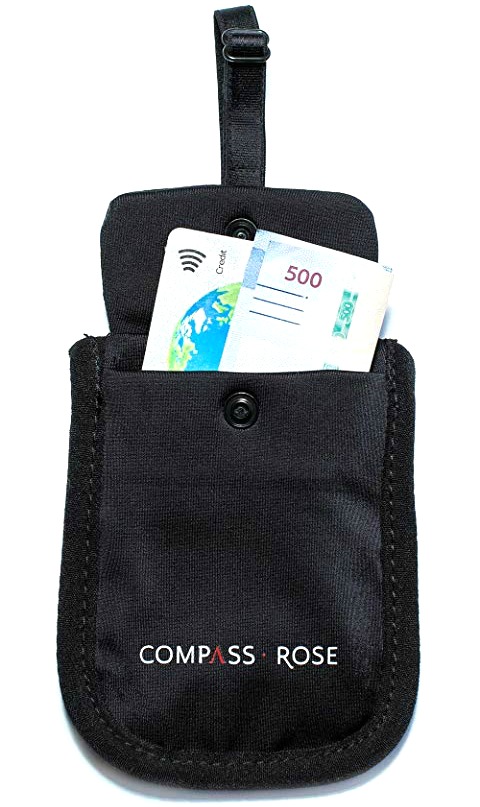
Compass Rose Secret Bra Wallet
Sunglasses are also a must-have, they offer shade and protection from the sun which is really important considering how close to the equator you’re going to be! A few other safari necessary accessories include a bathing suit and scarf.
Don’t be a target for unwanted attention. When you choose what to wear on safari, make sure you don’t dress too flashy or showy. Make sure you don’t bring any of your expensive jewelry and leave your designer handbags at home (or another safe place).
Finally, conceal the majority of your money and extra credit cards for extra safety. This bra wallet is a great way to do that!
We’ve got some great anti-theft tips for you so you can protect your valuables during your safari travels.
Essential Packing List for Safari

Osprey Fairpoint 55L
Which luggage should I choose for safari?
When it comes to choosing luggage for safari, check out the Osprey Fairpoint 55L . It’s kind of perfection.
I found it easier to lug a soft bag than a suitcase, as everyone’s gear gets piled up under the truck. I personally use it with the Compass Rose packing cubes to stay organized and fit in everything!
Don’t worry so much about the baggage weight. My bag never goes over 30 lbs using the guidelines suggested on the site. If you aim to pack light, you shouldn’t be overpacking!

Compass Rose Travel Packing Cubes
Should I use packing cubes on safari?
Yes! You should definitely use packing cubes on safari. Packing cubes will help keep you organized, keep your bag light, and help you avoid over packing.
Watch this video to learn how to pack light thanks to packing cubes!

pStyle Urinary Device
What should I pack for toiletries on safari?
When it comes to what you need to pack for toiletries on safari, there are a few things you’re definitely going to need.
You definitely will want to have a female urinary device , because the only bathroom breaks you get are in the bush. Finding adequate coverage can be a challenge, so you might also need to get comfortable with flashing your bum at other women on the trip!
You’ll want to bring a travel towel so that it can dry quickly when you’re constantly on the go. You should also pack any prescriptions you might need along with mosquito repellent … don’t forget that! And while it’s not exactly a toiletry, you’ll want a collapsible water bottle , too!
If you’re going to go the carry-on only route, make sure you cut back on your toiletries. It’ll help with TSA if you put all of your liquids in a Ziploc bag, following the 3-1-1 rule !
Learn all about packing toiletries with this guide !

Travelon Anti-Theft Cross-Body Bag
What should I take for a purse on safari?
You’ll want to choose a bag that can fit into your carry-on when it comes to the perfect purse for safari. TFG recommends taking a crossbody travel purse with anti-theft features like the Travelon Anti-Theft Cross-Body Bag bag or other similar purse.
See our picks for the best anti-theft purses for travel .

Lewis N. Clark Deluxe Neck Stash
What anti-theft accessories do I need on safari?
We recommend you make sure your purse is built for security. Other great anti-theft accessories for safari might include a secret bra wallet , neck wallet , or even a money belt.
Read about popular anti-theft accessories !

International Travel Adapter
What electronics do I need on safari?
A headlamp will be a lifesaver when it comes to camping at night during your safari.
A few other things that might come in handy include a travel adapter , portable battery charger , and your headphones . Plus, if you’re planning on taking any pictures, you’re going to need your camera and gear!
Printable Travel Checklist

Don’t forget to download the TFG Printable Travel Checklist
The Dos and Don’ts of Safari Clothing Packing
Packing for your African safari can seem overwhelming, so let’s finish off by going over our main dos and don’ts when it comes to getting together your safari gear and planning your safari attire!
What should you not wear on safari?
What you shouldn’t wear for an African safari depends highly on the actual trip type that you’re participating in. An overland trip that touches on a variety of countries is going to mean different must-haves from a short safari to Kruger Park that’s smack in the middle of a longer trip.
If your African safari trip is long, you’re going to want to focus on making comfortable, practical safari clothing a priority. But if you’re headed on a short three-day trip, you can definitely get by with wearing regular clothes.
But for both trips, we highly recommend that you DO NOT wear a romper on a safari — three days, seven days or otherwise. We know that we’ve mentioned this before, but it’s such an important note that we want to talk about it in a little more detail!
When you’re on an overland safari trip, it’s common place to simply pull over on the side of the road to go to the bathroom — in public — as there really aren’t bathrooms along the way. The reason why we stress that you shouldn’t wear rompers is due to the fact that going to bathroom in a romper means taking all of your clothes off to go to the bathroom.
While you might be able to find a somewhat “discreet” spot in the pushes to pop a squat, you’ll still be pulling off your entire romper in public and it’s much harder to attempt to conceal the top and bottom half of your body at the same time. It’s much easier to focus on covering your backside.
We know you’ll thank us for this advice later!

What colors should you wear on safari?
As exciting as it is to experience nature in its rawest form, you don’t have to immerse yourself to the extent that your safari clothing completely blends in with the foliage and desert itself. We can leave that for the Hollywood movies!
With that in mind, the best colors for safari clothes include:
- Olive green
A tip for picking the best color for your safari clothing is to go with colors that are inspired by nature. Measure your clothes with the image above, if they’re in the same tone, intensity and relatively the same color they’re good to go. You’re looking to blend in, but you don’t have to look like Crocodile Dundee or wear full tactical gear!
What color should you not wear on safari?
If you’ve done your safari clothing due diligence, chances are you’ve come across something that tells you not to wear bright colors. It seems like a strange request, but it’s recommended that you choose neutral colors because you don’t want the animals to see you — if they do they might be scared off!
Stick to neutral colors but avoid white because your safari clothes are bound to get very dirty, especially if you’re camping, and white will show it all!
Can you wear black on safari?
Wearing black on safari is not recommended. Black clothing attracts mosquitoes, and you’ll want to avoid that as much as possible to keep your trip its most enjoyable!
If you do end up bringing some black pieces, keep them to a minimum and opt for lightweight fabrics wherever possible!

What are your tips on choosing the best womens safari clothing? Share and comment below!
For more Africa packing lists, please read:
- What to Pack for Safari: South Africa to Zimbabwe
- What to Pack for Africa: Safari and Beaches
- Africa Travel Packing Tips
- 10 Essential You Absolutely Need for Safari
Suggested Travel Resource:
- Lonely Planet Tanzania
- Lonely Planet South Africa
- Lonely Planet Africa on a Budget
LIKED THIS POST? PIN THIS PIC TO SAVE IT!
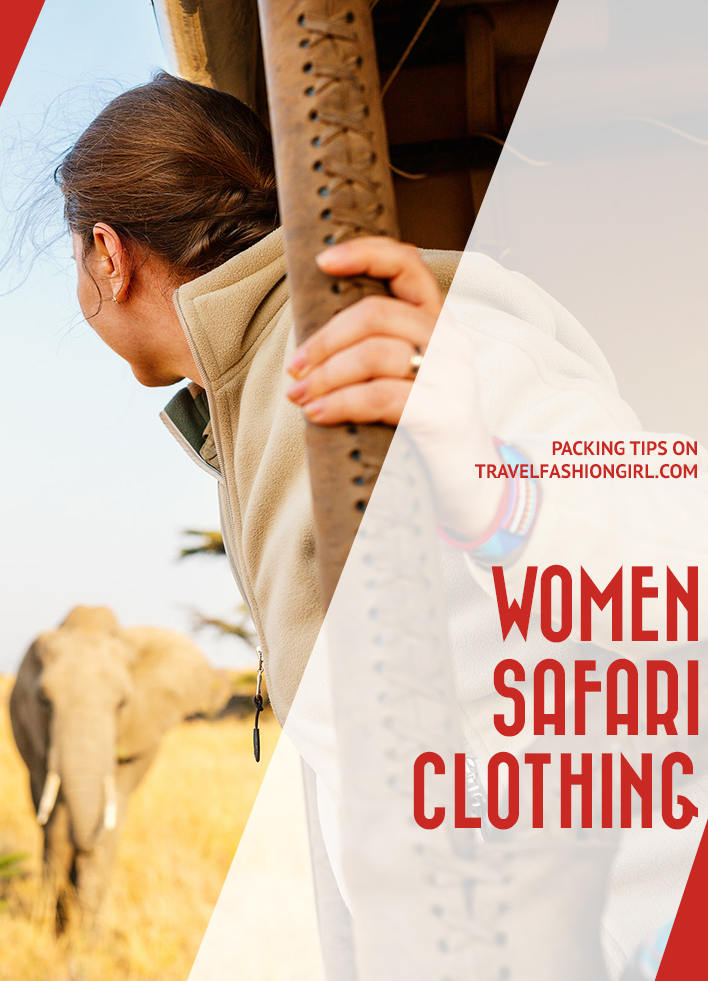
Hope you liked these safari clothing women’s tips. Don’t forget to share this post on Facebook, Pinterest, or Twitter. Thanks for reading!
63 comments.
I’m going on a safari next week, and the packing list looks like it would be a lifesaver, but I’m getting an error that the page is unavailable when I click on it. Anything I’m missing? Thanks!!
Hi Amy, I am so sorry about this. Please can you email us at [email protected] so we can send it over to you.
Have a wonderful time on your Safari!
On August 2, 2022, Just got back from South Africa; Cape Town, Cape Winelands, then off to safari at Kruger; Victoria Falls, Zimbabwe; Botswana, Okavango Delta! It was a great 12-women trip, Women, Wine and Wild. I researched and looked at this site for everything from suitcases, carry-ons, cross-body bags, packing, lists of clothes, shoes, jackets, underpinnings, toiletries, hats, scarves, etc.; for varying types of travel, city, winelands, safaris, and Travel Fashion Girl came through on all fronts – I was ordering things left and right even in the last few days and got it all together and had the most wonderful trip. I may have taken a little too much, but I really used most everything I brought so it all worked out. But as they say, less is more; I wouldn’t bother even with a little heel for dinners out if it’s only a few night in a city. I wouldn’t take as many pants as those can be interchangeable pretty easily, especially if you bring a few blouses/tops. For chilly mornings or evenings, a lightweight puffer jacket was perfect. And scarves are perfect to help mix it all up and really be able to wear the same things with different scarves. TFG is an amazing place to go for everything travel; I love it!
Just got back from our 3 week honeymoon on safari in Kenya and Tanzania including a week in Zanzibar – these packing lists from TFG were so helpful for knowing what to expect and helping to minimize how much luggage to bring. Definitely recommend carry on backpack for this trip to fit in the small trunks of the land cruisers and for small airplanes (we took one with only 12 seats!)
This recommended packing list was just what I needed for a 10-day safari in Tanzania.Thank you 🙏
Someone recommended we take soft travel bags to fit onto the small airplanes which I would NOT do again. Due to their weight, it made the grueling trek through airports a painful experience 😣 Instead, we would have preferred rolling, carry-on luggage. My two-cents, but unless you travel lightly, soft bags aren’t the way to go for this type of trip. Anyone else?
Thank you for sharing your own feedback with us Tracy, this is really helpful to know. Hope you had an incredible time!
It was an incredible time, thanks Alex! Would love to go again 😀
Loved this packing list! I only went on a two day safari but this was immensely helpful with helping me choose the right clothes to pack for a conference plus my safari outing.
We’re just back from a Safari in Zimbabwe , Botswana and Zambia And I found previous posts on Safari clothing on this site invaluable! And def no all in ones ! We stopped for loo breaks whenever needed and took it in turns to go round to the back of the truck so it was totally private and discreet! I took very thin summer dresses for the middle of the days and was really glad of these . And we definitely needed warm things for early morning … I had a cashmere snood I was so thankful for … I could pull it up over the back of my head . Also silk gloves ! And it was the best holiday we have ever had !
Thank you so much Julia, so glad we were able to help you with your packing. And thank you for sharing your packing insights with us, these are all super helpful.
So pleased to hear you had such an amazing time!
Just came back from a trip that included: Capetown; The Winelands; Vic Falls; Chobie game drive in Botswana; self drive through Kruger; and a luxury resort/safari game drive; — oh yeah and we had a two day stop over in Doha (!) So we had temps that ranged from 50-65 degrees in Capetown/Winelands; 55-85 in Kruger, and 98-112 degrees in Doha (!)
So one big thing to consider is that the weather is vastly different depending where you go: Capetown in July is Winter, which is chilly and drizzly, can be windy and stormy, BUT because it’s their winter, it was the best time to go on Safari on the other side of South Africa, which was Great Kruger National Park, so just remember, your season might not be their season. Best safari pants I brought was North Face Hybrid Yoga/cargo pants in olive — stretchy, quick dry, had tons of pockets, but felt like leggings. Also the lululemon “Smooth Departure” packable rain coat. Ultra light, and looks good while on safari or in the city. Lastly, even if you go during a “light bug” season, I would recommend at least one Insect Shield SPF long sleeve top (that can be also rolled up) and at least two pairs of their socks. Long sleeve shirts that have SPF can keep you cooler than a t-shirt because the African sun is HOT!! And even if you come from a sunny state (Like CA, as I do) your arms can get really get burnt. Also, a first layer underlayer (for cold) can do double duty. I wore it over my bathing suit while I was going into Devil’s Pool (Victoria Falls), and it really saved me because the water was COLD!! Because it was dry-wicking, it dried almost immediately. Also, just a note: our safari guides would NOT have recommended wearing that bright turquoise jacket that’s pictured in the photo (especially on a walking safari) — maybe it was more “neutral” looking in real life?
Hi Victoria, thank you for sharing your trip report with us and all your great travel tips! This is really helpful. Hope you had an incredible time on your trip! ?
Thank you for the advice! I am looking to travel to Togo, Africa at the end of January 2020 for roughly 2 months. I think the best take away for me I hadn’t really considered is laundry and drying time! I tend to get hot, sweat a lot and very easily. I will let you know how it goes!
Hi Mari, so pleased you found this atricle helpful. Looking forward to reading how you get on. Have the most incredible time! ?
Hello, we are going to Ezulwini Lodges in the middle of March. I have struggled over what to wear and what essentials I should take. I have loved reading all of your comments over the years and am finally taking a 7 night trip there. We are also going to spend 2 night in Maritime Bushveld Estates. Any thoughts on attire?
Hi Jody, thank you for your lovely comment, so pleased you enjoy reading our blog!! 🙂 For other tips to help with your packing for your safari, have a read of this article: https://www.travelfashiongirl.com/what-to-pack-for-african-safari-tours/ You may also find this article interesting, its about how one TFG reader packed carryon for her African safari and how she also was able to keep the weight to below 10lb: https://www.travelfashiongirl.com/safari-packing-list/ Also our readers have the best advice and tips, so I have gone ahead and posted your question on TFG’s facebook page. Keep your eyes out for our readers replies from Wednesday: https://www.facebook.com/TravelFashionGirl/ Hope this helps. Have an incredible trip!!
Hi Jody, here is the FB thread with our readers replies to your question: https://www.facebook.com/TravelFashionGirl/posts/2240284559328533 Hope this helps! 🙂
Thanks so much for sharing this Alex! It’s really helpful . Well, I’m going to Tazania in mid of December. Plan a week in there, there are 2 days will be soft hinking with group. Any tip of packing for specific December weather. Please advise! Thanks in advance,Tracy
What shades of blue need to be avoided? Just dark blue or also aquamarine/baby blue and royal blue? How about lavender? Thx!
thank you for this very inclusive list. I appreciate all the work and effort to provide this resource.
YES it gets COLD, even in summer! Keep in mind that some local flights out into the bush have a weight limit on luggage so double check on this- they’re strict! Also, some safari’s do laundry daily so that helps cut down on what you need. I survived a 2 week trip with 2 pairs of leggings, 1 hiking pant from Athleta (cute!), 1 pr of shorts, 5 shirts, (mix of button ups, tanks and athletic type t’s) a fleece and a windbreaker. Don’t overdo the shoes either! One pair of sneaker types and one pair of sandals is fine!
Great tips Megan, thanks!
Great article! Having lived in Africa for the past nine years, I might also advise against wearing shorts. Most of Africa is significantly more conservative than many Western countries, and the only people I ever see in shorts are the tourists and, at times, wearing anything cut above the knee can attract unwanted attention from males- an unfortunate but true reality
Hi Emily, thank you so much for your comment! Thank you for sharing your travel advice 🙂
Hi Alex, Emily’s comment about shorts also might include strappy tank tops and leggings. Your comment about wearing sports bras was right on. Safari trucks have lousy shocks and you will be bounced around. A scarf is useful for keeping dust out of you eyes and mouth.
This really helped me on my recent trip to Kenya and Tanzania. Thank you! 😊
Love your posts! What kind of shoes do you recommend? Are light nike trainers enough or do you need sturdier shoes that are waterproof? I am going on an overlanding trip to South Africa, Namibia and Botswana in July, not to many walking safaris scheduled. Thanks!
I found my regular cross trainers worked well as we only had one walking safari. A few more tips here: https://travelfashiongirl.com/what-to-pack-for-african-safari-tours/
We are going to Tanzania Zambia staying in lodge accommodation at the end of November,we are on the older side but are fairly fit. What clothes should I take..?we have a black tie do to attend in Zambia.I like clothes with sleeves
Try this: https://travelfashiongirl.com/what-to-pack-for-kenya-and-tanzania/ and https://travelfashiongirl.com/what-to-pack-for-africa-serengeti-zanzibar/
We are going to Cape Town for 4 days then winery for 4 days, safari for 5 then victoria falls. Will it look silly if I wear kaftans for dinners? And what about days for shopping and touring in towns? I can’t imagine having only a carry on and not a variety of clothing.
If you’d normally wear kaftans to dinners at home then you should wear them while you’re traveling too 🙂
No blue clothing, as it (like black) attracts mosquitos. Bring decent underwear, something you won’t be embarrassed for camp staff to wash by hand, as I found one fellow doing. You’ll wear the long-sleeve shirt in the jeep during the afternoon so you don’t get sunburned. Unless you’ll hike, closed-toe sandals are good for everything. I wore clogs for the plane and around camp. Glad I brought a fleece jacket for cold mornings. I brought older clothing and left it. In Tanzania, I left sneakers with a camp staffer who was extremely grateful, even though they were one size too big for him. To my safari driver went my bathing suit and robe (someone will wear them), fleece jacket, and old Tevas. I suggest a headlamp, which you may need (tents and hotels were short on light).
Thanks for your feedback Emmy, great tips!
I would add one trash bag to the packing list. In the morning game drive on our last day of the safari, it rained cats and dogs on us, and we got soaked (we all had rain ponchos on but they didn’t help much). Thankfully, someone had trash bags to spare, so we could put the wet clothes in the bag and put in the luggage without everything else getting damp.
That’s a really great tip Midori! thanks for sharing!
Is there a printable safari packing list so I can have it with me shopping, in my closet and when I am actually packing? Thanks
No printable option, maybe take screenshots of this post to help? Happy travels!
I have been to Tanzania (with way too many clothes) and am heading back to Africa for a trip to Cape Town, Namibia, and Victoria Falls. Your packing list suggestions are very helpful as I tend to grossly over pack! Thank you!!!
Thanks for reading Cathy! Sounds like you have an incredible trip planned! We are happy that you have found the packing suggestions helpful! Less stuff is less stress! Happy travels!
Great tips! What size bag did you pack? We’re going mid-July for 3 weeks, and will be spending several days on Mauritius at the end of our trip, so I’ll need to take a few things to dress up a bit.
Hi Cynthia, glad you like the post! This was before I traveled carryon only so I had a 65L backpack. However, I was on a round-the-world trip and had been traveling for nine months before I got to Africa.
Currently, I would never travel with anything larger than a 22″ or 46L suitcase since that’s what I use on my long-term travels now 😉 All the luggage styles Ive used throughout the years can be found here: https://travelfashiongirl.com/best-osprey-backpacks/
This post will help you downsize your suitcase as much as possible: https://travelfashiongirl.com/10-step-packing-guides/10-step-guide-to-packing-in-one-suitcase-for-any-trip/
You can find more tips here: https://travelfashiongirl.com/africa-packing-lists/
Have a great trip!
Can you tell me the name of the hiking shoe in the above pic? Thanks
Hi Jennifer, the shoe is the Merell Calia found here http://amzn.to/1Abb4Js
For more ideas, please take a look at: https://travelfashiongirl.com/best-hiking-boots-for-women/
Could you tell me what brand of hiking shoe is shown above? Thanks
Just got back from an Africa safari, and here is my recommendations: 1.) Take Sunscreen! I burned one half of my face sitting in the safari vehicle one day…so I switched sides to burn evenly the next. 2.) A hat would help combat problem #1. 3.) Don’t waste space on hair dryers or makeup etc. No one in the bush cares. 🙂 Bring soap, shampoo, toothpaste and call it done. 4.) I only brought hiking tennis shoes. I longed for a pair of flip flops on the long days in a car. 5.) It can get quite chilly at night. Bring long pants for sleeping if you are staying in a tented camp. I was on my honeymoon so pajama’s wasn’t a top priority when packing…wish it had been! Lol! 6.) Bring a clean outfit for the plane ride home and put it aside. Coming out of the bush after a week of bucket showers you feel dirty enough. 7.) Last and most important: Don’t pack anything that resembles food in a tented camp. I had a granola bar in my bag and we had a honey badger break into our tent while we were gone. It ate the granola bar, chewed up all my underwear, and then took a big poop in my husbands suit case!
Great tips Kate, thank you! Hope you had an amazing experience 🙂
At least one knee length skirt or dress is a must if you are going to be exploring outside of the parks at all. A sarong also goes a long way and I have a nice knit hat I alway bring along in the winter. Also, the first time I traveled to Tanzania I made the mistake of thinking I would only need camping gear and spent the whole time wishing I had a cute top with me. I highly recommend bringing an outfit you can wear to dinner or a club. Overall, great tips! Thanks!
Great add! Thanks 🙂
Thank you so much for this post! I have been searching everywhere for something like it and it’s perfect! I’m off to fashionable Dubai & Iran after overlanding in Africa, so I’m trying to figure out a way to keep my suitcase light AND have enough clothes that are fashionable and practical! I reckon a few colourful scarves may be the way to go, and one long black skirt as well as the above.
That sounds about right! You can always buy a few new things upon arrival. This post might also be helpful: http:/travelfashiongirl.com/how-to-dress-for-conservative-countries-modest-clothing-essentials/
I am not sure if you have already gone trekking or not, but I might consider changing your black skirt to tan, beige, grey or even light pink. I spent two years in and out of Dubai and Afghanistan….you will constantly be trying to clean your black skirt, the sand is more like a talcum powder and sticks to everything, also the dark colours are hot! You will definitely want something feminine/girlie though and the scarves are an excellent idea! Have a wonderful time! 🙂
great tips!
I love all your posts! One question, do the outfits go in addition to what you will be wearing or do you wear one of the outfits in the photos? Thanks!
Hi Catherine! Sorry, which outfits specifically? Thanks for commenting 🙂
I think she means are the clothes pictured above ALL of the clothes for the trip, as in, are the clothes that you would be wearing on the way there and back included in the picture.
yes they are
As always, love, love, love the lists! In all parts of Africa, it’s best to always err on the side of modesty and cameo prints should always be avoided. On safari, it would be worth spending the extra money for clothing that is sunscreen rated/treated with bug repellent.
Thanks Vanessa!
Love that you show a sports bra – those African roads can be amazingly bumpy!!
Yes and painful without support! Ouch!
I always bring gloves with me when I’m in Africa. The morning game drives are always cold.
Oooh that’s true! Forgot that one…thanks for the reminder 🙂
Submit a Comment Cancel reply
Your email address will not be published. Required fields are marked *
Save my name, email, and website in this browser for the next time I comment.
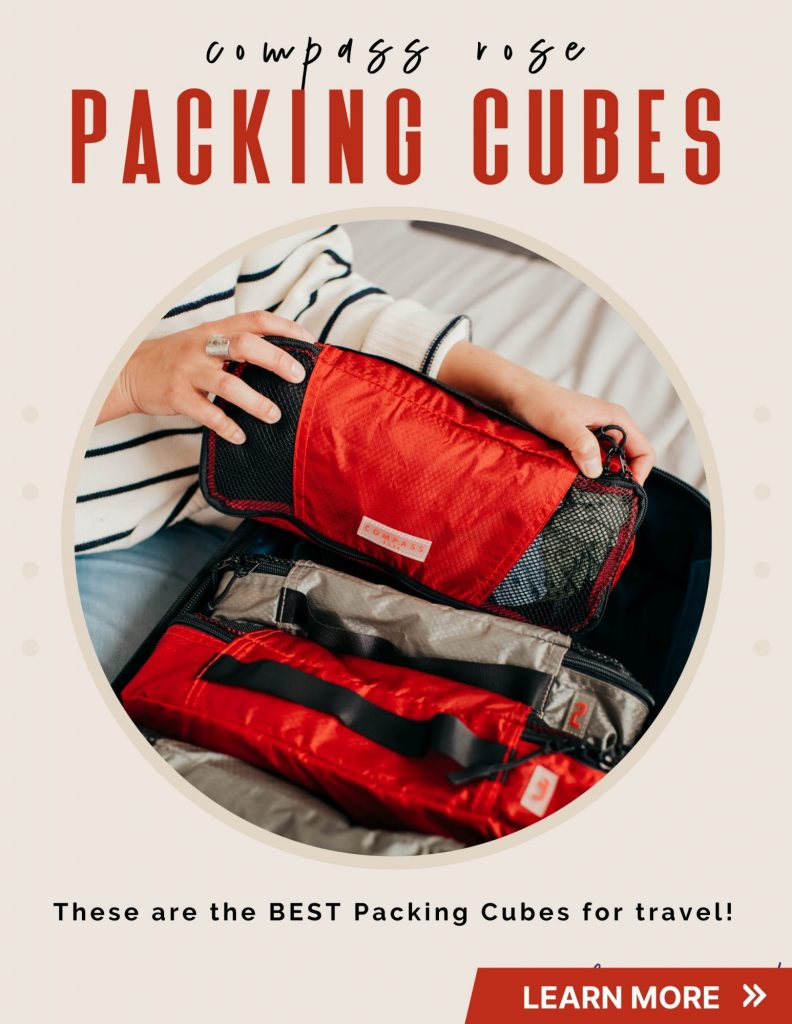
Best safari clothing: brands, clothes & tips for African safaris

You’re off on safari! You’ve done all the research , purchased the guide books , and the tickets are hot in your hand.
But most importantly, you’re getting ready to pack your ultra-light bag with everything you’ll need for your trip of a lifetime.
You’ve read all the advice you can handle (perhaps even this post on how to pack for safaris for your African bush adventure).
But when it comes down to the line, you still have no idea whether your favorite sweater is going to be a help or a hindrance, if you should pack jeans, how many pairs of socks are enough, and what on earth to expect once you are out in the wild.
What to wear on safari is something of a conundrum , the answer to which is entirely dependent on whether you are a complete slave to fashion and constantly worry about your appearance.
Or whether you don’t care if your trousers absolutely match your shirt and if your shoes co-ordinate properly with your camera bag.
So, in a bid to help sort the wheat from the chaff when it comes to safari style, this guide aims to highlight the best safari clothing brands and tips for your next trip to Africa .
African Safari Clothes: 7 Useful Tips
The African savanna has seen virtually every take on both the best and worst dressed safari goers , including some of the most practical and impractical safari gear around.
This includes everything from haute couture animal prints hot off the Milan catwalk, to Prada stilettos getting stuck in between the slats of wooden decks, and $300 silk scarves ripped to shreds by thorn bushes.
There are also tales of wild baboons getting hold of Victoria’s Secret lingerie and leaving it draped for all to see high in the branches of an acacia tree.
There are plenty of stories about complete wardrobe disasters—but to ensure you’re not one of them, here is a list of useful tips on how to dress for safaris .
1. Leave the luxury safari clothing at home
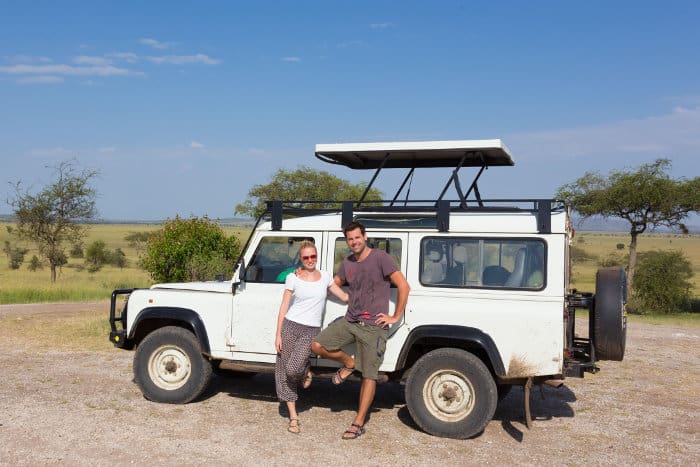
Lesson 1 in safari style is to NEVER take your best clothes into the bush .
If you find a pair of shorts, trousers, or a top you love and know that it would break your heart to have it ruined on safari, it’s probably best to leave it at home .
Instead, look for clothing that is specifically suited for the wild . And if the item comes in different colors, buy the range!
This way, over the years, you’ll acquire a variety of clothes which come everywhere with you. Look out for clothes that you can team together to create practical yet stylish outfits.
2. Keep your clothes for safari simple
Lesson 2 is learning how many of each item you will need . As a rule of thumb, always go with four of the basics.
Four pairs of shorts , four pairs of cut-off pants , four string vests , four t-shirts , four pairs of long pants , four button-through shirts (two of which are long-sleeved), four sets of underwear , four pairs of socks … you get the drift, I am sure!
When traveling in winter or during the colder months of the year, add to this scenario two lightweight long-sleeve t-shirts and two knitted sweaters , plus two fleeces or warm jackets , thermal long johns , gloves , a scarf , and a beanie .
When considering your safari apparel, ALWAYS pack a swimsuit and a couple of sarongs/kikoys . Even in the winter, it’s usually warm enough to suntan during the day and sometimes even swim.
3. Your safari wear should include comfortable shoes
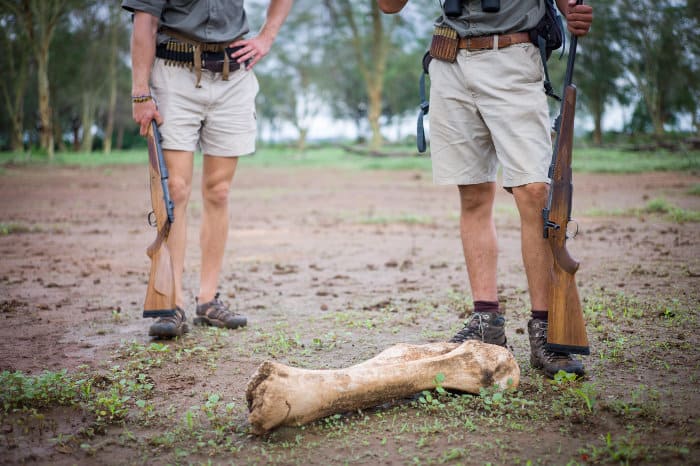
Lesson 3 concerns footwear . In the heat of the summer, it is best to pack at least two pairs of “bush slops” – flip flops (thongs) which are heavy-duty, waterproof, and good enough to handle walking in the light bush for game drives.
You may also need two or three pairs of fashionable flip-flops or sandals for around camp and evening meals, and a pair of good walking shoes ( Merrells ) for walking safaris.
In the winter, replace the walking shoes with walking boots and add a pair of lightweight faux-fur lined “trendy” flat boots for evening wear.
4. Safari fashion: accessories
Accessorize – that’s the key to lesson 4 – it’s the difference between a good safari wardrobe and a bad one. Two or three lightweight colored scarves and/or wraps are a must in any safari bag .
Usually, they have beadwork or applique of some description on them. These are useful for dressing up even the most conservative safari outfit—great if you’re looking to add a dash of glamor to your evening meals. Team them up with a couple of great “ethnic” bead necklaces and earrings .
Another essential item to include with your safari attire is a hat —and these can most certainly be fun. Pack in a couple of lightweight, floppy straw sun-hats, as these are great for game drives or tiger fishing.
Another good option is the usual peak baseball-style caps.
5. What to wear on safari – quality
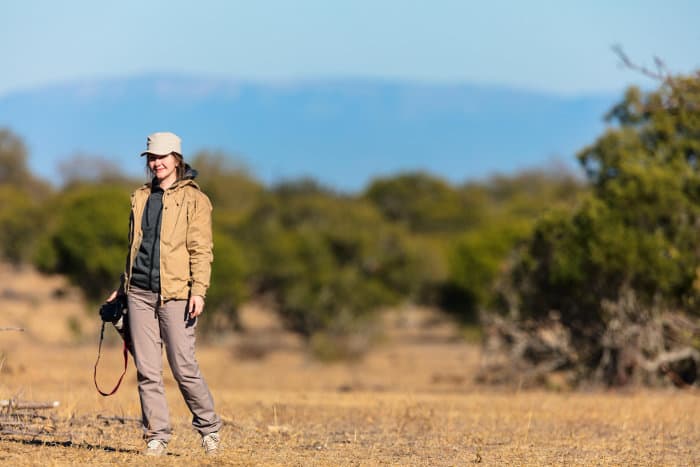
Lesson 5 is all about quality . Everything you take into the bush with you needs to stand the test of time.
This includes the elements of the African wild, the rigors of hand-washing, and bumping and grinding in the back of a safari vehicle halfway across Africa.
So it’s important to check your clothes before you pack to make sure they can be hand-washed, aren’t going to fall apart the first time you wear them, and are not likely to fade too drastically when hung in the sun to dry.
The material of your clothing is also important. When out in the wild, it is best to stick to strong natural materials like hemp , linen , leather , and wool .
Nylon and polyester also tend to provide adequate protection against the elements.
6. Best safari clothing brands
Wondering where to buy safari clothes? Most of the high-street fashion chains carry good quality fashionable safari clothes which will stand up to the average safari conditions.
As such, you may be able to avoid the need to go to specialist outfitters and camping/outdoor stores where things tend to cost a lot more.
And, of course, the big brands like Jeep (a favorite with safari goers because their clothes are practical, hard-wearing, and pretty at the same time) and Cat always have some great clothes for safaris—including some of the best safari shirts.
In addition to these, here are several more reliable brands to consider when buying safari clothes:
- Columbia — this is a good option for those seeking affordable safari clothing that is still good quality.
- First Ascent — if you’re buying safari clothes in South Africa, keep an eye out for this brand as it offers some excellent quality clothing.
- Patagonia — while the brand is more expensive, they provide some of the highest quality outdoor clothing and gear on the market.
- REI — if you’re shopping online, REI is often the go-to for outdoor gear. Their house brand is affordable and offers many items that will serve you well on your safari.
- Ruggedwear — proudly South African, it is an official partner of the Field Guides Association of Southern Africa (FGASA).
- Sapmok — footwear for every adventure. Comfy. Durable. And stylish.
7. What color clothing for African safaris

Finally, lesson 7 concerns white . Do you take white clothes into the bush with you? Hell yes.
As long as you don’t expect them to remain white for long and can accept the fact that no matter where you wear them, they’re bound to get a little dirty. It’s more or less a bush essential in my book because it reflects sunlight , keeps you cool and goes with everything .
Everyone says, “don’t wear white on a safari vehicle,” – but this is far from the truth. However, white isn’t the only color that’s good for safaris.
When dressing for safaris, the basic color range is simple: khaki , beige , white, and brown (or variations thereof).
Avoid black and blue during the day because they attract tsetse flies .
But do occasionally take these colors for evening wear when the tsetses have gone to bed.
What to Wear on an African Safari: Checklist
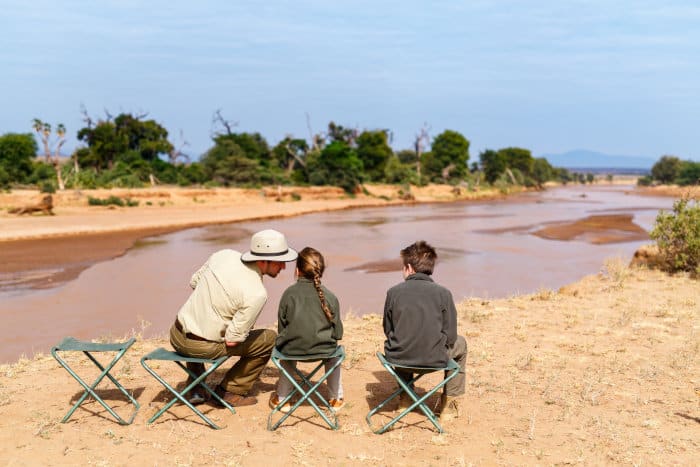
Now that you’re all clued up with what to consider when deciding what clothes to wear on a safari, it’s time to pack.
Here’s a checklist to ensure you don’t miss anything.
Africa safari clothing list
Below are some of the most essential pieces of clothing to bring along on a safari:
- 4 safari shirts
- 4 casual t-shirts or vests
- 4 safari pants or shorts
- 4 pairs of blister-proof socks for safari walks
- 3 pairs of pajamas
- 2 warm fleece tops or jackets (good for a summer or winter safari outfit)
- 2 pairs of flip-flops or sandals (one for the wild and one for at the lodge)
- 2 safari dresses (for at the lodge)
- 2 swimming costumes
- 1 waterproof jacket
- 1 kikoy or sarong
- 1 wide-brim hat or baseball cap
- 1 pair of safari shoes or boots
Safari gear and accessories list
In addition to clothing, you should include the following items when packing for a safari:
- 4 pairs of anti-chafing tights (good for walking safaris)
- 2 pairs of garden gloves (useful for gorilla trekking safaris)
- 2 pairs of ankle gaiters
- 1 pair of sunglasses
- 1 bottle of sunscreen
- 1 safari belt
Start Packing Your African Safari Clothing
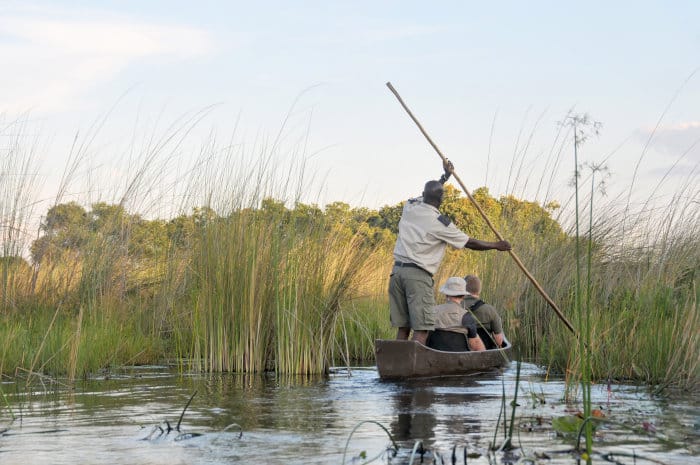
There’s nothing quite like getting down and dirty on an African safari. Whether you’re going on a game drive or a walking safari, you’re sure to come in contact with the various elements of the wild—and not to mention the wildlife, too.
For this reason, having the correct clothing is important . This will protect you during excursions and allow you to blend in better with the natural environment.
So next time you’re contemplating what to wear on African safaris, review the list above . These useful tips will guarantee you have a pleasant experience, both at the lodge and in the bush.
So what are you waiting for? Check out these incredible African safari deals and start packing!
About The Author
Sharon van Wyk
Related posts.

African safari packing list – What to bring on a trip to Africa
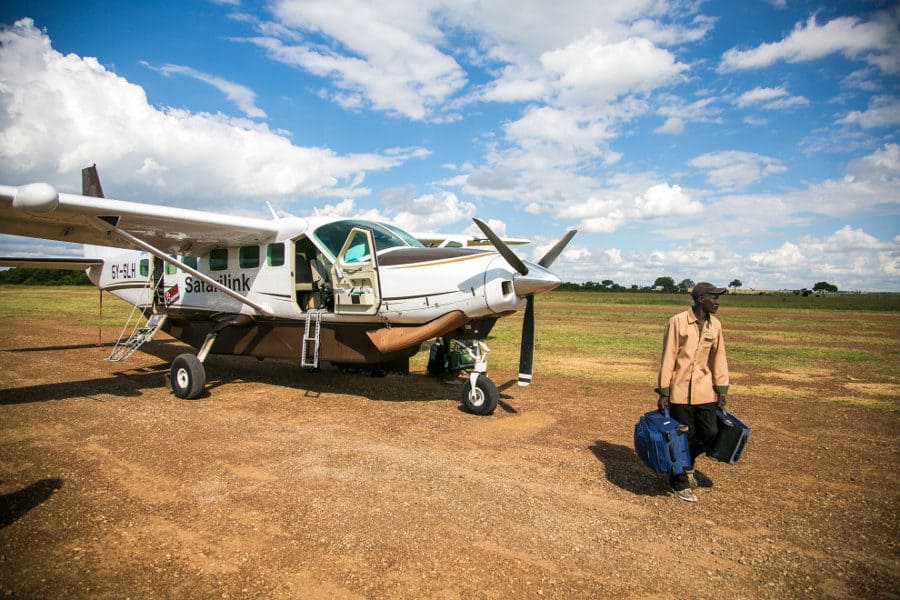
Best safari luggage – Duffel bags & backpacks for African travels
Leave a comment cancel reply.
Your email address will not be published. Required fields are marked *
- Czech Republic
- Falkland Islands
- Latin America
- New Zealand
- North America
- South Georgia
- Kilimanjaro
- Adventure Travel
- Archaeology
- City Guides
- Itineraries
- Portrait Photography
- Tips and Advice
- Travel Photography
- Travel Stories
- Unhelpful Guides
- Wildlife Photography
- Work With Me
What To Wear On Safari: My Detailed Safari Packing List With Photos
You’ve all seen the brochure photos: a smiling family is sitting at a camping table in the middle of the African bush. Behind them, the sun is setting, and perhaps a giraffe is crossing the savanna landscape.
Contents (click to view)
What are they wearing? I’m sure you can picture it: lightweight designer safari gear, all matching, in indistinguishable shades of beige, taupe and camel. Maybe the dad is wearing khaki chinos and the mum has a floppy-brimmed hat (colour: putty) on her head. They all have sand-coloured lace-up boots on, and from head to toe all their clothes are pristine, clean, and crease-free.
If it’s your first time figuring out what to wear on safari, it might feel like this is the model you have to follow. Like, having booked the blindingly expensive trip of a lifetime, you now have to go out and splurge hundreds more on the ‘proper’ kit, otherwise people will laugh at you and you may even get into trouble for not doing it right.
Well I’m here to reassure you: that’s rubbish.
What should you wear on safari?
I’ve been on five safaris (to Kenya , Botswana , Tanzania , Uganda and South Africa) and I still don’t own any ‘official’ safari clothes. I’ve always worn stuff I already own and been just fine.
That said, there are some dos and don’ts about packing for a safari, some things it’s a good idea to make sure you bring with you, and some stuff you should definitely leave at home.
So welcome to my complete safari packing guide. I’m going to go through a few points and FAQs, and then make a handy list at the end. Scroll down if you just want to skip ahead to that.
What happens on a safari?
Days on safari follow a similar schedule. You wake early and head out shortly after sunrise for a morning activity – usually a game drive but sometimes a boat cruise, guided walk, or scenic flight.
You return to the camp mid-morning for brunch and have some hours to relax in the heat of the day before heading out again for another activity later in the afternoon. Your afternoon game drive or boat cruise normally ends with sunset drinks in a beautiful location, before you head back to the camp for dinner.
After dinner you might sit round the campfire or boma enjoying a few drinks with your fellow guests, but most people go to bed fairly early, ready for another dawn start the next day.
Read more: Top 50 African Birds: A Safari Photo Guide
What to wear on safari during the day
The most important thing to note is that a safari is not a fashion show. It can be hot and dusty, or rainy and muddy, so it’s important to dress for comfort and practicality, so leave the designer gear, luxury fabrics and bling jewellery at home. Instead, bring stuff that washes easily, dries quickly and hides the dirt well!
You’ll also be coating yourself daily in suncream and insect repellent, so don’t bring anything that won’t mix well with those!
When I was in Botswana in December, some days reached 40 degrees C (104 F) with high humidity, so think lightweight breathable fabrics like cotton, viscose or sweat-wicking sportswear, or even linen if you don’t mind the creases).
T-shirts and shorts are your friends, but I’d avoid strappy vests for two reasons:
- Many African countries are quite conservative, and it doesn’t do to flash a lot of skin.
- The sun is extremely strong and the more skin you show, the more of you there is to get burned, even in a shaded safari car.
What to wear on a game drive or boat cruise
On wildlife viewing trips you’ll be sitting in a car for several hours, so it’s important to be comfortable. T-shirts and shorts are a great option.
Early mornings in Africa can be chilly, so bring a long-sleeved shirt, light sweater or jacket just in case.
Don’t forget your hat and sunglasses. Safari cars have roofs, but sometimes the roof rolls back so you can stand up, and when the sun is low in the sky it can shine in from the side very strongly. I was surprised by how much I ended up needing my hat.
Since you won’t be walking around much, light sneakers or sandals are fine.
Safari cars are open-sided, so if it rains you may get a bit wet. Most safari companies carry ponchos in the car, to hand out to guests when it rains, but you might want to bring your own light waterproof raincoat just in case.
What to wear on a walking safari
For a walking safari the principles are the same, but you should wear long trousers to prevent your legs being cut or scratched by branches, and closed-toed shoes to protect you from biting or stinging animals or insects.
Although walking safaris can sometimes last for three or four hours, you don’t actually walk that far because there’s a lot of stopping and looking at stuff. So you don’t need hiking boots; comfortable trainers or walking shoes are fine. If you’re travelling in rainy season you might want to bring waterproof or Gore-Tex ones.
Read more: 46 Amazing African Safari Animals – A Photo Guide
Do I need warm clothes on safari?
We think of Africa as being hot, and it is, but it can also be extremely cold. If you travel during the northern hemisphere summer, that’s winter in most of Africa, and temperatures can drop below freezing especially in desert areas, if you’re at altitude, and the further south you go.
In Botswana and South Africa during the winter, average nighttime temperatures can be 0 or even -2 degrees C (28-32 F), and remember that most safari cabins and tents are not heated!
Even in Kenya, which is much closer to the equator and therefore not as cold, nights and early mornings can definitely be chilly.
Staff in camps will provide you with hot water bottles and blankets both in your tent and on game drives, but you still need to bring warm clothes with you as well.
If you’re travelling to the southern African countries between April and October, I’d recommend bringing at least one pair of long trousers, one long-sleeved top, one jumper, and a packable down jacket.
But remember to dress in layers, as the day quickly warms once the sun’s up, and even if it’s close to freezing during the night, afternoon temperatures can ramp up to high 20s (70+ F) or more.
It’s very important to check the weather forecast before you travel, as different regions’ climates can vary.
What colour should you wear on safari?
It’s recommended that you wear plain designs in neutral, earthy or natural colours, such as shades of beige, grey, brown or natural greens.
Avoid vibrant, bright colours like orange, red and yellow, or vivid patterns. This is for two reasons:
- It helps to make you less noticeable to animals.
- You can get pretty dusty on safari, and natural shades don’t show the dirt so much!
Bright white and full black are also not recommended. This is not only because they show the dust really badly, but because many animals actually only see in black and white, and large gleaming white shapes or dark black ones are very noticeable to them.
With that all said, I wouldn’t worry about it too much, and you certainly don’t need to rush out and buy an entire new wardrobe full of khaki and beige. As I just mentioned, many animals only see in black and white, and when you’re inside the car, most only see the car as one large object, and not the people inside.
It’s more important to stick to the rules when you’re on a walking safari and don’t have the protection of the car.
But in general, if you pack plain, neutral-ish colours, you’ll be fine.
Why not wear blue on safari?
Some people recommend not wearing blue on safari. Apart from being a pretty noticeable bright colour, it’s said to attract tsetse flies, which are prevalent in some areas of southern Africa and can deliver a nasty bite and spread disease. They are also thought to prefer black (another reason not to wear it).
That said, my light down jacket is bright blue, and I also took a blue t-shirt and a pale blue cardigan to Kenya, and I wore all three with no problems.
Read more: An Epic Uganda Itinerary In 2 Weeks
What to wear on safari evenings
Most people like to dress up when they go on holiday, so you might think about throwing a few glamorous dresses, high heels or some party shirts into your suitcase.
But you probably won’t wear them. Even in the luxury camps, most people really don’t dress up for dinner, for four main reasons:
- At night it’s a good idea to cover your arms and legs to avoid insect bites, so floaty skirts and strappy tops are a bad idea.
- It can get quite chilly at night, so you’ll probably be more comfortable in trousers and a fleece anyway.
- You’ll be tired after a long day and an early start; you’ll probably find you can’t be bothered to dress for dinner as you’ll be going to bed soon afterwards anyway.
- Walking round camp after dark you may run into snakes or spiders, and paths can be muddy and uneven, so high-heels are a definite no-no.
When I was in Botswana in December (the height of their summer) it was still 30+ degrees (86 F) in the evening, so I wore lightweight trousers or a long casual dress and then liberally coated myself with insect repellent. In Kenya in September it was a bit cooler, around low 20s (70 F), so I wore trousers, a t-shirt and a light cardigan, and had my jacket handy for later in the evening as the temperature dropped.
Is it OK to wear jeans on safari?
It’s perfectly fine to bring a pair of jeans for the cooler evenings, especially if you’re travelling in winter when you know it will be chilly at night.
However jeans aren’t recommended for game drives as you’ll probably be too hot in them during the day, and if you need to wash them they’ll take ages to dry.
As a general rule I wouldn’t take jeans on safari but instead bring lightweight trousers. The convertible zip-off ones that turn into shorts are especially good as you can have long pants for cold mornings and safari walks, and convert them into shorts once the day’s warmed up.
Pro tip: Whatever you choose to bring, make sure you have some ‘room to grow’! The food on safari is usually really good and you won’t be doing much exercise, so stretchy waistbands are a good idea!
Can you wear leggings on safari?
Yes, absolutely. Leggings are a great thing to bring on safari because they’re lightweight, wash and dry easily, are comfortable, and protect you from bugs and the sun. Just stick to neutral colours and leave the snazzy activewear designs at home!
I always pack a pair of leggings for safari – and if there’s a gym in the hotel then I can also use them for a workout!
What are the best shoes to wear on safari?
As I mentioned above, high heels and smart shoes are definitely not the thing to bring on safari. For game drives it’s fine to wear sandals or light sneakers, and for safari walks you want closed-toed comfortable walking shoes. You definitely don’t need to buy special safari boots, no matter what the sales people might say.
If your lodge or hotel has a pool, you might want to bring some flipflops (also handy to have for walking around in your tent at night, or for nipping to the bathroom block if you’re staying in a campsite).
Can you wear trainers on safari?
Yes, absolutely. I always pack a pair of Asics Gore-Tex trail trainers that I wear for exercise, when it’s muddy or raining, and for walking or hiking. On game drives and boat cruises, and for walking around the camp in the evening, I have a pair of Skechers Go-Walk sneakers that are super comfortable and easy to slip on and off.
Read more: Kenya Vs Tanzania: Travel Experts Decide
What to pack for the beach in Kenya or Tanzania
Many people like to combine their safari with a few days on the beach, perhaps in Zanzibar in Tanzania, or at Diani or Vipingo in Kenya .
Here’s where you will get the chance to dress up a bit – as if you’re staying in a nice hotel or beach resort destination, there will definitely be opportunities to put on a strappy dress, holiday shirt, or some sparkly sandals.
If you’re planning to hit the beach for a few days at the end of your trip, you’ll definitely want to throw in one or two nice evening outfits. And don’t forget swimwear and a beach cover-up too!
Can you wash clothes on safari?
This is a very important question, and the answer is yes! Almost all safari lodges and camps offer a laundry service and most of the time it’s included in the price of your stay. So you can wash your clothes as often as you like at no extra cost – which means you really don’t need to bring huge amounts of luggage as you can wash and re-wear your clothes several times.
Note that in many places the laundry is done by hand by the hotel staff, dried out in the sun, and ironed using an old-fashioned coal iron. This is yet another reason not to bring anything too delicate or precious, as there’s a small chance it may get damaged during the laundry process.
What sort of underwear should I bring for safari?
Ladies: remember that you may spend many hours bouncing around over unsealed and bumpy roads in the back of a safari car. Being quite an athletic build, this is not something that’s ever bothered me, but I’ve been reliably informed by more curvy girls that a sports bra can be a life-saver in this situation. So if you’re particularly susceptible to bouncing, bring sports bras!
It’s also important to note that the people who handwash your clothes are usually male, and for cultural and hygiene reasons they won’t wash women’s underwear. Ladies will need to bring a small amount of hand wash (though sometimes laundry soap is provided) and wash your own pants and bras in the basin. For this reason it’s a good idea not to bring anything too fancy or delicate: lightweight, quick-drying microfibre underwear is best.
Read more: Chimpanzee Trekking In Uganda: A Breathtaking Wildlife Adventure
Other things to pack for safari
Of course, packing is not all about clothes. Here are a few other things you won’t want to forget (more in the complete packing list below):
Camera, spare batteries, chargers, plug adapters
Can you imagine going all that way on safari on the trip of a lifetime and then forgetting your phone charger or camera? I know, I’d die!
So definitely make sure you pack all your gadgets, and all the cables and plugs you’ll need to make them work! And then bring spares!
Often hotel rooms and safari tents only have a limited number of plug sockets, so if you have loads of gadgets, it’s a good idea to bring a multi-socket splitter. I recommend one with surge protection : power cuts can happen frequently and if there’s a surge when the power comes back, your devices can get fried. This happened to me the night before my Tanzania safari , so now I’m extra careful!
Medication and toiletries
Most of the places you’ll be staying will be out in the bush, with limited access to shops. Make sure you bring all the toiletries, medicines and personal items you’ll need, as once you leave the airport, opportunities to replace anything that’s missing will be very limited.
Do you need malaria tablets for safari?
Large parts of Africa have malaria, including popular safari countries like Kenya, Tanzania, Uganda and Zimbabwe, so it’s very likely that you may need to take malaria tables on safari. I usually take doxycycline which is cheaper than malarone, but may not be suitable for everyone so speak to your pharmacist or travel clinic.
You can check the malaria risk for the country you’re visiting, as well as any other vaccine requirements at the Travel Health Pro website here .
Some countries also require you to have a proof of yellow fever vaccination – you can check if this is needed on the website above as well. For example, places like Kenya and Tanzania won’t let you in without proof of vaccination if you’ve spent time in a yellow-fever-risk country before arriving. If you have already had your yellow fever jab, make sure you pack the certificate!
What to wear for safari in Tanzania
If you’re planning your safari in Tanzania or Kenya as part of a trip that also involves climbing Kilimanjaro (or any other mountain), then check out my essential Kilimanjaro packing list here .
Best suitcase for safari
This is important, so pay attention! Many safaris involve internal transfers by tiny plane or even helicopter. They all have pretty strict packing rules, with a maximum of 15 kg weight per person and no hard-shelled suitcases allowed. Luggage must be soft sided, and don’t overpack! You shouldn’t need to anyway, since you can wash everything when you’re there.
Wheels are OK as long as it’s a soft bag, so I recommend a soft holdall with or without wheels, or a wheely backpack like the one I have and love . This one came to Kenya and Botswana with me with no trouble at all.
Read more: Nature Vacations: 25 Amazing Places For An Outdoors Adventure
Packing for safari for photographers
If, like me, you’re travelling with 15 kg of camera gear, don’t stress. The little internal plane operators are used to photographers and will let you put your backpack of gear at the back of the plane. I travelled with 15 kg of hold luggage and another 15 kg of camera gear around Botswana and Kenya, and it was never an issue.
There’ll be more on safari camera gear in a separate post, coming soon!
Meanwhile, for safari photography tips, check out 40 Safari Photography Tips For Stunning Wildlife Photos .
What should you NOT take on safari?
Now I’ve told you all the things you should bring on safari, here are a few things it’s a good idea to leave at home.
Perfume: No one in your safari car will thank you for dosing yourself liberally with Eau de Whatever, and if you wear a very strong scent it may even allow animals to detect you sooner and run away faster.
Hairdryer: Many safari camps run on solar power and cannot support a hairdryer. Those that can (if they’re on the grid, or running off a generator), will usually provide one that’s suited to the electricity supply. As I said, no one really worries too much about their appearance or cares about what your hair looks like on safari anyway.
Camouflage clothing: This might surprise you, but wearing military-style camo print clothing is a no-no in many African countries, where it’s associated with the military. It’s actually illegal to wear camo gear in Ghana, Uganda, Zimbabwe and Zambia.
Plastic bags: Disposable plastic bags are banned in Kenya, Uganda, and Rwanda. You should be fine with the little zip-lock one for your liquids on the plane, and I’ve used reusable plastic packing bags many times with no problems, but try to keep plastic bags to a minimum or you may get a fine.
A drone: Unless you have special permission, drones are not allowed in most lodges and African National Parks.
Expensive watches, jewellery, and other valuable items: This doesn’t just apply to African safaris but to all travel. Jewellery can easily get lost, damaged or stolen, so if you care about it, leave it at home.
A hard-shelled suitcase: As mentioned above, all safari companies ask you to bring a soft bag or at most a wheeled soft holdall , as these are much easier to pack into the small luggage spaces on planes and in cars. You will not be thanked if you bring rigid-sided luggage.
Where to buy safari clothing
For the most part, you don’t need any specialist clothing for safari. You can wear your own normal clothes. However, there are some great companies that do excellent clothes for travel, in suitable colours, and made from practical fabrics that are sweat-wicking, comfortable and don’t crease.
My favourite brands for travel clothes are The North Face , Patagonia , Rab , Mountain Equipment , Arc’teryx and Craghoppers , and my favourite places to shop in the UK are Ellis Brigham and Cotswold Outdoor , which stock all these brands at competitive prices, have high-street stores where you can get advice and try stuff on, and often have good end-of-season sales too.
What to wear on safari: my Africa packing list
So now we’ve gone through the details, here’s what I would pack for a 10-day or two-week safari in Africa.
What to wear on safari: Clothes
- T-shirts in neutral or earthy colours x 5. The green t-shirt in the photo above is by Mountain Equipment . I love it so much I bought three!
- Long trousers x 1 pair. I really like my lightweight ones from The North Face .
- Shorts x 1 pair.
- Convertible trousers that zip-off into shorts, or a second pair of shorts . North Face and Craghoppers both do good convertible trousers for men and women .
- Leggings . I’m a big fan of Sweaty Betty.
- Long-sleeved shirt for covering up in bright sunshine.
- Lightweight jumper or cardigan for chilly evenings.
- Lightweight jacket , fleece or mid layer for cold nights. I have a fleece from Arc’teryx and a mine is a Nano puff from Patagonia .
- Waterproof jacket . I have two, a lovely Zeta LT by Arc’teryx and a packable Meridien jacket by Rab .
- Dress or smart shirt for the evening if you’re going to a city or the beach (x2). For packable jersey or lightweight viscose dresses I love Boden , Sugarhill Brighton and Joanie Clothing .
- Gym kit – if you think you’ll need or use it. But many safari camps don’t have fitness equipment and you can’t go for a run in the bush or you might get chased by a predator!
- Sports bras or comfortable wireless bralettes x 3.
- Underwear x 7. If you’re staying for longer you’ll need to handwash. I recommend something quick-drying and non-delicate like these microfibre ones from M&S .
- Swimwear . I get cute bikinis and swimwear from M&S , Next , or Pour Moi .
- Sarong or cover up (if you’re spending time on the beach)
- Sandals or flip flops . I love my walking sandals by Teva .
- Trainers or walking shoes for exercise and walking safaris. Mine are Gore-Tex trail trainers from Asics .
- Soft sneakers for walking round the camp, game drives and boat cruises. I’m a big fan of Skechers Go Walks .
Pro tip: if you’re going to the beach and plan to do a lot of snorkelling, pack a rash vest or t-shirt to swim in. The sun is super strong and we all got very burnt even though we were wearing Factor 50!
What to pack for safari in winter
If the forecast is for cold weather, I would add:
- Another long-sleeved top or baselayer .
- A warmer, packable insulated jacket .
- A pair of jeans.
- Beanie hat.
What to pack for safari: Accessories
- Baseball cap or hat. My cap is this one this one by Buff and I really like it.
- Scarf or buff to keep dust off (and you can dip it in water to cool you down on very hot days)
- Headphones or ear buds (for the plane), you won’t need them on the actual safari! I have these ones which are pretty good and much cheaper than Apple ones.
- Eye mask and ear plugs (if you’re a light sleeper).
- Camera, batteries, memory cards and charger
- Charger cables for all your devices
- Portable phone charger. Mine is this one from Anker .
- Plug adapter for the country you’re going to, or a universal plug adapter
- Plug splitter or 3-way adapter with surge protection
- Refillable water bottle (though some safari companies provide them, so check). An insulated water bottle will keep your water colder for longer on hot days.
- A padlock for your luggage to protect you from airport thieves
Safari packing list: Toiletries
As well as all your usual toiletries and medications, don’t forget:
- Suncream. I swear by Riemann P20 because it’s hard wearing and you only need to apply it once a day. Or for the best face SPF you will ever find, that’s non-greasy and non-orange (!), I love this one from the Body Shop .
- Insect repellant (though this is often provided in camp).
- Malaria tablets ( check to see if these are required in your destination )
Pro tip: Luggage goes missing more and more frequently these days, so pack your medication or anything else vital in your hand luggage.
Where to next?
If you liked this post, why not try some of my other safari and Africa posts?
- Leroo La Tau In Botswana: See The Incredible Zebra Migration
- Uganda Animals: The Amazing Wildlife of Uganda
- Ol Doinyo Lengai Tanzania – Climb the Terrifying Mountain of God
- Entebbe Zoo – Uganda’s Wildlife Education Centre
- An Epic Uganda Itinerary In 2 Weeks
Liked this post?
Social shares help support my hard work! You can share via the buttons at the bottom, or pin this handy Pinterest Pin. Thank you!
Bella is a multi-award-winning travel writer, wildlife photographer and science and history documentary director from London. Among many awards and nominations she won Blogger of the Year at the British Guild of Travel Writers’ Awards 2023 and Best Photography at the Travel Media Awards 2020. Her work has been published by National Geographic, Wanderlust, and BBC Travel among others. Her films have been shown around the world including on the BBC, Discovery and PBS.
Further Reading...
Ethical Travel Photography: How To Capture With A Conscience
Santa Maria Volcano In Guatemala: How To Hike This Epic Peak
Sweat And Leather At Chouara Tannery, Morocco
46 amazing african safari animals - a photo guide, is cardamom house in vipingo the best beach hotel in kenya.
Some of the links on this site are affiliate links. This means that if you click through and make a purchase, I will earn a small commission at no additional cost to you. Passport & Pixels is a participant in the Amazon Services LLC Associates Program. As an Amazon Associate I earn from qualifying purchases.
African Safari Tours
- Arusha, Tanzania
- [email protected]
- Call/ Whatsapp +255 745504340

What to Wear on an African Safari: A Comprehensive Guide
What to wear on an african safari: a comprehensive guide..
An African safari is a dream adventure for many travelers. The opportunity to witness the magnificent wildlife, explore breathtaking landscapes, and immerse oneself in the rich cultures of Africa is an experience like no other. However, packing for an African safari can be a daunting task, especially when it comes to choosing the right clothing. In this comprehensive guide, we will walk you through what to wear on an African safari, taking into account the diverse climates, activities, and cultural considerations you may encounter during your journey.
1. Understanding the Climate
Africa’s diverse landscapes mean that the climate can vary greatly from one region to another. Before packing for your safari, it’s crucial to research the specific area you will be visiting and the time of year you plan to go. The best wildlife viewing months in Tanzania are during the Dry season from late June to October. The best chance of seeing the wildebeest migration in the Serengeti is during June and July and the time to see the wildebeest calving is late January to February. Tanzania’s main rainy season, or the ‘long rains’, last during about March, April, and May. Best East Africa Safari Clothes for Comfort and Protection. Here are some general climate zones you may encounter:
Tropical Rainforest: Hot and humid with frequent rain showers. Think Central Africa, like Uganda or Gabon.
S avannah: Warm to hot with distinct wet and dry seasons. East Africa Packing List What to Wear on Safari. Iconic destinations like the Serengeti fall into this category.
D esert: Extremely hot and dry during the day, but often quite cold at night. The Sahara Desert is a prime example.
C oastal: Moderate temperatures with ocean influence. Coastal regions like Kenya’s Mombasa offer a different experience.
Mountain: Cool to cold, with temperatures dropping at higher altitudes. Consider places like Kilimanjaro or the Drakensberg Mountains.
2. Layering is Key
Given the varying climates in Africa, layering your clothing is a smart approach. Layering allows you to adapt to changing weather conditions and temperatures throughout the day. Here’s how to effectively layer for an African safari:
Base Layer : What to Wear on an African Safari? Start with a moisture-wicking base layer to keep sweat away from your skin. This can be a lightweight, long-sleeved shirt and long underwear.
I nsulating Layer : Depending on the weather, exactly know what to Wear on an African Safari by add an insulating layer, such as a fleece or lightweight sweater, for warmth.
O uter Layer : What to Wear on an African Safari? Your outer layer should consist of clothing that is both breathable and weather-resistant. A light, waterproof jacket or vest is a great choice to protect against rain and wind.
3. Safari Clothing Essentials
3.1 neutral-colored clothing.
Neutral colors such as khaki, beige, olive green, and light brown are the go- to choices for safari clothing. These colors help you blend into the natural surroundings and minimize the chances of startling wildlife. Avoid bright colors and flashy patterns, as they can attract unwanted attention from animals.
3.2 Comfortable and Breathable Fabrics
Choose clothing made from breathable, moisture-wicking fabrics like cotton, linen, and lightweight synthetic materials. These materials will keep you comfortable in the heat and help regulate your body temperature. Ultimate Safari Clothing Guide- What To Wear On Safari in Africa, Complete African Safari Packing List [Checklist and Guide], The Ultimate African Safari Packing List, Safari Outfits Ideas That Are Easy & Affordable, The Comprehensive Guide to What to Wear on Safari, Safari Clothing – Expert safari packing advice and top tips, Women’s Safari Clothing for Africa Overland Travel.
3.3 Long-Sleeved Shirts and Pants
Long-sleeved shirts and long pants are essential for protecting your skin from the sun, thorny vegetation, and insect bites. Look for clothing with built-in UV protection for added safety against the sun’s harmful rays. What to Pack African Safari Packing List, 10 Things You Must Pack for Your Safari. What to Pack for an African Safari, The Ultimate Packing List for Your African Safari. Safari Packing List & What To Wear On Safari.
3.4 Closed-Toe Shoes
Comfortable, closed-toe shoes with good tread are a must. Choose lightweight hiking boots or sturdy sneakers that provide support for walking and exploring the terrain. Ensure they are well broken-in to prevent blisters.
3.5 Hat and Sunglasses
A wide-brimmed hat is essential to shield your face and neck from the sun. Sunglasses with UV protection will protect your eyes from the harsh African sun and glare.
4. Accessories and Gear
In addition to clothing, there are several accessories and gear items to consider packing for your safari:
Binoculars: A good pair of binoculars will enhance your wildlife viewing experience, allowing you to spot animals from a distance.
C amera and Accessories: If you’re a photography enthusiast, bring your camera and essential accessories like spare batteries and memory cards.
Reusable Water Bottle : Staying hydrated is crucial, so carry a reusable water bottle to reduce plastic waste and ensure you have access to clean water.
I nsect Repellent: Pack a reliable insect repellent to protect yourself from mosquitoes and other biting insects, especially in malaria-prone regions.
M edications : Carry any necessary medications, including antimalarial drugs if required for your destination, along with a basic first-aid kit.
P ower Bank : Ensure your devices stay charged with a portable power bank, as electricity availability can vary in safari lodges.
5. Cultural Sensitivity
Respect for local cultures and traditions is vital when it comes to clothing choices . While on safari, you may have opportunities to interact with local communities. Here are some tips for dressing respectfully:
Cover Shoulders and Knees: In many African cultures, it’s customary to cover shoulders and knees, especially when visiting villages or religious sites. Pack a lightweight scarf or shawl to cover up when needed.
Modesty : Avoid clothing that is overly revealing or provocative, as it may be considered disrespectful in conservative areas.
Remove Hats Indoors : It’s polite to remove your hat when entering someone’s home or a place of worship.
Ask for Permission : Always ask for permission before taking photos of local people, and respect their wishes if they decline.
Recommended Serengeti Safari Packing List/ Clothing to bring
T-shirts and tank tops Long-sleeved shirts (for protection from sunburns) Shorts Light long pants or convertible long-short pants Warm fleece pullover or jacket One swimsuit Cotton socks and underwear Pajamas One pair of comfortable walking shoes One pair of sandals or flip-flops Wide-brimmed hat Bandana (for dust) Heavy sweater, gloves, and toque if traveling in the cold season (June – August).
What to Bring on your East African Safari
Passport Plane tickets Travel Insurance Policy & Emergency Contact Numbers Yellow Fever Vaccination Certificate (if applicable) Safari itinerary U.S. dollars in large and small denominations ($20, $50 & $100 bills should be issued after 2005) Credit cards and ATM bank cards Sunglasses Sunscreen and lip balm Small flashlight or headlamp Insect/Mosquito repellent Eye drops and extra contact lenses or spare glasses (if applicable) Anti-bacterial hand sanitizer Tissue paper and small travel towel (washrooms in Tanzania often don’t have toilet paper or paper towels) Camera, extra memory cards, batteries, and charger, if applicable UK plug adapter and transformer/voltage converter, if applicable Ziplock bags for toiletries, camera equipment, snacks, etc. Personal toiletries
FAQs What to Wear on an African Safari
What should i wear on a safari in the summer.
In summer, lightweight, breathable clothing is essential. Opt for long-sleeved shirts and pants made from lightweight fabrics. Don’t forget a wide-brimmed hat, sunglasses, and sunscreen for sun protection.
Can I wear shorts on a safari?
While shorts are generally acceptable for safaris, it’s advisable to wear longer pants or convertibles for added protection against sun, insects, and vegetation. Bring a pair of shorts for more relaxed moments at the lodge.
Do I need to dress up for dinner at safari lodges and camps?
Most safari lodges and camps have a relaxed dress code, but it’s a good idea to check with your specific accommodation. Casual attire like khaki pants and a collared shirt is usually sufficient.
Are camouflage clothes allowed on a safari?
Camouflage clothing is typically discouraged on safaris, as it’s associated with military or hunting activities. Stick to neutral colors to respect the wildlife and local regulations.
What’s the best footwear for a safari?
Closed-toe shoes with good traction, like hiking boots or sturdy sneakers, are the best choice. Ensure your footwear is comfortable and suitable for walking in various terrains.
Should I bring a swimsuit?
If your safari includes a lodge or camp with a pool, it’s a good idea to bring a swimsuit for relaxation. Check with your accommodation to confirm if a pool is available.
What colors should I avoid wearing on a safari?
Avoid wearing bright colors like red, orange, and neon shades, as they can startle wildlife. Stick to neutral tones like khaki, beige, and green.
Can I wear jewelry on a safari?
It’s best to keep jewelry minimal to avoid drawing attention to yourself and potentially attracting wildlife. Simple accessories like a watch and stud earrings are generally safe choices.
I n conclusion, packing for an African safari requires careful consideration of the climate, activities, and cultural norms. By following the guidelines in this comprehensive guide, you’ll be well-prepared to enjoy your safari adventure while staying comfortable and respectful of the environment and local communities. Remember to plan ahead, check the specific requirements of your destination, and prioritize comfort and functionality when choosing your safari attire. Enjoy your safari and the incredible wildlife and landscapes of Africa!
Comments are closed.
Every product is independently selected by (obsessive) editors. Things you buy through our links may earn us a commission.
What to Pack for An African Safari, According to Trip Organizers
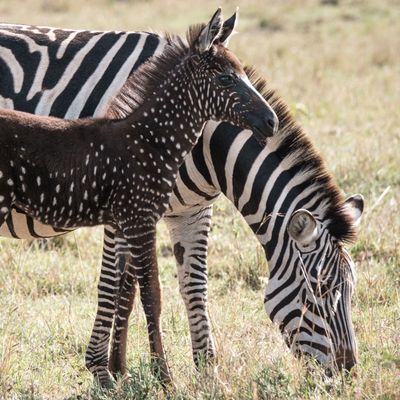
Packing is hard. Especially when the destination might involve giant mosquitoes or Instagram-worthy hiking trails. What do frequent travelers to these spots — the ones who best know how to prepare for the conditions — put in their suitcases ? We’ll be tackling this in our series “ The Trip List .”
Going on an African safari and spotting animals like lions and zebras in their natural habitat is a once-in-a-lifetime opportunity. Since it’s not something most people do very often, it’s also not the easiest trip to pack for. For those lucky enough to have a safari in their future, we’ve rounded up a group of experienced tour guides and travel planners (with hundreds of safaris collectively under their belts) to help you out.
“People always overpack. I think that’s the biggest mistake,” says Deborah Calmeyer, founder and CEO of the safari trip organizer Roar Africa . She explains that, in terms of clothing, you generally just need a few casual pieces, as there aren’t many occasions to dress up on safari. Most lodges also offer laundry service with a quick turnaround time, so there’s no need to pack a new outfit for each day of your trip. Instead of prioritizing style, safari experts say to focus on layering , as you’ll spend most of your time outdoors on game drives in open-air vehicles. It might be chilly when you leave your lodge in the early morning but heat up quickly when the sun comes out. “If you’re out after sunset when the temperature drops, those layers will come in handy again,” says Calmeyer.
Before you start packing, learn the luggage requirements of your particular trip, which will determine how much you can bring. Even if you fly to Africa on a major international airline, once you’re in the bush, you’ll travel from site to site on small aircrafts with limited space. “The portal leading into the luggage compartments is quite small, and the bags have to be smushed and manipulated into these little cargo areas,” explains Kota Tabuchi, the managing director for African travel at the trip-planning consultancy Travel Beyond . Depending on your destination, weight limits can range from roughly 33 to 42 pounds, with lower limits more common in East Africa and higher maximums generally seen in South Africa. Choose a soft duffel bag (check your airline’s rules to confirm whether wheeled bags are allowed), as you can’t bring hard-sided luggage on many small planes.
You’re likely going on safari to encounter wild animals (especially the big five: lions, leopards, rhinoceroses, elephants, and buffalo), so don’t scrimp on binoculars and cameras that will help you get the best view and capture the best memories of your sightings. Below, our experts share their top picks for the gear that’ll make your trip comfortable and memorable, plus everything else you’ll need for a perfect safari.
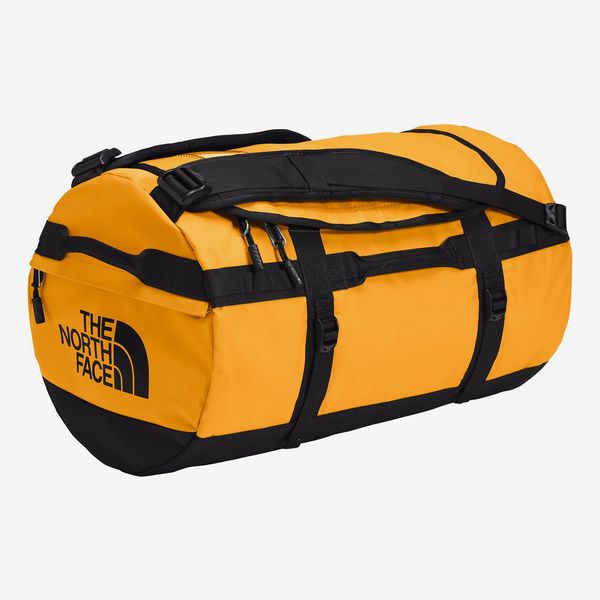
As stated above, a soft-sided duffel bag is your best bet for traveling on safari. Tabuchi has owned this North Face bag for more than 15 years now and has brought it on multiple safaris each year. He calls it “absolutely bombproof.” The lightweight and roomy duffel should hold everything you need, and it is compliant with most African airline requirements. If you want another option, Tabuchi also likes the very similar Patagonia Black Hole bag (a longtime Strategist favorite ).
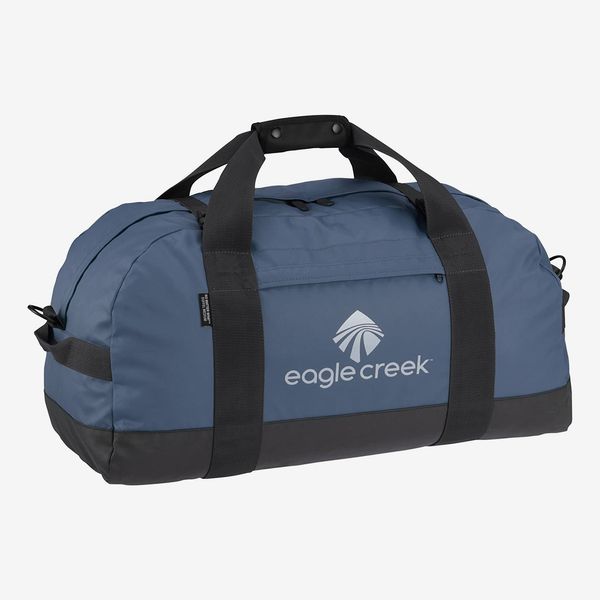
At under $100, this bag is an affordable pick that was mentioned by several safari pros, including Ina Steinhilber, president of tour operator Thomson Safaris . It’s lightweight, too, clocking in at just over two pounds, leaving plenty of room under the weight allowance for your stuff.
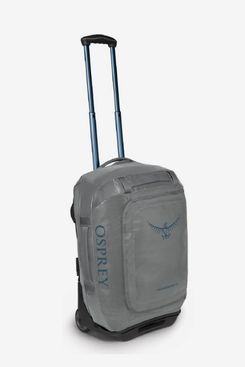
If you’re allowed to bring a soft duffel with wheels, this Osprey bag gets rave reviews from Wil Smith, founder and director of travel organizer Deeper Africa . “Make sure the bag is water resistant and has a storm flap over the zipper,” he says. “On a safari, you’re out on bumpy roads, and you never know if your bag’s going to end up out in the rain, dust, or dirt. It probably won’t, but you want to prepare for anything.” He says this bag checks all his boxes and even has lockable zippers.
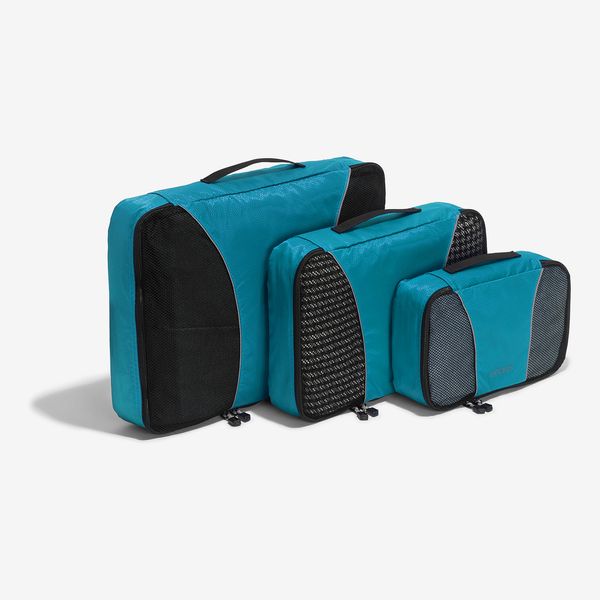
“These are a must for finding clothing easily in the soft-sided duffel,” says Kristina Jackson, a senior safari and Kilimanjaro travel consultant at Thomson Safaris. Many frequent travelers have recommended packing cubes to us in the past (including the eBags set) because they compress your gear to save space — even more crucial when you have a tight luggage allotment. “After safari, you may find yourself using them more often,” says Jackson. “They make traveling so easy.”
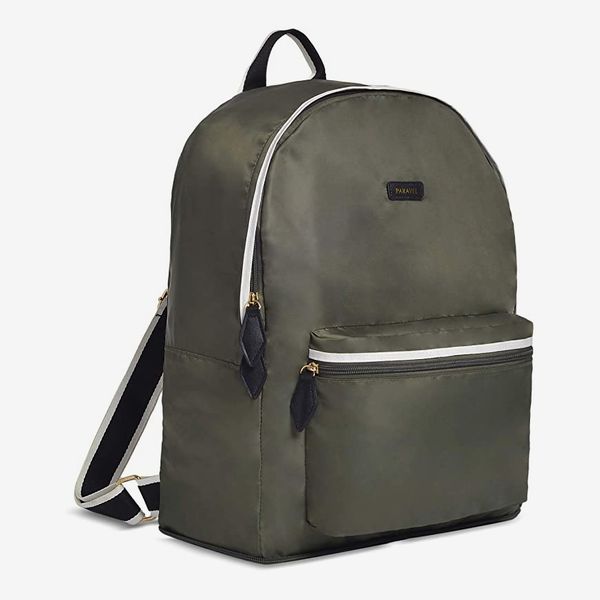
According to Joel Cody, sales and marketing director at Thomson Safaris, you’ll also want a backpack for your daily game drives to carry things like extra layers, bug spray , and binoculars. Because it folds down into a compact pouch, he suggests this Paravel backpack, as you can easily fit it into your larger luggage.
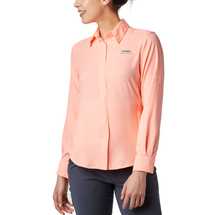
“Layers are the most practical way to cope with fluctuating daytime and nighttime temperatures,” says Sherwin Banda, president of the safari trip operator African Travel , and pretty much all of our experts agree. A basic tee is a good first layer, and in the summer you might not need more than a long-sleeved shirt on top for the chilly morning and evenings. “We all have one of these,” says Ali Riley, art director of Thomson Safaris, of this polyester button-up. She likes that it’s comfortable, moisture-wicking, and offers UPF 40 protection from the sun.
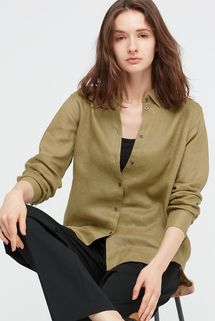
If you prefer natural fibers, Cody recommends these linen long-sleeved shirts from Uniqlo. “They’re lightweight and comfortable, and you can wear a T-shirt or tank underneath for layering,” he says. “They look good after they’re washed and are available at an excellent price point.”
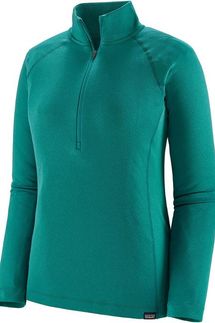
Patagonia pieces came up a lot among our experts, who like how they’re made sustainably and designed for travel and adventure. For a slightly warmer second layer, Cody likes this half-zip, which is made from a moisture-wicking fabric and locks in body heat. He tells us it “provides warmth without bulk, and doesn’t take up much room in a backpack.”
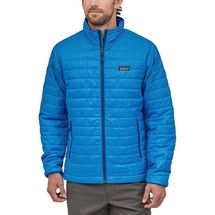
An even warmer jacket is a good option to have with you even in the summer. Elizabeth Gordon, co-founder and CEO of the safari company Extraordinary Journeys , explains that many popular safari locations, such as Tanzania’s Ngorongoro Crater, are located at high altitudes and may be chilly year-round. For cold nights and mornings, she loves Patagonia’s Nano Puff jackets. “They weigh practically nothing and somehow always keep me at the right temperature,” she says. For a less-expensive option, Gordon also likes ultralight down jackets from Uniqlo, available for both men and women .
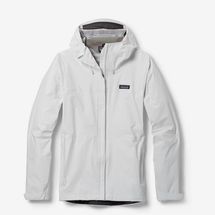
“A light rain jacket can double as a windbreaker, so it’s good to bring no matter the time of year, [especially] with the changing rain patterns,” says Gordon. She says spring and fall are typically the rainy seasons in East Africa, but climate change has made the weather less predictable. To make sure you’ll have coverage in the event of an unexpected storm, she recommends this packable, lightweight Patagonia jacket.
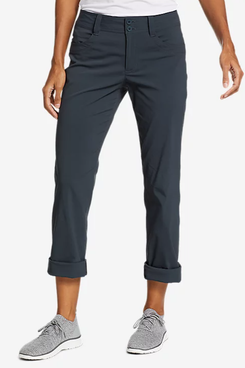
There’s no need to go out and buy special pants for your safari — chinos , leggings , and shorts are all generally fine (though some experts advise against jeans because they’re heavy to pack). If you want to really get in the spirit, however, Riley suggests these convertible pants from Eddie Bauer. You can wear them as long pants in the morning and then roll them up into capris when the weather heats up. “They’re extremely comfortable, if not overly stylish,” she says. Here’s a similar style for men that unzips into shorts. Even if it’s warm out, our experts like having the option of long pants in the evenings when mosquitos are out.
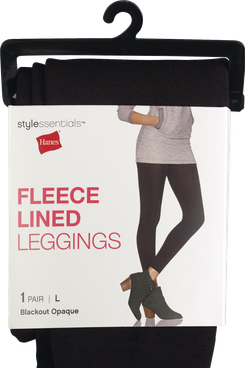
Leggings and yoga pants are especially popular on safari because they’re lightweight and comfortable, especially if you’re going to be sitting in a Jeep all day. If you anticipate being cold, a fleece-lined pair is good to have too. “In case you get a cold night in Ngorongoro, these are great to sleep in, are inexpensive, and don’t take up a lot of room,” says Cody.
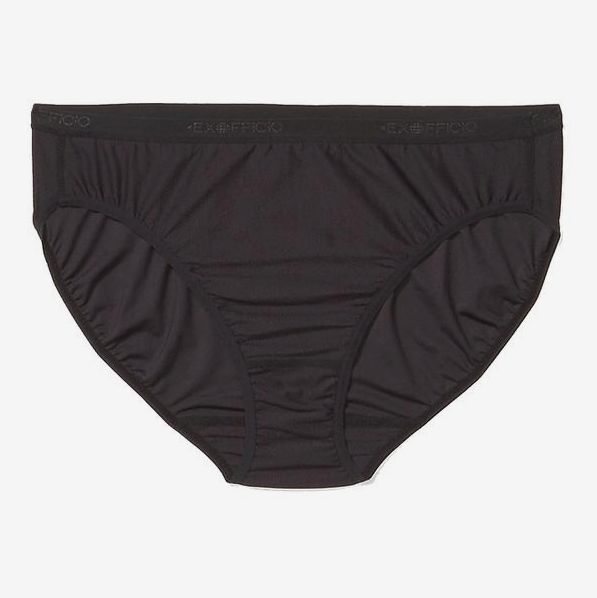
Although most lodges have laundry services — often complimentary for guests — many won’t wash women’s underwear because of cultural norms in certain countries. Since you may have to wash your own underwear in your bathroom sink, go with pairs made for exercise or travel that are designed to be fast-drying. “Ideally you want clothing that is easy to wash and dry,” says Smith. He includes underwear in this category, especially for women. Ex Officio (which makes some of our favorite men’s and women’s underwear) specializes in quick-drying materials that’ll make it easy for you to do your own wash.
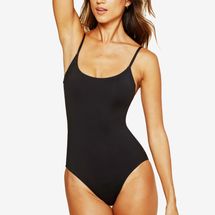
Gordon points out that most lodges have pools, and getting in an afternoon dip is a great way to cool down after a long day out in the bush. Obviously, go with whatever swimsuit you love, but if you want some Strategist-approved picks, check out out recommendations for men and women (plus bikinis ). Here are two crowd-pleasers that earned our seal of approval.

Unless you’re trekking through the mountains to see gorillas, safaris are mostly sedentary experiences spent on Jeeps or Land Rovers driving through wildlife preserves to catch a glimpse of the big five. Our experts say there’s no need to waste precious luggage space on heavy hiking boots , as you’ll likely be doing only a bit of walking outside the vehicle. Jackson suggests wearing Toms. “They’re perfect to slip on and off while in the vehicle throughout the day and are also very lightweight.” Similarly, her colleague Cody swears by Vans, telling us, “They’re so easy to take off and on and are washable. I wore these all the time.”
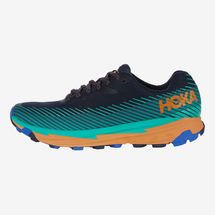
If you do anticipate doing more active walking on your trip, both Smith and Tabuchi recommend trail-running shoes. They’re not as bulky as hiking boots (which our experts say aren’t necessary for most safari terrain) but still offer stability and traction. “They’re very sturdy,” says Smith. “You want good traction because if you get out of the car and it has been raining, the ground may be a little slippery.” Tabuchi says any trail runners with a solid rubber sole should do the trick. The lightweight Hoka One One Torrent is popular among trail runners and should be rugged enough to get you through your safari adventure.
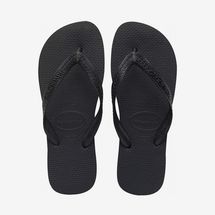
Although our experts recommend closed-toe shoes while you’re out on game drives, they say to also bring a pair of flip-flops or sandals for when you’re relaxing back at your home base. “It’s great to have some comfortable flip flops for your tent or your lodge or around the campfire,” says Smith. You’ll also want to wear your flip-flops at the pool if your lodge has one. Brazilian-made Havaianas are an affordable yet stylish option that we’ve written about before .
Accessories
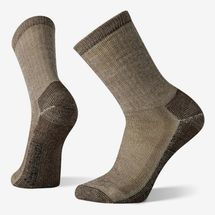
In the past, we’ve covered how merino-wool socks are ideal for all types of activities including running , biking , and hiking . Their temperature-regulating and moisture-wicking properties also make them perfect for safari. Steinhilber says Smartwool socks will “keep your feet warm on cool nights” and, given their lightness, will also be comfortable on daytime game drives.
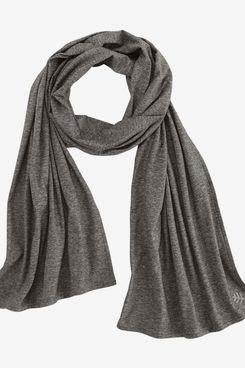
Calmeyer says a shawl or pashmina will “never go to waste on safari” because it’s an all-in-one piece that you can use to stay warm, block out the sun, or even zhuzh up your casual clothes for a candlelit dinner back at the lodge. Gordon agrees, telling us she always brings a scarf “to dress everything up, or protect from dust.” Nicole Scherr, a former marketing project manager at Thomson Safaris, likes this specific shawl because it’s lightweight, quick-drying, and has UPF sun protection. “It’s great for the plane because it becomes a small blanket, and it’s also light enough to drape over yourself in the vehicle to protect from getting a burn,” she says.
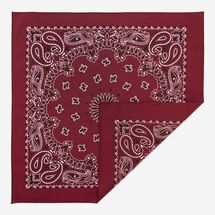
If you’re not into shawls, a bandana or multipurpose gaiter can help with sun protection and keeping dust off your face. These two are favorites of the Thomson Safaris team. The UV-protective Buff also has built-in insect repellent, which you’ll appreciate when the mosquitoes come out.
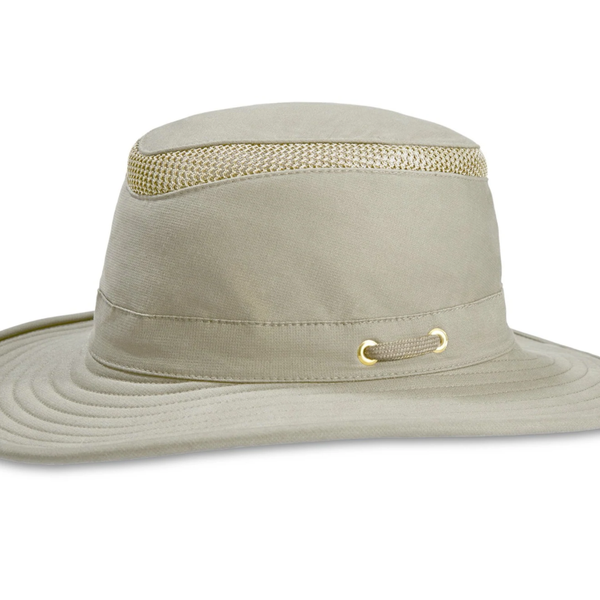
Since you’ll be out in the sun for most of the day, all of our experts recommend a hat — both to prevent burning and to keep the sun out of your eyes so you can focus on the wildebeest migration or whatever amazing sight you’ve come across on your drive. Tabuchi recommends “a baseball cap at the very minimum,” but if you want even more coverage, several of our experts suggested a wide-brimmed hat like this one from Tilley, which is a top choice among Thomson Safari guides. It’ll cover the front and back of your neck, and it’s also packable, so you can cram it into your luggage and it will retain its shape when you take it out.
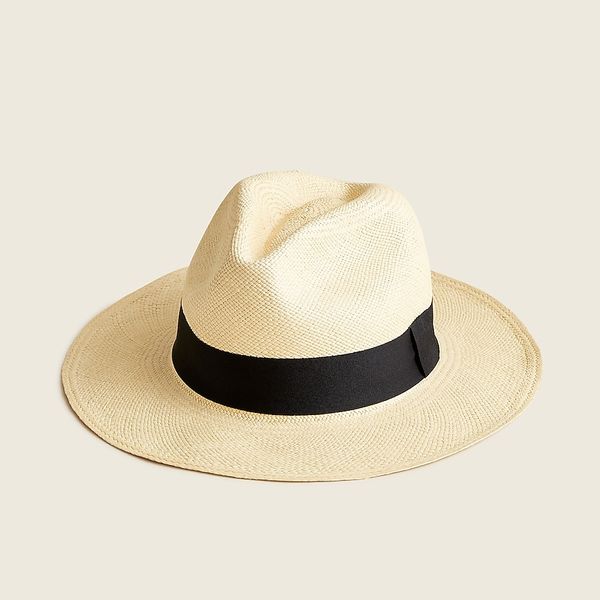
While the classic safari hat above is practical, Gordon admits it’s not the most stylish; she prefers a Panama hat like this one. You’ll get nearly as much sun protection in a bit more fashionable of a package.
Binoculars and cameras
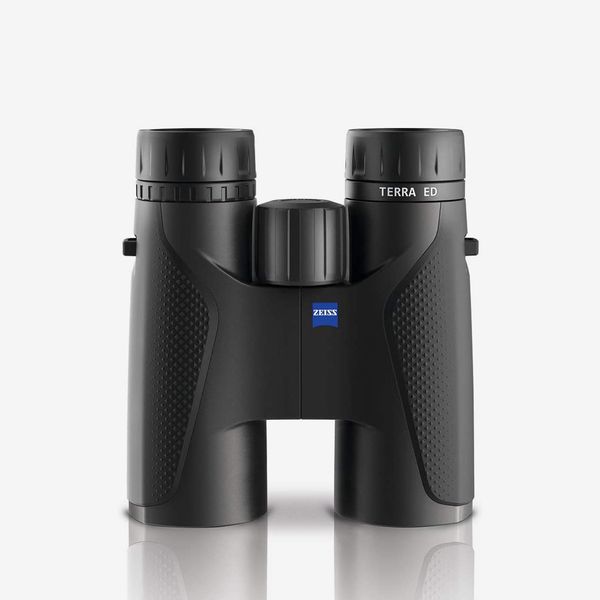
“You can’t go on safari without these,” says Steinhilber, and nearly all of our experts agree that a good pair of binoculars will enhance your trip. How close you’re able to get to animals will depend on where exactly you’re going on safari, but Tabuchi explains that in many national parks and game reserves, vehicles are restricted to the road networks, so your driver won’t be able to go off-road to follow a pride of lions or elephants bathing in a river. That’s when binoculars will really come in handy. Although some lodges and game drives provide loaner pairs, Calmeyer says you’ll often end up having to share these with other guests, so it’s worth bringing your own. Gordon adds that “not having binoculars holds you back.”
All binoculars are labeled with two numbers. The first represents the magnification power (for example, “10” means objects will appear ten times bigger than they actually are), and the second is the lens diameter, which determines the field of vision. Binoculars can range in price from under $100 to well into the four figures for a Swarovski pair that Smith calls “the envy of every safari guide and bird enthusiast.” For a safari, Smith says to look for a pair with minimum specs of 8x42, like this mid-range model from Zeiss. With these, Smith says you’ll be able to zoom in on incredible sights like a rhinoceros 1,000 yards away.
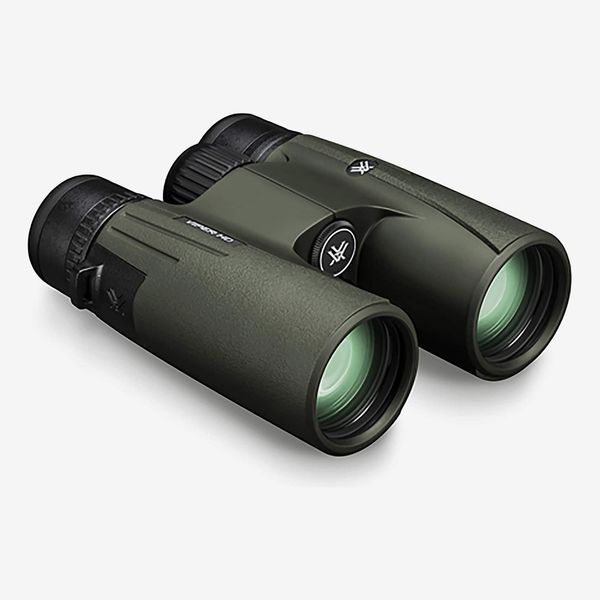
If you’re willing to make more of an investment, the Vortex Viper 10x42 are Smith’s personal favorite binoculars. “Those are really good binoculars at a very reasonable price,” he says. “I think the glass is good; it’s stable. I’ve had people compare them with much more expensive binoculars.”
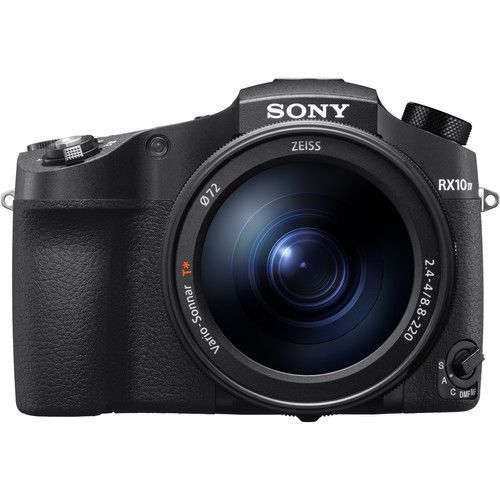
Smartphone cameras are so high-quality these days that experts say you’ll be able to get a lot of great shots with your iPhone — but on safari there are occasions when you’ll want a traditional camera. Like binoculars, a camera will be useful when your drive can’t get close to an animal and your phone camera’s zoom isn’t strong enough to shoot a clear picture from 50 yards away. Tabuchi adds that there are some areas where smartphone photography is banned to protect rhinoceroses, as poachers have used geotagged photos to track down the animals. And, as Gordon points out, if there’s any occasion to break out your fancy cameras and lenses, it’s Africa. Experts say you’ll want a minimum of 300-400mm zoom lenses for shooting at typical safari distances.
This Sony is a favorite of both Smith’s and Tabuchi’s. A bridge between an entry-level point-and-shoot and a high-end DSLR, it has an adjustable telescopic lens that zooms out to 600mm, more than enough to capture lion paws or the eyes of an elephant from a distance. Compared to a DSLR camera with multiple lenses, this one “takes up less space,” Smith says, “and you don’t have to mess around changing lenses.” Tabuchi calls it “stellar,” telling us “it’s got the functionality and zoom capabilities of a DSLR but has enough automatic features in there for dummies like myself.” (If you do choose to go the DSLR route, Tabuchi recommends renting additional lenses from Lensrentals.com to save money on expensive kits you might not use after your safari.)
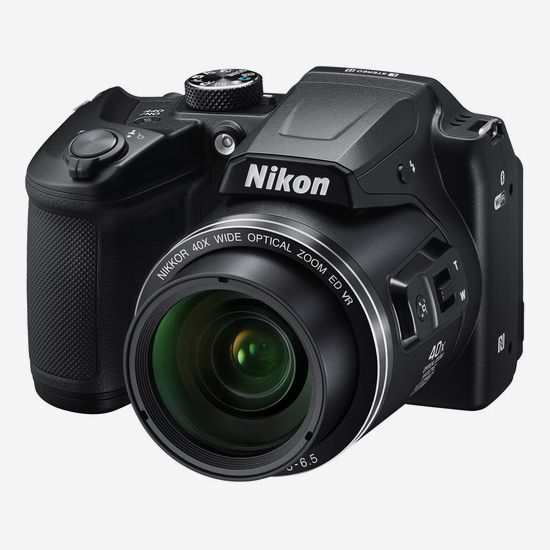
Here’s a more affordable bridge camera that made Calmeyer’s list of recommended models for Roar Africa safari guests. She admits it won’t be as powerful as a DSLR, but for the price it’s a solid option for capturing both close-ups of animals and sweeping landscape shots.
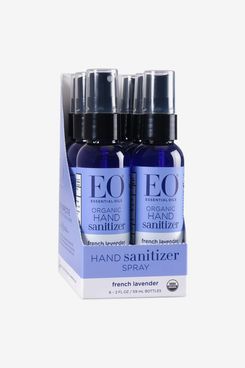
Even pre-pandemic, experts recommended packing hand sanitizer, since you might be eating lunch straight off a game drive or need to take a bathroom break out in the bush and far from running water. Of course, by now we all have our own sanitizer preferences, but Steinhilber especially likes this lavender one because she says it “doesn’t have that terrible antiseptic odor.” (Interestingly, it’s also Sarah Michelle Gellar’s favorite .)
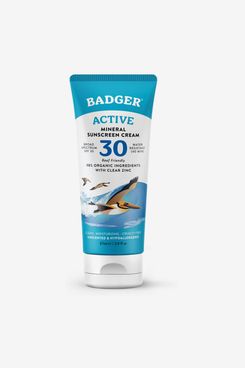
“The African sun is brutal,” says Calmeyer, and a good sunscreen is an absolute must. Any type you prefer will work as long as it has a high SPF, but if you want a safari-approved pick, Jackson says Badger is a solid “all-natural brand to use all day long.”
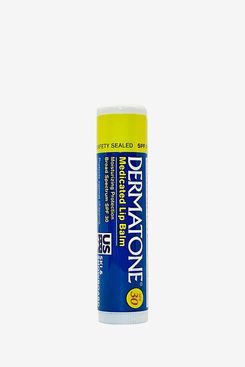
Don’t forget lip protection. Steinhilber says any lip balm you choose must have a strong SPF. She uses this one from Dermatone.
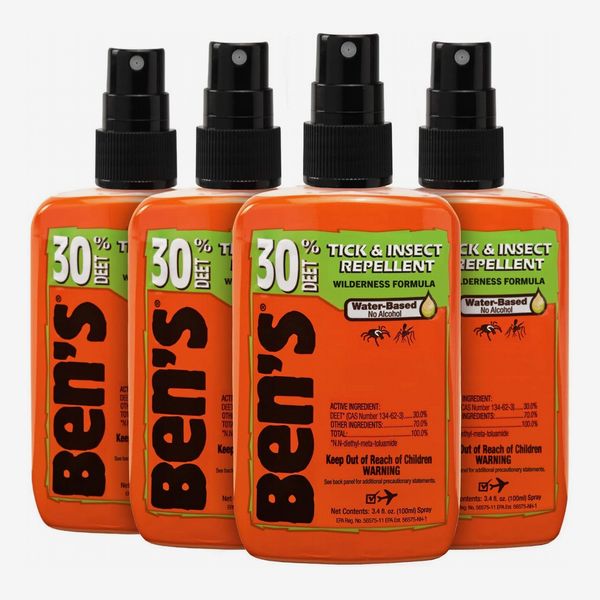
Mosquitos, tsetse flies, chiggers, and other critters are often unavoidable on safari, but a good bug spray can reduce your chances of getting bitten. Now’s not the time for organic essential-oil-based repellents that experts say won’t be up to the task. Instead, you’ve got to bring in the DEET. Brittany Silva, a safari trip manager at Thomson Safaris, says this 30 percent DEET spray is one of the best. Another good option is to wait until you land, so that you can buy bug spray from an African company and feel confident that it’s designed to repel the local insects. Calmeyer suggests the brands Peaceful Sleep and Tabard . “They work better than anything I’ve ever got from anywhere else,” she says. Gordon agrees, calling Peaceful Sleep “magical.”

If you’ve read our coverage of the best tick repellents , you know we’re already big fans of this permethrin spray, which can be used to treat clothing and gear. Smith, along with the team at Thomson Safaris, also uses it and likes the extra protection it provides. You can spray it on your shoes, your hat, and anything else you might be wearing to keep bugs at bay.

If you really don’t want to use DEET (which can be smelly and irritate skin), Smith suggests the non-toxic ingredient picaridin as an alternative. “It comes in nice, soft lotions that smell good,” he says, “and it’s just as effective as high-concentration DEET.” He says this Sawyer lotion feels gentle and non-greasy on your skin.
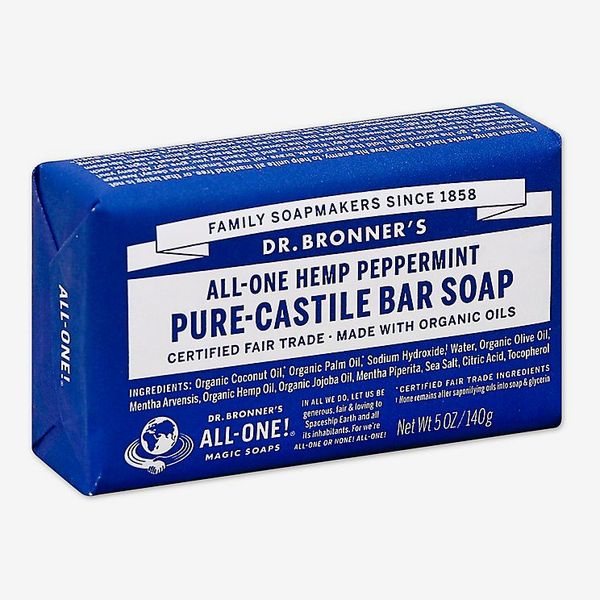
Even if your lodge has a laundry service, if you’re moving between places quickly and won’t be at a specific lodge for more than one night, Smith recommends packing soap for washing your own clothes. He says, “You can just wash your stuff and hang it up to dry while you’re sleeping, so you always have something clean.” Also, bringing your own soap is a must if your lodge won’t wash your underwear. Jackson recommends this eco-friendly, biodegradable soap for easy cleaning.
Additional gear
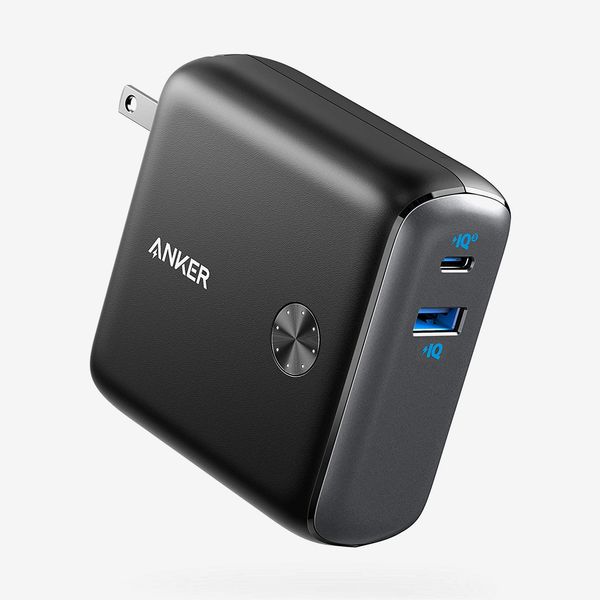
“On glamping safaris to the Serengeti, charging opportunities are generally limited to the vehicles and central lounge areas,” says Andrew Doherty, manager of special-interest travel at Thomson Safaris. Since you might not have a personal charging station in your tent or lodge, he recommends bringing a power bank that you can charge up when you’re near an outlet and then use to keep your phone and other gadgets running when you’re out of reach. “That way, you can continue to scan through selfies and edit safari shots on your phone while lying in bed listening to lions roaring in the distance.”
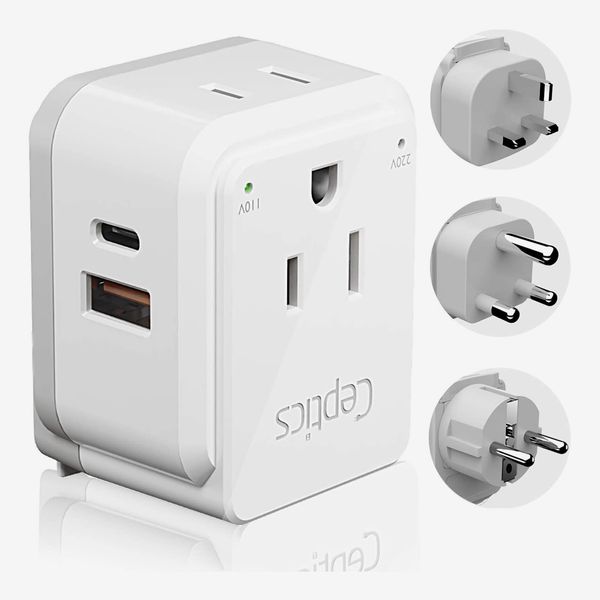
“There are three different plugs in Africa,” says Gordon. “A universal adapter is good to have because if you’re entering different countries, you’re just going to want to have all three in one.” This adapter will work in popular safari countries like South Africa, Tanzania, Kenya, and Uganda.
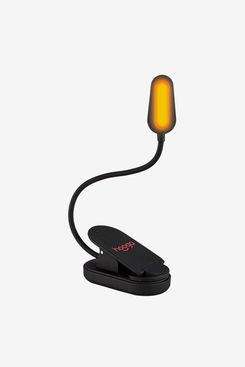
Similarly, not all tents and lodges will have lights and electricity at all times. “A lot of places are on generators or solar panels that aren’t going to be on all day or all night,” says Gordon. “The lights are getting better, but they’re not super-strong.” While she used to bring a flashlight on safari, she says she now just uses the one on her phone, but still packs a book light for reading at night. A headlamp works too, if you prefer, and we’ve recommended our favorite one here .
The Strategist is designed to surface the most useful, expert recommendations for things to buy across the vast e-commerce landscape. Some of our latest conquests include the best acne treatments , rolling luggage , pillows for side sleepers , natural anxiety remedies , and bath towels . We update links when possible, but note that deals can expire and all prices are subject to change.
- the strategist
- the trip list
Every product is independently selected by (obsessive) editors. Things you buy through our links may earn us a commission.
Deal of the Day
Micro sales, greatest hits, most viewed stories.
- 12 Things on Sale You’ll Actually Want to Buy: From CosRX to Hoka
- All of the Best Mother’s Day Gift Ideas
- What Smokey Robinson Can’t Live Without
- The Strategist’s Two-Day (Actually Good) Sale Is Here
- The 13 Very Best Black Blazers for Women
- The 16 Very Best Body Lotions for Dry Skin
- My Relentless Journey to Find the Perfect White Tee
- Everything We’ve Written About That’s on Sale at Amazon Right Now
Shop with Google


Bags designed for work, every day life, & adventure Shop canvas & leather satchels, totes, bags, & duffels
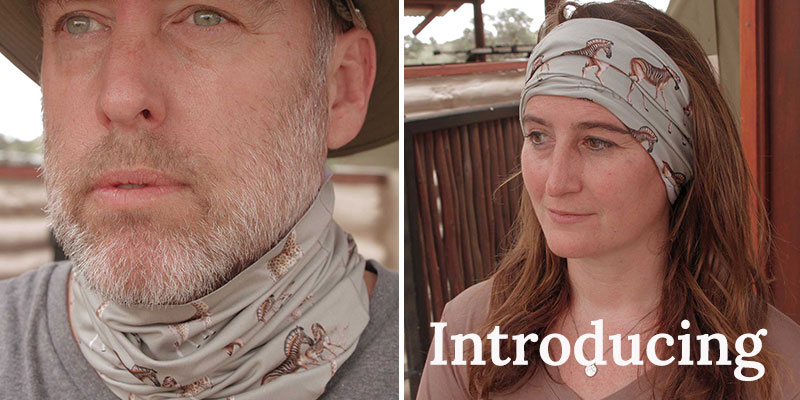
Welcome to The Safari Store UK
We are a UK company and look forward to assisting you prepare for all your adventures: at home in the UK, or away. Contact us if you have any questions | Help & FAQs
Fast UK Delivery
Get fast delivery from our base in the UK by courier. Find out more about UK delivery & delivery offers . Change country & currency >
Don't leave home without Bushman Insect Repellent
For anything you do outdoors - from safari, to camping, to gardening - use Bushman Insect Repellent for the best outdoor protection from biting bugs & insects. Add Bushman to your Basket or find out more about the Bushman Benefits .

Bestselling Women's Serengeti T-Shirt
Shop Short Sleeve | Shop Long Sleeve
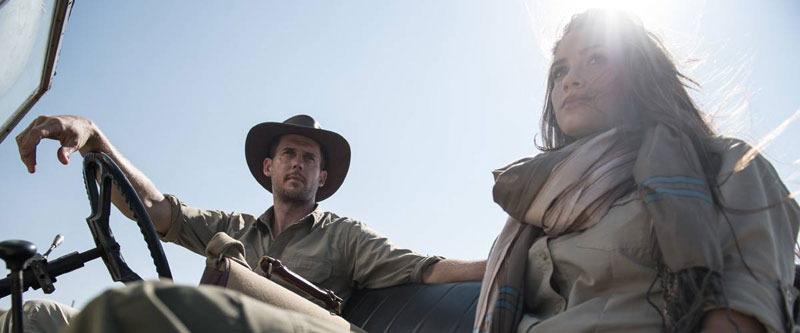
Sun Protection Safari Clothing
Opt for high-UPF hats & safari clothing styled for sun-filled days
Shop: Hats | Clothing | Sunscreen

Anti-Insect Safari Clothing
Get the best insect protection by wearing our anti-insect clothing & insect repellent
Shop: Men’s | Women’s | Kids’ | SPECIAL OFFERS: Bushman repellent
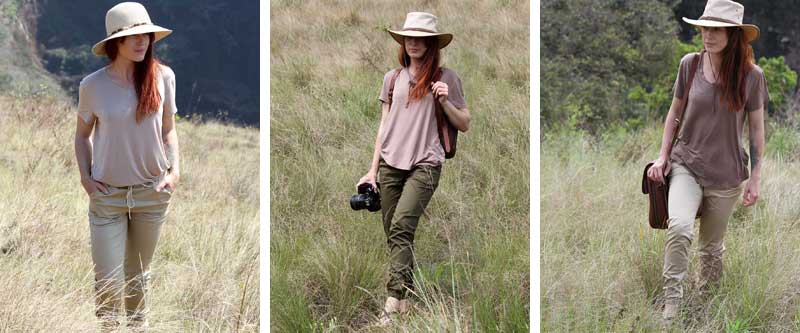
New Women's Joggers with Stretch
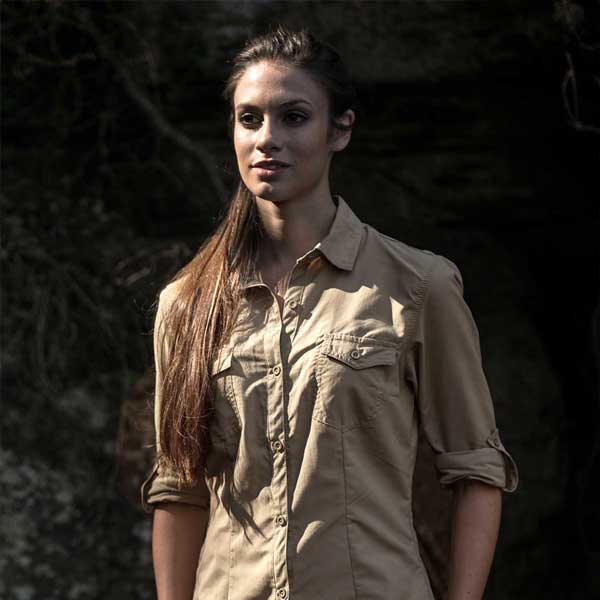
Women's Safari Shirts
Timeless Safari-Style meets Performance
Our women's safari shirts & safari jackets combine safari-inspired style & feminine cuts, with outdoor functionality & protection from the elements
Shop women's tops: Women's Safari Shirts | Women's Safari Jackets & Fleeces
Expert advice: Safari Shirt Advice Guide
Shop Women's Safari Clothing >
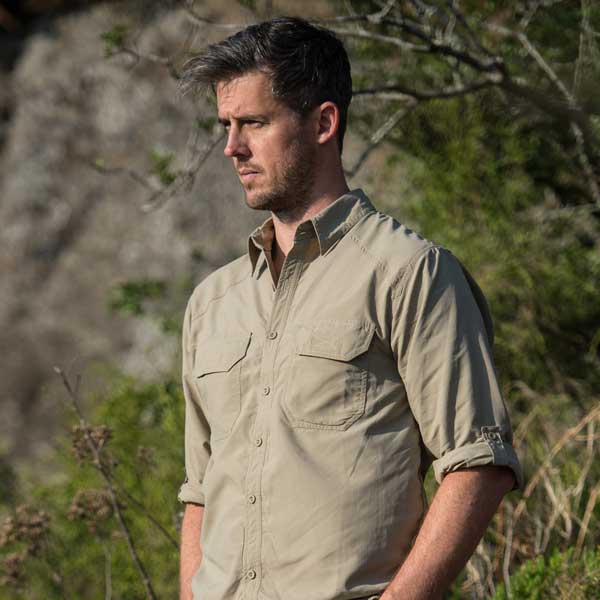
Men's Safari Shirts
Ruggedly Sophisticated for Outdoor Life
Authentic, classical safari shirt styling. Shop safari shirts & safari jackets which effortlessly take you from the city to the Serengeti. Insect & Sun defence
Shop men's tops: Men's Safari Shirts | Men's Safari Jackets & Fleeces
Shop Men's Safari Clothing >
- Popular Categories -
Your time in the outdoors is precious. Our clothing and gear is expedition tested™ to ensure that you make the most of every second of each adventure. We take you from the boardroom to the backcountry; from the couch to your favourite climb.

Women's Safari Hats
Sun Protection Meets Safari Style
Our women's safari hats combine high level UPF sun protection with safari style to suit all occasions. Shop safari hats for summer, safaris & outdoor adventure
Expert advice: Safari Hat Advice Guide
Shop Women's Safari Hats >
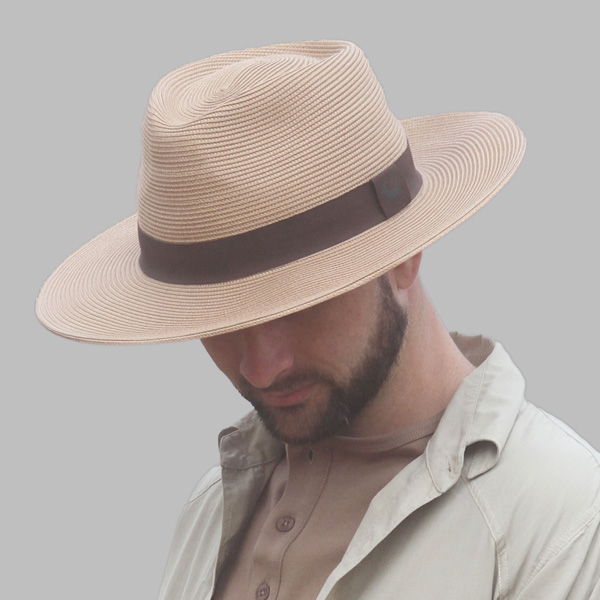
Men's Safari Hats
Sophisticated or Sporty? You Decide
Decide where to go next with our safari hat range. Shop high sun-protection safari hats which adapt to any situation, from safari to summer outdoor excursions
Shop Men's Safari Hats >

WILD ABOUT STYLE Rufiji™ APU Combat Safari Boots

Men's Anti-insect Fleece-lined Jacket

Women's Anti-insect Everything Safari Shirt

Explorer II Safari Duffel

Women’s Pioneer Anti-insect Safari Trousers

Rufiji™ BLACK - The Satchel

Women's Pioneer Anti-insect Safari Jacket

FOR SUMMER & SAFARI Canvas Safari Hat Buy now

KGALAGADI: The magic of nowhere Read & shop

KAFUE: Claire's River Recce Diary

THANDA TENTED CAMP An iPhone-only Safari Read & shop

FUGITIVES' DRIFT LODGE An iPhone-only Safari Read & shop

ZAMBEZI EXPEDITION Sailing & sketching this iconic river Read & shop

iPHONE-ONLY SAFARI A mobile adventure Read & shop

Okavango Delta: Expedition into the Unknown

STEVE BACKSHALL Meet our toughest client Read & shop

STYLE & PERFORMANCE Men's Anti-insect Everything Safari Shirt Shop now

THE OUTDOOR SAFARI CLASSIC Women’s Anti-insect Safari Shirt Buy now

THE BUILD-YOUR-BAG HOLDALL Mara&Meru™ Voyager Shop now
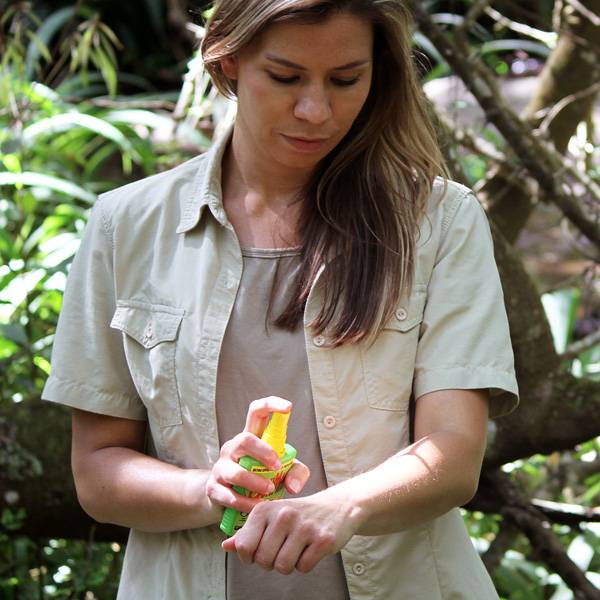
OUTDOOR PROTECTION Bushman™ Ultra Insect Spray Buy now

DON'T LEAVE HOME WITHOUT Vortex Diamondbacks Shop now
- Favourite Safari Styles -
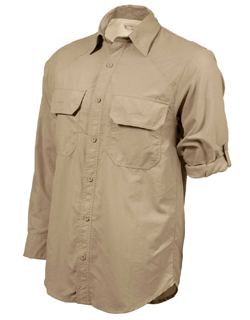
- SHOP YOUBUY, WEGIVE -
Our YOUbuy, WEgive projects are all about making a difference in Africa.
Find out more: YOUbuy,WEgive Projects
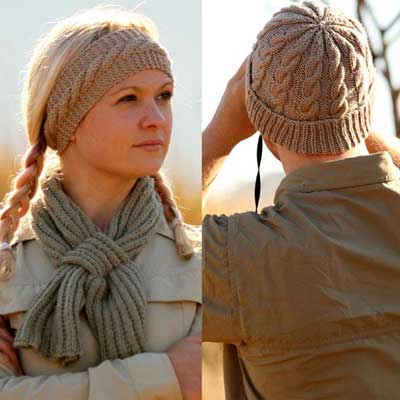
Thusk™ Knitwear Project
The Thusk™ Knitwear Project employs Zulu grannies in Africa to hand-knit luxury 100% South African wool beanies, scarves & heandbands. Shop Thusk™ - you will already feel a little warmer
Find out more: Thusk™ Knitwear Project
Shop Thusk™ >

Rufiji™ APU Boots Project
The men and women tasked with walking on patrol to protect the wilds of Africa often do not have good shoes - and so in our usual way we designed and tested our own boots for these denizens of the conservation world. We periodically donate Rufiji APU Boots to APU teams in Africa
Find out more: Rufiji™ APU Boots Project
Shop Rufiji™ APU Boots >
- GOING ON SAFARI? -
While the outdoors are at our core, safari is in our hearts. With safari experts on our team and safari in our name, it is no surprise that we are able to offer our clients the best safari packing information and advice available today. We encourage all our clients who love the outdoors but have never been on safari to go to Africa. It is magical - and very outdoors-orientated. Get safari-inspiration by reading our safari stories.
Get your FREE Safari Packing List created by our experts
Safari packing advice.
Visit our expert advice packing pages to find out what you should take on safari with you and why.
Where there is safari, great stories inevitably follow. Share in our world through informative and inspirational stories.
- RECENT STORIES -
Read: All stories

Boardroom to Backcountry
Classic summer combinations for Men
Read & shop

Virtual expedition: Okavango
Planning, rowing & writing about the Okavango Delta during lockdown

'It's always summer somewhere'
We discuss why safari clothing may just be the best outdoor clothing
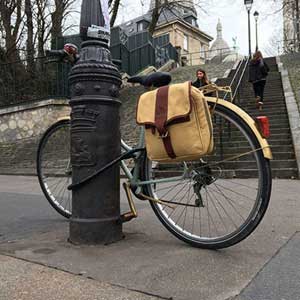
Safari in Paris
Stroll through the Paris safari lookbook for style inspiration as we take in the sights in the City of Lights
Worldwide Delivery
We are a UK outdoor company who also delivers to clients worldwide. Through our courier partners, we offer affordable and fast delivery to most countries including the UK, EU, and USA. For delivery options, free delivery offers, pricing, and terms for your country, please go to our dedicated delivery page and select your country. As always please do not hesitate to contact us should you have any questions.
At The Safari Store, we are proud to design, expedition test™, and make clothing, luggage, and gear for clients who love the outdoor life and, of course, safari. We are guided by our desire to marry safari-inspired style with high-performance materials and designs so that you not only look good but also feel great the next time you walk out your front door. We want to be your partner wherever you choose to explore - whether it be a walking safari in Africa, a walk on the Inca trail, or a walk to meet friends at your favourite local pub or restaurant. Click here to find out more about our story and what motivates us.
"Thanks for fab service"
This website uses cookies for it's shopping basket, you must have cookies enabled in order to use this site.

- Client Reviews
- Safari Blog
- Send an Inquiry
- Map of Africa
- Contact Details
- African Safari Cost
- Travel Insurance
- You are here
- The Budget Safari Blog
- Complete Safari Packing List:…

Complete Safari Packing List: Easy Guide 2 What to Pack for African Safaris
Posted by Landia Davies on February 01 2022 in African Safaris & Tours Enquire Now!
This Complete Safari Packing List tells you exactly what to pack for African Safaris on a budget. Our easy guide on what to pack for safari trips provides an essential safari packing list ideal for planning your first safari in Africa, honing your packing skills, or packing on a budget, in a hurry.
Safari Packing Lists for African Safaris on a budget
- Essential Safari Packing List - the must-haves
- Important Items to Pack for African Safaris - don't forget
- What to Wear on an African Safari - clothes to pack
- Recommended for Your Safari Packing List - good to have
- Useful Things to Pack for Safaris in Africa - handy items
- Do NOT Pack for Safari Trips - leave at home
- Nice to Have on Safari in Africa - nice-to-have items
- Safari Packing List for Gifts & Donations - things to give
- Africa Safari Packing List Tips - how to pack
Let's start with the essential items to pack for safari trips before we go into more details (like the nice-to-haves, what to wear on an African safari, packing no-nos, and more).
1. ESSENTIAL SAFARI PACKING LIST
These are the most important things to take on safari with you. You do NOT want to forget to pack these items. In fact, you won't be going anywhere without some of them.
Passport with all the required visas for every country your African safari travels to and through.
Some cash and bank cards (Forex and/or Credit Card). You can also use e-wallet apps these days to avoid carrying cards and cash.
Air tickets and travel vouchers for any pre-booked safari tours.
Vaccination certificates (yellow fever, COVID etc) where required. Some vaccinations need to be taken well in advance (see Vaccinations needed for your African Safari )
Medication: malaria prophylactics if advised (see Malaria Made Simple ) and any personal medication (also take your prescription in case of an emergency - your medication gets lost, wet, eaten by a baboon, etc)
Travel insurance policy details. Your policy number and the contact details for claims and emergencies. (Comprehensive travel insurance is mandatory for African safari bookings).
Cell phone. Most globetrotters travel with a smartphone to stay in touch with family and friends, connect to Wi-Fi, and for emergencies.
Copies of your important documents: as a precaution take a copy of your air tickets, travel insurance policy, vaccinations, visas, prescriptions, and passport.
A hard copy of your most important contact numbers in case you lose your phone.
Top Safari Packing Tips for Essential Travel Items
#1: Pack your essential documents (#1 to #7) separately to your copies of these important documents (#9) rather than putting all of your 'eggs' in one 'basket' (i.e. a piece of luggage).
#2: Keep your essential documents on you (think fanny pack/moon bag, man bag, cargo pants) or in your day bag which you keep with you. Don't pack your essential documents in your main luggage as baggage does go missing sometimes.

back to top
2. IMPORTANT ITEMS TO PACK FOR AFRICAN SAFARIS
Take the following items from the safari packing list with you for the best African safari experience. These are the things to pack for a happy safari trip.
1. Sun Protection:
- Sunblock - an eco-friendly 30 SPF (or higher) sunscreen.
- A sun hat. Avoid the floppy straw hat, as experience has shown that you'll spend more time clutching onto it than the shade is worth!
- Sunglasses are excellent for keeping dust and small flying insects out of your eyes, as well as the blazing African sun.

2. Insect Repellents:
- ECO-FRIENDLY insect repelling lotion or body spray/mist and ECO-FRIENDLY insect spray or citronella products to deter the critters.
3. Head Torch:
- Torch or headtorch. Take a light source for around camp and for getting to/from the safari vehicle on night drives without stepping on any wild animals' toes. It gets really dark out in the bush at night so you need a light source to navigate your way after dark. The headtorch is best as it leaves your hands free to do stuff.
4. Day backpack:
- A bag for day trips and excursions will come in very handy (a real must on the safari packing list).
- You may want to take a money belt (also known as a moon bag, fanny pack, and bum bag) for travel in cities.
5. Hand sanitizer & a facemask:
- Hand sanitiser (spray or gel) has become an important item to pack for safaris, as with all travel, due to Covid-19. Most places you go will have hand sanitiser but it is best to carry your own just to be safe.
- Sanitizer is great for keeping fresh and healthy on the road, especially if access to clean water is limited. Wet wipes are also handy but less eco-friendly so use them sparingly.
- In most African countries it is mandatory to wear a facemask in public, as is the case in airports and most countries in the world at present.
Safari Packing Tips for Important Items
#1. When it comes to choosing a sun hat, go with functionality over form. Take a snug-fitting peak or one of those typical safari hats that compliment khaki shorts and protect your neck too. A round-brim hat with a drawcord to keep your hat on in windy conditions is best.
#2. Insect repellent does NOT replace the need for anti-malaria medication! Packing insect repellents is recommended in conjunction with malaria prophylaxis, especially in high-risk malaria areas. Not getting bitten and bugged by mosquitoes also makes travelling far more pleasant, but taking anti-malaria medication is the most essential part so check if you need to take precautions well in advance (See Malaria Made Simple ).
#3. Headlamps are ideal as you still have both hands free to do stuff. Plus you can get headlamps with red lights for watching nocturnal animals without chasing them away. (Remember extra batteries or get a USB rechargeable headtorch and remember to pack the charging cable).

3. WHAT TO WEAR ON AN AFRICAN SAFARI - CLOTHES TO PACK

Knowing what to wear on safari is important because it will affect your levels of comfort. The overall recommendation is to pack clothes that are comfortable, durable, and functional.
- A lightweight long-sleeved shirt or two - these keep the sun and insects out and help you stay warm during cool morning and evening periods.
- Closed shoes (again, comfortable) - for walking in the bush or in wet conditions. You don't need Doc Martens or army boots, just worn-in, comfortable, and sensible footwear. Leave the platforms and high-heels at home.
- Open shoes - lightweight, slip-on shoes for around camp and at the pool and beach. Avoid heels.

- Long pants and/or shorts - I recommend long pants to protect your legs from scratchy bushes (if walking in the wild) and insect or tick bites.
- A jacket - usually a lightweight, rainproof jacket will be enough for cool nights unless you're heading to more mountainous and colder areas (check seasons and ask your travel advisor).
- Take natural and light-coloured clothing - avoid the glaring primary and neon colours that get you spotted first. Black garments will get you baking in the sun, while white clothes will create glare and become brownish soon anyway. Camo wear isn't necessary, just go with neutral tones.
- If you're travelling to places with distinct wet seasons during the rainy months go prepared - waterproof shoes and a rainjacket etc.

Safari Packing Tips for Clothes on Safari
#1. Pack light. Don't overdo it when packing clothes for your safari!
#2. Activewear and outdoor clothing and gear will serve you well on safari in Africa. Think, comfortable, breathable, and long-lasting.
#3. Avoid bright primary colours and neons. Opt for muted tones (beige, khaki, pastel green, light blue, etc) instead.
#4. Remember that some cultures are more conservative than others, so dress respectfully (wear clothes appropriate to the local customs).
4. RECOMMENDED FOR YOUR SAFARI PACKING LIST
You'll kick yourself if you forget to take these handy things on the african safari packing list..
- Binoculars - you don't want to wait to share binoculars, because by the time it's your turn the action is often over. Take your own binoculars, even night vision binoculars if you can!

- Digital camera - a Single Lens Reflex (SLR) with memory card ports supporting SD cards, or a smaller Superzoom Camera. It's the size (not too big) and a good zoom lens that counts when choosing what camera to take on safari.
- Charging devices - The correct plugs or adaptors for the areas your safari visits and all of your chargers, batteries, and device power cables.
- Camera storage devices - enough memory for a bazillion photos! Take extra memory space along.
- A warm hat (aka a beanie) - early mornings and evenings can get chilly, especially on game drives so take a warm hat.

- Toiletries (don't forget sanitary wear). Take biodegradable toiletries with you if your safari travels into the bush, especially to pristine natural areas.
- Swimwear - costumes for refreshing dips in the camp swimming pools, waterfalls, rock pools, lakes, oceans, etc.
- Comfortable shoes. Sensible shoes for walking in - avoid big boots as these are heavy, space-gobblers.
- If you plan on cycling then take light gloves for biking in the sun (top tip from Neil Foulger's safari review )

Safari Packing Tips for Recommended Items
#1. Pack your toiletries and devices in wet bags to ensure that they stay dry.
#2. Keep your camera in your daypack/on you.
#3. Decant your toiletries into smaller containers to save space (shampoo, conditioner, moisturiser, etc).
5. USEFUL THINGS TO PACK FOR SAFARIS
- Pocket knife - you'll get lots of neat opportunities to utilize your pocket knife and feel like a real outdoor survivor.
- Wet bags - so handy, you'll keep finding more uses for these as you go. A great way to waterproof items and keep snacks fresh and safe from creatures and the elements.
- Antiseptic cream - a multi-purpose ointment for minor scratches, bites, and burns (like Zam-buk).
- Lip ice - being outdoors in often hot and dry places, lip ice is great for preventing and soothing chapped lips.
- Guides/Apps - to local flora and fauna, for insight and useful information about the wild things you encounter in Africa (see Top 6 Wildlife Apps for your African Safari ).
- Sarong or kikoi - always useful when travelling. Used as a scarf, an extra layer for warmth, to keep the sun and mosquitoes off your skin, as a picnic blanket or lightweight towel or small pillow, and more.
- Re-usable shopping bags - handy for carrying things on day trips, boat rides, beach outings, and market visits. Fabric shopping bags are great alternatives to plastic bags which are banned in many African countries.
- Earplugs to block out noise when you need to sleep or zone out.

6. DO NOT PACK FOR SAFARI TRIPS
When packing for your safari in Africa do not pack the following:
- single-use plastic. Banned in many countries especially in East Africa.
- unnecessary jewellery and expensive accessories
- items prohibited by airlines, check your airline regulations (seeds, plants, certain foods, etc).
- disposable water bottles. Most safari trucks and lodges have water dispensers for topping up reusable water bottles. Alternatively, buy a big 5 or 10-litre water container and top-up from that along the way.
7. NICE TO HAVE ON SAFARI IN AFRICA
A few things you will be glad you packed for your safari in Africa (if you have space).
- Lightweight travelling hammock - especially for beach tours and safaris into the bush where you will want to laze in the scenic settings.
- GPS app - you won't get lost with African Budget Safaris but a GPS device or app on your phone is handy for finding local sights and restaurants and keeping track of your journey through Africa.
- Digital camcorder - a small handheld video recorder for making personal and YouTube videos that capture all the action on your trip.
- A good book, iPod, iPad, or games - to keep you entertained on the road and while waiting for transfers and relaxing on your safari.
- A small diary - for recording your travel experiences and noting down the names of animals/birds sighted on game drives as well as useful local words and phrases.
- Headphones - nice for listening to a soundtrack while you watch the scenery on the road or for falling asleep, as well as for audiobooks.
If your luggage is overloaded it may be better to leave some of the extra items from the safari packing list at home. Remember there are shops in Africa and many safari lodges have small libraries you can use.

8. SAFARI PACKING LIST FOR GIFTS & DONATIONS
Personally, I am in favour of donating directly to charitable organizations or volunteering in support of good causes. But, if you'd like to give gifts and physical donations to people and places on your safari here are a few suggestions.
- Pens, pencils, notebooks, and colouring pencils
- Extra clothes or shoes
- Toiletries (soap, toothbrushes, and sanitary pads)
- Small tokens/souvenirs unique to your home country

Some responsible travellers donate their old camping gear, sleeping bag, clothes, and shoes to charity at the end of their safari trips which is another easy way to give back (see Responsible Safari: how to travel ethically ).
9. SAFARI PACKING LIST TIPS
Some easy guidelines on How to Pack for African Safaris.
- Don't overdo it. Packing too much for safaris is a common mistake! If your African safari includes domestic flights between destinations in small fixed-wing planes then your luggage allowance is usually restricted to a weight limit of 15 kg /33 lb (check with your travel advisor).
- Soft bags are recommended as safari luggage. Go with a good quality, hardy duffel bag that is light and secure. Nothing fancy. You can even get soft bags with wheels and handles. Just make sure that your bag can be secured properly with sturdy locks.
- When going on a guided group safari (like many tours with African Budget Safaris ), you don't need to worry about the emergency first-aid kit and most of your meals are included in the tour price.
- Your guides know where to stop for supplies and can get hold of the most important things, if and when you are caught unprepared.
- Towels, bedding/sleeping bags, and basic toiletries may be provided as part of your safari tour - check when booking your safari.
- Remember not to pack your valuables into your main luggage (stored in the baggage compartment of the plane) when flying as bags do go missing at times.

There you have it - the Complete Safari Packing List for the best African safari on a budget. Oh, and one more thing... Don't forget to bring a healthy sense of adventure with you to Africa : )
If you have any essentials or nice-to-have items to add to our Easy Guide on What to Pack for African Safaris, we would love to know!
Talk to a safari pro for travel advice and tips on planning your African safari. And, let's get packing!
If you liked this post, these trips cover similar ground…
- Cape Town to Victoria Falls African Safari
- 57 Day Best of Africa Safari (Camping Overland Tour)
- 20 Day Southern African Safari Adventure - Northbound
About the Author
Landia davies content manager & sculptor.

Similar & Related Blog Posts
Below you’ll find further reading and articles related or similar to this post.
Malaria Made Simple: How to Stay Safe on African Safaris
Briony Chisholm | February 13 2015


8 Reasons it’s Best to Book a Safari with African Travel Agents
Landia Davies | December 08 2021

Best Cape Town Safari: Big 5 game reserves near the city (on a budget)
Landia Davies | April 01 2024

Most Endangered Animals in Africa - Where to See them & How to Help
Landia Davies | August 21 2018

Vegetarian Guide to African Safaris: top tips for vegans on safari
Landia Davies | July 08 2013

What’s a safari and what is a wildlife safari in Africa like nowadays?
Landia Davies | May 06 2022

Responsible Safari in Africa: how to travel ethically
Briony Chisholm | October 17 2018

10 Best National Parks in Africa - in the Top African Safari Countries
Landia Davies | March 05 2024

The Safari Safety Guide: How to Stay Safe on African Safaris
Briony Chisholm | June 15 2022
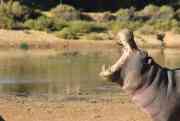
Tipping on Safari: The Best African Safari Tipping Guide on Who & How to Tip
Andrew Hofmeyr | August 23 2023

Plan your Dream Botswana Safari on a Budget in 7 Easy Steps
Landia Davies | April 26 2023

The Best Beaches to visit on African Safaris
Landia Davies | August 01 2012

Private Group?
A private, tailor-made safari is within your reach. Experience all of your bucket-list safari related items on a budget now.

- South Africa
- The Ultimate Safari Planning Guide
- Safari Packing List
- Safari Luggage
- Safari Budget Guide
- Safari Reading List
- First-Timer’s Tips
- A Typical Day on Safari
Africa , Botswana , Kenya , South Africa
Safari packing list: what to pack & wear on safari in africa.
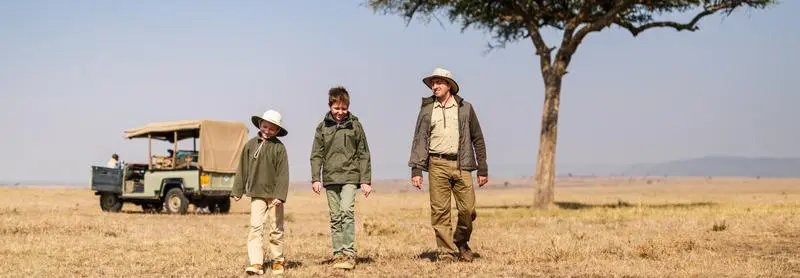
What to pack for a safari is something many travellers and safari-goers agonise over.
The weight limits of small planes, the need to squeeze your bag into tight spaces and the changeable weather conditions can make it tricky to choose what to wear in Africa, let alone what to pack.
This safari packing list shares my favourite travel products and safari clothes to take on your next wildlife trip. And make sure to read on to the end to find your free downloadable packing checklist!
What to Pack: Safari Clothes
Long-sleeved shirts are considered safari staples for good reason. Not only do they protect you from harmful bug bites and sun rays, but they’ll also make sure you look the part!
Pick a slightly tailored style for a more flattering fit, and opt for neutral colours to help you blend in with the landscapes.
My favourite safari shirts for women:
- This Craghoppers safari shirt is made from a mosquito repellent material, and also keeps you cool thanks to the light, moisture-wicking design. The pockets are large enough to store your essentials when out on a game drive too. But if this one isn’t quite your style, Craghoppers has plenty of other options to suit your tastes.
- My favourite type of shirt to wear on safari, this Tentree button-up can be layered over t-shirts for extra warmth or simply on its own too. Being a less traditional option for safari, it’s ultra-stylish too!
- Cotswold Outdoor has plenty of options for safari shirts from well-known outdoor brands. This Jack Wolfskin khaki shirt is very flattering and fashionable enough to wear when you’re not on safari, while the Columbia version is ideal for hiking too.
T-shirts should appear on every packing list for a trip away, but especially a safari one! Not only can they be easily layered under shirts and over long-sleeved tops on cooler days and on their own in hot weather, but they can also be dressed up with a skirt or smart pair of trousers for candlelit dinners.
Opt for an airy t-shirt made from organic cotton and you’ll have a safari staple that doesn’t cost the earth.
My favourite t-shirts for women:
- As it’s made from a special mosquito repellent fabric, this Nosilife short-sleeved t-shirt is a great choice to wear on safari. Plus, it’s moisture-wicking too so you’ll stay comfortable even under the heat of the African sun.
- Tentree does the basics very well, and this t-shirt is no exception. Available in a range of colours and made from organic cotton, it’ll keep you looking and feeling great. What’s more, every item purchased from Tentree plants 10 trees in the areas that need it most, so you’ll be doing good too.
- Ayacucho’s basic t-shirt is in a flattering striped pattern. It’s also made from organic cotton to keep you cool and odour-free too.
Long-sleeved tops
Long-sleeved tops are versatile pieces of clothing that make layering really easy for those unpredictable weather days. As well as warmth in the early mornings and late nights, they also provide protection from the sun and biting insects when they’re most active.
Cotton tops are a great choice, as they’ll keep you cool and comfortable. I tend to go up a size for extra airiness.
My favourite long-sleeved tops for women:
- My stripy long-sleeve tops quickly became my favourite thing to wear on safari. I loved how light and baggy they are, keeping me cool on hot days but also covered on cold ones. The slouchy fit was also really flattering and kept me feeling stylish on game drives. Even better, this top is also made of mosquito repellent material to keep you safe when travelling.
- This essential long-sleeved t-shirt from Tentree is made from a mixture of organic cotton, recycled polyester and the tree fibre, Tencel. They call this mix their treeblend, which means you’ll be looking good while doing good too.
- This long-sleeved t-shirt by Icebreaker is made of a blend of Tencel tree-fibre and merino wool that boasts moisture-wicking and odour-resistant properties, as well as Cool-Lite technology, which helps regulate your temperature and keep you cool in warm climates. Perfect for a safari!
Sweaters/Hoodies
An unexpected essential in any safari packing list is a warm sweater or hoodie to keep you protected from the cold weather of early mornings and late nights.
My favourites for women:
- Tentree’s cotton crew sweater is a really flattering fit made with 100% organic cotton. It’s really soft and cosy too and, remember Tentree will plant 10 trees for every item purchased.
- If you want a light hoodie to take the edge off on a cold morning, look no further than the HeiQ Viroblock hooded jacket from Craghoppers . The anti-microbial coating keeps you protected from bacteria, mould and mildew, while the SolarShield fabric is equivalent to SPF40.
- This classic sweatshirt from Patagonia is made from organic cotton, using 82% less water and 12% less CO2 than traditional production methods. It’s a really comfy fit and is designed to keep you warm while out in the bush or around the campfire.
An absolute must if you want to rock safari guide chic, a pair of shorts makes a great addition to your packing pile. Not only can you store lots in the pockets, but you’ll look good doing so!
My favourite shorts for women:
- As with all Craghoppers Nosilife clothes, these navy shorts are designed to protect you from insect bites while keeping you comfortable and stylish out in the bush. Pair with a long sleeve shirt for ultimate protection.
- These high-waisted organic cotton shorts from Tentree make ideal safari wear. Their flattering fit and range of colours mean you won’t just want to buy one pair!
- Barbour makes great quality outdoor clothing, and these shorts are no exception. The comfortable cotton material has a hint of elastane for a slight stretch, making them wearable for everyday use as well as on safari.
You’ll need at least one pair of full-length trousers to wear as a staple on safari. By buying some that cover your ankles, you’ll be protected from biting insects and the sun, as well as any other creepy crawlies you might come across when on a walking safari.
My favourite trousers for women:
- These lightweight jogging bottoms were pretty much the only trousers I needed on safari. And also now I’m home for that matter! They are light and baggy enough to keep you cool in the African heat, but also warm enough that you wouldn’t need another layer underneath when it turns cold.
- Craghoppers’ Kiwi Pro trousers are the choice of many safari-goers and outdoorsy folk, and it’s easy to see why. They’re made incredibly well from recycled materials, and the straight leg gives a flattering fit when paired with walking shoes.
- These slouchy jogging bottoms from Patagonia are the ultimate in comfort. The stretchy waistband and drawstring tie will keep you cosy no matter what you wear them for, while the hemp and recycled polyester fabric make them an ethical choice too.
A good pair of leggings will keep you warm and comfortable when travelling on aeroplanes, but can also be paired with safari shirts and long-sleeved tops for a stylish look on a game drive.
My favourite leggings:
- If you’re travelling in winter, these Nosilife leggings are a great choice to keep you warm when out in the bush. I wore them underneath a long skirt in the evenings and on their own with a top during the day.
- Though designed primarily as activewear, these Tentree leggings are a great choice for when you want to combine comfort, style and sustainable practices. Now available in a range of colours, you’re sure to find some you love!
- These North Face leggings are a classic choice for wearing on safari as they’re breathable and lightweight. They’ll easily slip into your safari luggage!
Skirts & Dresses
Dresses & Jumpsuits
A shirt dress is the favourite piece of clothing for many influencers on safari. They’re stylish and comfortable, and they come in a huge range of colours and styles. Though you might be tempted by a black or navy blue shirt dress, nothing says safari quite like khaki!
Equally, jumpsuits are a great way to dress up on safari. You might have a candlelight dinner or sundowner where your standard safari wear just doesn’t cut it. Stay practical and stylish with a jumpsuit, but do remember to wear a vest underneath just in case you need a bush wee – they can be hard to get in and out of when relieving yourself behind a tree!
My favourite dresses and jumpsuits :
- You can’t get more safari classic than this Nosilife Savannah Dress for Craghoppers. The shirt dress is finished perfectly in a range of khaki colours, while the supplied belt adds a fashionable touch.
- The Cypress dress by Tentree has a flattering halterneck style, and an elasticated waistband for a slouchy, casual fit. It’s a great choice for safari as the Tencel fabric is sustainable, while the side pockets can keep your phone handy for those perfect shots!
- If you’re a jumpsuit fan, look no further than the Slater Jumpsuit from Tentree . Like the Cypress dress, it’s made from Tencel fabric, which is soft, sustainable and very lightweight to keep you cool in the hottest of locations. Just remember it can be tricky to take off if you need to answer the call of nature out in the bush!
- The Ayacucho Goa shirt dress is my ideal choice for safari as it’s made of a linen blend, making it breathable and really soft too – perfect for warmer days! The length is very flattering, while the longer sleeves will keep your arms protected from the sun too.
For more advice on choosing your perfect safari dress, check out my dedicated guide to safari dresses and jumpsuits next.
Perfect for evening meals when you want to look a little fancy, a skirt pairs perfectly with a plain t-shirt. Just remember to wear mosquito repellent or a pair of leggings underneath if you’re prone to bites.
My favourite skirts:
- The paper bag waist and mid-length fit on this Tentree skirt is incredibly flattering. Its Tencel fabric is made for warmer climates, while the elasticated waist is very comfortable no matter what you’re up to.
Depending on the season you’re travelling in, a raincoat can be absolutely essential. For example, the rainy season falls in the summer months in South Africa. This can make game drives and bush walks uncomfortable if you don’t take your waterproofs. It’s better to be prepared and take one with you!
Pack one made from light material to keep you cool, even in tropical downpours.
My favourite raincoats:
- This lightweight waterproof jacket is ideal for moderate to heavy downpours and is made from recycled materials to help you do good for the planet too.
- The Nimbus short rain jacket from Tentree is packed with features, from the pack away hood and plentiful pockets to the fully waterproof and recycled fabric.
If you only choose to pack one thing from my safari packing list, make sure it’s a fleece! If this is your first time going on safari, you’ll be shocked at how cold it can get in the early morning when you’re racing through the bush to reach a sighting. And after the sun goes down, a warm fleece is the perfect antidote to those chilly night drives after the sun goes down.
My favourite fleeces:
- The Stromer fleece jacket from Craghoppers is the perfect choice for a safari. It has a really flattering fit and kept me really warm and toasty, even on the coldest mornings in South Africa. Plus, it comes in a choice of beautiful colours, so there’s one for you no matter what your style.
- Jack Wolfskin is well-known for its outerwear, and with good reason. This classic fleece jacket is really well designed to keep you warm thanks to its hand-warming pockets and insulating fleece fabric. Ideal for any weather!
Remember it can be really chilly at night in Africa, so you’ll want a pair of pyjamas to stay toasty in bed. Choose jersey shorts and short-sleeved tops if you prefer, but long sleeves and bottoms will keep you snug and protect you from mosquitoes during the night.
My favourites:
- The destination tank is a comfortable sleeveless option if you prefer having your arms free during the night, while the long-sleeve version will keep you warm and toasty under the covers.
- Tentree – These jersey shorts are ideal for sleeping in. They are soft, and comfortable and the elasticated waistband means they’ll stay on all night. Though if you’re after longer bottoms, try the joggers .
Comfortable shoes
Don’t forget your feet! Though you may spend most of your time on safari in a vehicle, drinking around a campfire or relaxing in your tent, you may be lucky enough to stay somewhere that allows bush walks. You’ll definitely want comfortable shoes for that!
My favourite shoes to wear on safari:
- You’ll know from my travel blog’s review of Allbirds that they’re my favourite shoes to wear in most circumstances, and that includes safari! The Wool Pipers will keep your feet toasty during cold mornings, without being too sweaty when it gets hot. But if you prefer a thinner, more airy and breathable fabric on your feet in hot climates, try the Tree Skippers .
- Merrell makes great walking shoes, and these Siren 3 sneaker-style shoes are perfect for safari. They’ll keep your feet protected from nasties on the ground, but are also really comfortable no matter what you choose to do in them.
Even though most safari holidays don’t include time at the beach, flip-flops are still a great idea to pack in your suitcase. If your lodge has an outdoor shower or swimming pool, flip-flops will make getting back to your room really comfortable.
My favourite flip-flops:
- These North Face flip-flops are a classic choice, but you can’t really go wrong!
Accessories
A large, lightweight scarf has many uses on safari: place it over your knees on a game drive and it’s a blanket; wrap it around your waist over your swimsuit and it’s a sarong for the pool; use it to cover your shoulders as protection from the midday sun, or simply wear it as a scarf to protect from the biting cold before the sun comes up and after it goes down.
My favourite scarves for wearing on safari:
- This NosiBotanical shawl is large enough to use as a blanket, but also light enough to wear around your shoulders in the heat. The NosiBotanical technology keeps you protected from biting insects too, so it’s a great choice for your safari packing list.
- The Tentree Peaks blanket scarf , as its name suggests, is multifunctional as both a blanket and a scarf and the pattern is really stylish and perfect for safari too.
- The Bart’s Witzia scarf is the most traditional style scarf on this list, meaning it’s designed to keep your neck warm. This makes it a good choice for colder weather.
On really cold days, you’ll be so glad you packed your beanie hat! In fact, I was so cold the last time I was on safari in South Africa after leaving my beanie at home. Thankfully, the lodge had an onsite store so I could stock up. But don’t be like me – make sure you’re prepared in advance!
My favourite beanies:
- I love bobble hats, and this Craghoppers bobble hat is adorable. It’ll absolutely keep your ears and head warm in the cold, but you’ll look great at the same time!
- The Kurt beanie is a plain but very insulating choice. Available in a wide range of colours, it’ll provide an essential extra layer on cold mornings and evenings in the bush.
- The Rab Braid Beanie is the ultimate in winter hats. Not only is it stylish thanks to the braiding pattern on the outside, but the fleece lining will keep you really warm and toasty on even the coldest of days.
Baseball Cap
Another one of my essentials, a good baseball cap will both protect your head and shield your eyes from the sun when on safari. I wore mine every drive, without fail, and really felt the part each time I wore it.
My favourites:
- The Cork Icon Elevation hat is available in a range of safari colours and will protect your eyes and scalp from the sun in style.
- This North Face cap is made from recycled materials, making it a sustainable choice, and a good one too!
Fedora/Sun Hat
Another influencer essential, a fedora hat pairs perfectly with the shirt dress for those back-to-the-camera photo shoots.
- The Festival Hat is incredibly popular. Every time it came back into stock, it’s quickly snapped up, so make sure you’re speedy if you want one! Available in a great choice of colours, it’s made from sustainable fabrics and will complete your safari look perfectly.
- This Kiwi Ranger Hat is a traditional safari-style hat, made from recycled plastic bottles and finished with a water-resistant coating. Even better, it’s a NosiLife hat, meaning it’ll keep your head safe from insect bites too.
- This bucket hat has a wide rim to protect your eyes and face from the sun, while the chin strap will keep it firmly in place in windy weather.
For more safari hat inspiration, check out the dedicated safari hat buying guide next!
I don’t tend to wear gloves on safari as I like to keep my hands ready for taking photos. However, if you know your hands get cold, gloves can be a good idea.
- The Montane Powerdry gloves for women are touch-screen compatible, thanks to the ingenious fabric and design. Plus, they’re really lightweight but still keep your mitts warm on cold days.
- These North Face gloves are made from sustainable materials, and also have an e-tip feature, which means you’ll still be able to use your touchscreen phone while wearing them.
If you’re lucky enough to stay in a safari lodge with a swimming pool, you’ll want to have your swimwear on you!
- This Speedo bikini set features a flattering longline bikini top as well as a classic striped pattern. The swimsuit is incredibly quick-drying, which makes it a breeze to pack away in your luggage before your flight.
- This Briganha swimsuit is a one-piece design with a plunging neckline. The best part? The fabric is treated with Craghoppers’ Nosilife technology that is designed to protect you from insect bites while you swim. Perfect for an African safari!
Other Safari Packing Essentials
Entertainment
When not on a game drive, you’ll wish you had a good book with you to while away the hours. Lucky for you, I’ve shared all my favourite books to read on safari in another post, so read that next.
But if you’re after a sneak preview, here’s my top 3:
- A Year in the Wild – James Hendry : A tale of two brothers who are sent away to work at a safari lodge by their parents in hopes that it’ll teach them to get along. A wonderfully entertaining and fitting read for safari!
- Back to the Bush – James Hendry : The sequel to A Year in the Wild, this book follows the brothers in their second year away. If you liked the first one, you’ll love this follow-up!
- The Elephant Whisperer – Lawrence Anthony : A true story that’s both heartbreaking and uplifting at the same time. It tells the story of a herd of elephants that arrived on the author’s reserve and what they taught him about love, loss and friendship. Just make sure you’ve got tissues ready when you read.
A good game is another way to enjoy your free time when not out on a drive. Of course, you don’t want to take anything too heavy or bulky to squeeze into your safari duffel bag, but I’ve got you covered with some good options.
- A Pack of Cards – The options are endless with a good pack of cards. You can play anything from Go Fish to Gin Rummy.
- Uno – One of my favourite card games, and it’s easy to play in a pair or in a larger group. Perfect for an after-dinner activity!
- Mini-games – Lots of traditional games are now available in smaller formats, including Battleship , Connect4 and Clue .
A real travel essential, headphones will keep you entertained on long journeys as well as back in your tent. Get a noise-cancelling pair for the most comfortable journey on board flights, or even a pair that’s suitable for sleeping in to drown out the noise of the bush at night.
- My Bose QuietComfort headphones have kept me entertained since I bought them over 10 years ago (granted I have the wired version from back then!). Their noise-cancelling technology is second to none and can drown out the noise of jet engines on international flights, as well as the propellers of a bush plane. So if you’re bothered by noise when trying to relax or get comfortable flying, you’ll want a pair of these!
- I struggle to sleep without having something to listen to, so these Sleephones were one of the very first things I put on my safari packing list. Sleephones are very thin headphones, encased in a headband that you can sleep comfortably in, even if you’re a side sleeper. It means I can listen to something throughout the night without disturbing my husband.
Camera & Accessories
If you enjoy wildlife photography, you won’t be surprised to hear that cameras and camera accessories are absolutely essential when on safari. Though which camera to buy for safari is an entirely personal choice, I’ve included some of my recommendations here.
The items to take on safari include:
- Camera – I love my Fujifilm XT3 as a wannabe professional, but if you’re a beginner, the Fujifilm XT100 is a great place to start.
- Lenses – For the best wildlife photography, you’ll want a telephoto or zoom lens to get in really close. My Fujifilm 100-400mm is a great choice, but take a look at Amazon’s selection for a wider choice.
- Memory Cards – You’ll want at least a couple of memory cards with lots of storage to let you take lots of photos without having to delete some later in your trip. This 128 GB has plenty of storage.
- Batteries – It’s surprising how quickly you’ll get through camera batteries when out on long game drives and bush walks. Make sure you pack spare batteries so you’re not caught short with a fantastic shot and no power! This is the battery for my XT3 .
Travel Adapters & Chargers
Of course, electronics are only usable when charged, so you’ll want to make sure you’ve got plenty of travel adapters and chargers to keep your things boosted.
My pick of the bunch:
- Universal > South Africa & Botswana – for travellers from the US, UK, EU, Australia and more to use in South Africa and lodges in Botswana .
- US > Kenya – for travellers from the US to use in Kenya.
- Phone charger – Hopefully this will have already been on your packing list, but remember your phone charger! If you need a spare one, check out Amazon’s selection here .
- Camera charger – Even with spare camera batteries, make sure you remember your camera charger or battery charger, like this one for Fujifilm .
- Portable charger – Less essential, but still a great idea is a portable charger. Some safari jeeps have charging stations on them to keep you powered up on the drive, but a portable charger or power bank can be a life saver if you’re stuck in the middle of nowhere with no electricity.
Binoculars
If you’ve been on a safari before, you’ll understand that often you can only see animals far in the distance, or your guide will point out a fascinating insect that’s too small to spot with your eyes. Do yourself a favour and pack a pair of binoculars, and thank me later!
- These Olympus binoculars are a great value option if you still want good performance. They’re comfortable to use and with an 8x zoom, they provide a great view of animals far away. They are also easy to adjust to your eyesight, providing a crystal clear view no matter what your prescription.
- These Swarovski binoculars are the same type you’d get on an &Beyond safari. They’re a little pricey, and you may be unable to justify the price when you get a decent enough performance from the Olympus model. That said, the step-up in clarity is huge and an even bigger zoom in a much smaller, more lightweight package.
In my opinion, toiletries are the hardest things to get right when packing for a safari. Take too many and you’ll likely go over your weight limit. But too few and you may be stuck out in the bush without your home comforts.
Here are my essentials:
- Sunscreen
- Mosquito repellent
- Allergy relief
- Malaria tablets (get these from your doctor!)
- Toothbrush & Toothpaste.
Even though most documents are now available digitally and can be stored on your phone, there are a number of documents where physical copies are best.
Make sure you remember to pack:
- Yellow Fever Vaccination certificate
- Any Visa evidence or required documents
I highly recommend packing all your belongings in a safari duffel bag, like the ones I have reviewed in my article for the best safari luggage . Make sure to check that out, next!
- This traditional-style duffel bag is an ideal choice for a safari. There’s plenty of room inside for all the stuff on this packing list, and more besides! It fits all safari lodge and bush plane requirements as it’s soft-sided and doesn’t have wheels, making it slightly awkward to carry but easy to squish into luggage compartments on the smallest of planes.
- If your comfort when carrying your luggage is important, opt for a soft-sided wheelie case like this Craghoppers option . The internal pockets will keep everything organised, while the fact the fabric is made from recycled bottles means you’re doing your bit for the environment too.
Downloadable Packing List
The part you’re all here for, I’m sure! Click here to download your free packing list and make sure you don’t forget any of those essentials on your next trip.
- Long-sleeved Tops
- Sweater or Hoodie
- Dress or Jumpsuit
- Baseball Cap or Sunhat
- Memory Cards
- Travel Adapters
- Phone Charger
- Camera Charger
- Portable Charger
- Mosquito Repellent
- Allergy Relief
- Malaria Tablets
- Toothbrush & Toothpaste
- Yellow Fever Vaccination Certificate
- Visa evidence or other required documents
- Camera Bag or Backpack
Now you know exactly what to pack for your next safari, all that remains is to countdown the days until your trip. Have an incredible time!
Anna is the founder of Really Wildlife. She's a 30-something lover of wildlife travel, vegetables and listening to the Lion King soundtrack on full blast.
Join Eric Church, Lainey Wilson, Lynyrd Skynyrd & Riley Green at the F&S Music Fest in South Carolina. Tickets on Sale Now!
FIELD & STREAM+
- Join 1871 Club
How to Pick the Right Guns and Gear for an African Safari
After 20 safaris, our shooting editor has dialed in his shortlist of the best gear to bring on a hunting trip to Africa
By Richard Mann | Published Mar 27, 2023 12:12 PM EDT

We may earn revenue from the products available on this page and participate in affiliate programs. Learn more ›
One hundred years ago, hunters on safari in Africa needed to take lots of gear with them, including everything from guns to tents. In some cases, a lot of the outfitting was conducted after arrival in Africa. Times have of course changed, and today your outfitter and their staff will take care of almost everything should you decide to take a trip to Africa. I’ve done 30-day safaris and only brought a rifle case, a standard suitcase, and a backpack. The truth is, you’ll actually need a lot less gear than you think, but amongst that gear are some items you must have. After 20 safaris, I have a reasonably good idea of what that list should include.
The Best Clothes to Pack for an African Safari
You’ll need one set of travel clothes to wear to and from Africa. A good addition would be a travel or photographer’s vest so you can keep personal items such as your wallet, passport, travel paperwork, specific medicines, and such close at hand.

Because your outfitter will do your laundry every day, two to three sets of hunting clothes are plenty; the type and style will mostly depend on the time of year and the location you will be hunting. Remember, Africa is upside down from America, the further south you go, the colder it will be.
In most locations—between May and September—cargo-style pants or shorts and a light button-up shirt—long or short sleeve—will suffice. I really like the trim-fit, pocket-laden Bushcraft pants from Kryptek for hunting (camouflage is not necessary). Add a good medium-weight jacket for cool mornings and evenings, and a pair of leather or tight-fitting tactical gloves because you may end up crawling on a stalk and will need to move the prickly stuff out of the way.
Bring the Right Shoes
A common pair of low or ankle boots for travel and to wear around camp are a must. Having an extra set of shoes will allow your hunting boots to breathe each evening. For hunting boots, I’ve found nothing can compare to those from Courteney for the African bush. They are made from buffalo hide, rugged, amazingly comfortable, and will keep thorns out of your feet. They’re available from several retailers in the States. Whatever you do, go with a full leather boot and avoid boots with mesh sides that allow the sticky things to find the tender skin of your feet.

Gaiters are nice to have, too. You’ll be walking in high grass, sand, and gravely ground. Grass seeds, sand, and pebbles can find their way inside your boots and make walking uncomfortable. Alternatively, a high-top boot like the Courteney Jameson can help with this, but I’d still wear gaiters unless I was wearing long pants.
The Best Guns & Cartridges for an African Safari
There is this misconception that African animals are harder to kill than whitetail deer or elk. It is a complete case of misinformation, founded in part by myth and in part because many first-time safari hunters tend to shoot poorly when under the gaze of a professional hunter and tracker. You do not need a magnum for Africa unless you’re after dangerous game.

As evidence, on my wife’s first safari, she took gemsbok, wildebeest, and impala—all with one shot—using a 243 Winchester and 85-grain Nosler Partitions . I’ve taken most of the plains game in Africa very efficiently with a 308 Winchester. Any cartridge in this class will work wonderfully. This is partly because your PH will work to get you inside 300 yards, and partly because proper shot placement combined with a good bullet has more to do with killing than what’s written on the headstamp of a cartridge. Of course, for buffalo and the like, you’ll find that there are minimum caliber or energy requirements. These usually start with cartridges like the 9.3x62mm Mauser or the 375 Holland & Holland .
Also, you can legally hunt with a suppressor in Africa, and it is not complicated to get it in and out of the country. Your PH will thank you for it, and many people shoot better with them.
The Best Optics for Hunting in Africa
The importance of quality binoculars cannot be overstated. However, I think the mistake most African hunters make is to select binoculars that are too large. I prefer compact binos like the Swarovski CLs . They won’t tug on your neck, they’re light enough to use with one hand, and 8X is plenty of magnification. If you want to bring range-finding binos, that’s fine, but understand ranging is your PH’s job and you should be focused on shooting. While hunting several species like kudu, a spotting scope can help, but go with a high-quality, small, and lightweight option.

For your riflescope, again quality is important. If your riflescope goes belly up halfway through your safari you’re in a bad situation. I’d strongly suggest avoiding cheaply-made optics. A moderate power range is best; the old 3-9X riflescope is hard to beat. However, with today’s riflescopes that have an 8X zoom factor, like the Swarovski Z8i , something with a 2-16X magnification range is fantastic.
Extra Hunting Gear to Bring to Africa
While you may not need much in the way of clothing, there’s some gear you should consider bringing. If you have any prescribed medications, bring them and put them in your carry-on; there’s no guarantee your checked luggage will arrive the same day you do. Sunscreen and bug spray are a good idea, especially in the African summer. Sunglasses and a hat are wise choices too, and I prefer a wide-brimmed hat to a ball cap.
A knife is a good idea for sure, but you don’t need a big knife. A pocket knife or a small fixed blade like the Montana Knife Company’s lightweight Speedgoat will suffice. What you might need more than a knife is a Leatherman or multitool and a kit for rifle cleaning and maintenance.
A flashlight and headlamp should be considered mandatory, and with the current electrical load sharing in Africa, a camp light too. Speaking of electricity, you’ll also want an American plug adapter to charge any electrical devices you might have, along with a compact battery pack just in case.
Rifle accessories include a good carry strap or shooting sling, and either shooting sticks or a tripod. I’ve become addicted to the Spartan tripod system because it’s so light, and I can use it for shooting, mounting my spotting scope when hunting kudu, and as a mount for my camera or smartphone.
Throw in a small personal first aid kit, and if you use tobacco—especially chewing tobacco or snuff—take all you’ll need with you. With today’s smartphones, a camera is not an absolute necessity. However, you may want to take photos at distance. If that’s the case, a good DSLR or mirrorless camera with a 400mm lens will yield great images.

The Best Way to Book Your Travel for an African Safari
Booking a flight to Africa is as easy as booking a flight anywhere else. However, if you’re traveling with firearms, there are some additional considerations due to the strict gun laws in South Africa. I suggest hiring some assistance.
Since 2006, I have used African Odyssey (866-486-9351/[email protected]) for all of my travel to South Africa. Not only are they only a phone call or e-mail away if I have issues or need to change my flights. They can arrange a meet and greet at the airport, assistance with firearms permitting, and lodging when necessary. I wouldn’t consider going on an African safari without the assistance of a travel agent that has experience with hunters.
Read Next: F&S Classics: Ghosts of Africa
Bring the Right Attitude
The most important thing you can bring to Africa is a good attitude and a willingness to learn and take direction from your professional hunter. The lifestyle in Africa is a bit different from in America; there’s no hustle and bustle. While you are there, you’re on African time, and by that, I’m not talking about the time difference. It’s best to chill out.
With a proper outfitter, you’ll also be well tended to, so be prepared to let them wait on you a bit. Let the trackers handle the loading, dressing, and skinning of your game. Sure, you can participate if you want. Because I’m continually testing different bullets that’s something I tend to get involved in. But you’re paying for preferential treatment, and you might as well enjoy it.
Also, be prepared to start planning your next safari before you return from your first. There’s something about the combination of the morning coo of a dove, brilliant African sunsets, the red dirt, and the magic of it all that will bite you hard and embed itself deep within your soul.

Richard Mann was born and raised in West Virginia and has hunted from the Montana mountains to the green hills of Africa. In 2015, Mann began contributing to Field & Stream to cover guns, ammunition, ballistics, and hunting. In 2022, he was named as the brand’s Shooting Editor.
Want More of the Great Outdoors?
Stay adventure-ready with outdoor news that keeps you informed, not spammed.
- Search Please fill out this field.
- Manage Your Subscription
- Give a Gift Subscription
- Sweepstakes
- Travel Products
- Packing Lists
The Ultimate Safari Packing List
All the clothing, shoes, and accessories you need for your safari adventure.
:max_bytes(150000):strip_icc():format(webp)/Stefanie-Waldek-7eed18a8c9734cb28c5d887eb583f816.jpg)
In This Article
Jump to a Section
Packing Checklist for a Safari
- What to Know
- Why Trust T+L
We independently evaluate all recommended products and services. If you click on links we provide, we may receive compensation. Learn more .
Travel + Leisure / David Hattan
A safari tour is a bucket-list vacation for many travelers — and it's a type of trip that requires a bit of specialized packing. After all, you can't just pop by the store to pick up any forgotten items when you're in the bush.
While camps might have some spare supplies that you can borrow, it's important to head into this journey as prepared as possible. That's why we spoke to experts to put this broad safari packing list together, covering the essentials for clothing, shoes, accessories, and bags (because you might not be able to bring your normal suitcase!). And we've even tested a number of the products ourselves.
Use this guide to gather everything you'll need for your safari trip, and also be sure to pack other typical travel essentials, such as your passport and other necessary documents, toiletries, and more.
Here's everything you need to pack for a safari with our top pick for each item. Use this as a checklist and read more about each of our specific recommendations below.
- Best Long-sleeved Shirt: Columbia Men's and Women's PFG Tamiami II Long-sleeve Shirt at Columbia
- Best Short-sleeved Shirt: L.L. Bean Men's and Women's Tropicwear Shirt, Short-sleeve at L.L. Bean
- Best Pants: REI Co-op Men's and Women's Sahara Convertible Pants at REI
- Best Warm Layer: Patagonia Men's and Women's Better Sweater Fleece Jacket at REI
- Best Rain Jacket: Marmot Men's and Women's Precip Waterproof Rain Jacket
- Best Hiking Boots: Merrell Men's and Women's Moab 3 Mid
- Best Trail Runners: Allbirds Men's and Women's Trail Runners SWT at Allbirds
- Best Sandals: Birkenstock Gizeh EVA Sandals
Gear and Accessories
- Best Hat: Tilley LTM6 Airflo Broad Brim Hat at REI
- Best Binoculars: Athlon Optics Midas G2 UHD 8x42 at Amazon
- Best Sunscreen: Babo Botanicals Sheer Mineral Sunscreen Lotion SPF 50
- Best Sunglasses: Smith Caper Sunglasses with Chromapop
- Best E-reader: Amazon Kindle Paperwhite at Amazon
- Best Adapter: Mingtong International Travel Adapter at Amazon
- Best Bug Spray: Sawyer Products 20% Picaridin Insect Repellent
Luggage and Bags
- Best Carry-on Duffel: Patagonia Black Hole 40L Duffle Bag
- Best Checked Duffel: Briggs & Riley ZDX 27” Medium Upright Duffle
- Best Daypack: Gregory Swift 22 H20 Backpack
"When it comes to safari clothing, bear in mind the Three Cs: Color-sensitive, casual, and comfortable," says Micato Safaris advisor Liz Wheeler, a member of Travel + Leisure's A-List.
Color is particularly important. "Stick to neutral colors like khaki, light brown, gray, stone, and tan, which blend in with the colors of nature," says Richard Avilino, a private guide with Wilderness Safaris . You also might want to skip white — it's not ideal for the dusty conditions of most safari landscapes. As for colors to avoid, Wheeler advises to skip "flamboyantly bright colors, particularly reds, which can actually scare off the safari animals." She also advises against darker colors like dark blue, which can attract flies.
In terms of fabrics, opt for materials that will keep you cool, like cotton or moisture-wicking synthetics. Anything quick-dry is a great idea, particularly if you plan on doing laundry during your safari. "If you are in remote camps, all laundry will be done by hand and air-dried, so quick-dry is handy," says Andy Hogg, founder of the Bushcamp Company.
Fortunately, most safari lodges offer laundry services — which are frequently complimentary — so you can get away with packing light. Here's our recommended wardrobe.
Best Long-sleeved Shirt
Columbia columbia men's and women's pfg tamiami ii long-sleeve shirt.
A long-sleeve shirt might be the most crucial part of your safari wardrobe. Though most safari destinations can get pretty hot during the day, long-sleeve shirts are ideal as they provide extra protection from both the sun and insect bites. Plus, it often gets fairly cold in the morning and at night, so being able to roll your sleeves down is a bonus. We love this long-sleeve shirt because it's quick-dry and moisture-wicking with mesh ventilation in the back for extra cooling.
Best Short-sleeved Shirt
L.l. bean l.l. bean tropicwear shirt, short-sleeve.
If you really can't stand the idea of wearing long sleeves on safari, don't worry. Short-sleeve shirts are acceptable, too! This wrinkle-free shirt is made with UPF 50+, providing you with extra sun protection. You can toss your sunglasses in one of the two chest pockets, and you can clean them with the microfiber wipe inside the front shirttail. A bonus: This shirt is stretchy for extra comfort.
REI Co-op Sahara Convertible Pants
Safari pants are something of a personal choice — you want to wear something that feels most comfortable to you. "Some guests like the novelty and convenience of those nylon pants with the nifty zip-off legs," Wheeler says. "If you do make that fashion choice, practice zipping the legs on and off before you go. I’m serious! It’s just one of those things that’s not for everybody." If you do decide to go the convertible route, we recommend this pair of pants, which are made from water-repellent nylon and have plenty of pockets for gear.
Best Warm Layer
Patagonia better sweater fleece jacket.
At night, it often gets fairly cold on safari, so it's essential to pack a warm layer for evenings and early-morning game drives. This full-zip Patagonia fleece, which is made from 100 percent recycled polyester, has a sweater-knit exterior that's ideal for dusty conditions on safari — it doesn't trap as much dust as fuzzier models. It has three zippered pockets, including a chest pocket for stashing your binoculars, phone, or hand warmers if you need them.
Best Rain Jacket
Marmot precip rain jacket.
If you're going on safari during the wet season, toss a packable rain jacket into your duffel. This jacket, which folds into its own pocket, has a hood that can be rolled into the collar as well as a soft lining on the chin to prevent chafing. While many rain jackets trap body heat, this is a particularly breathable one, made from Marmot's proprietary NanoPro nylon. It also has zippers in the armpits for extra ventilation and more flexible movement. We found that though this jacket feels deceptively thin, it's extremely adept at repelling water. But if you're looking for warmth, definitely wear a layer underneath.
Travel + Leisure / Joy Kim
Travel + Leisure / Jhett Thompson
Many safari operators issue weight limits for your baggage, which is often due to the small bush planes you take to get between remote camps. As such, you'll want to avoid overpacking, and cutting down the number of shoes you bring is an easy way to save space. Two essential pairs? Hiking boots or trail runners (for walking safaris or trekking along trails) and sandals (for comfortably lounging at your lodge for the day).
Best Hiking Boots
Merrell waterproof hiking boots.
Hiking boots aren't always necessary on safari, as most game drives don't involve much walking. But if you're on a walking safari or if your lodge has hiking trails, you'll want to pack appropriate footwear. This mid-height pair provides enough ankle support without being too bulky, and we found them to be solidly waterproof — key if you're trekking through a muddy area. They're also fairly lightweight, so they won't take up too much of your precious weight limit in your bag. If you're going to bring hiking boots on safari, make sure to break them in first. "Don’t buy new ones right before the trip," Hogg says. No one wants to develop blisters while on safari!
Best Trail Runners
Allbirds trail runners.
Trail runners are an excellent alternative to a full-on hiking boot, as they're lightweight and require less breaking in. This pair weighs just 12.36 ounces (compared to more than 2 pounds for the Merrell hiking boots), yet they're still waterproof and have macaroni-shaped treads for traction. We also love the sock-like collar that helps keep dust and debris out of the shoe. Plus, these trail runners come in a variety of colors, many of which are safari-friendly.
Best Sandals
Birkenstock gizeh eva sandals.
Birkenstock
Sandals or flip-flops are perfect for lounging around camp during the day, especially if there's a pool. If you're a fan of classic cork Birkenstocks, give this pair a go. They're made from lightweight EVA, a soft, springy plastic that is shock-absorbing and waterproof, so they're super easy to rinse off if they get dusty. And you can wear them with socks if it gets cold (if you don't mind making that style decision).
Travel + Leisure / Karen Chen
Must-haves for your time out on safari include binoculars for spotting faraway animals; sunscreen, sunglasses, and insect repellent for protection; and also a travel camera for capturing memorable moments. Also, think about the things you'll need outside of safari time, such as an adapter suitable for your destination and an e-reader to pass the time between drives.
Tilley LTM6 Airflo Broad Brim Hat
The sun is your worst enemy on safari, which is why all safari experts advocate for bringing a hat. "You’d be surprised how often guests forget to pack a hat or just don’t want to because hats seldom fit gracefully into luggage," Wheeler says. "But a great safari hat with a generous brim is pretty essential on the sunny plains. A ball cap is better than nothing, but sadly only does half the job unless you relentlessly flip it." This hat has a UPF 50 rating, providing great sun protection. It also has mesh ventilation to keep you cool.
Best Binoculars
Athlon optics midas binocular.
While it'd be lovely if all wildlife sightings happened within feet of your safari vehicle, the reality is that many sightings will be a bit more distant, which makes great binoculars a necessity. This pair has 8x magnification and a 42-millimeter objective lens diameter, which is what many experts recommend for general use. They're also extremely durable — they're waterproof and fogproof with rubber armor coating. But before going out to buy your own binoculars, check with your safari operator to see if they provide them for guests, which could save you precious space and weight in your luggage.
Best Sunscreen
Babo botanicals sheer mineral sunscreen lotion spf 50.
Even if you're wearing a wide-brim hat and a long-sleeve shirt, you should still take care to protect any exposed skin with a good sunscreen . While many mineral sunscreens can be rather thick, which leads to patchy application, we found this one to be buttery smooth and more like a true lotion. And though it initially left a slight white cast after application, this disappeared after a few minutes. With an SPF 50 rating, 80-minute water resistance rating, and no added fragrances, we think this is a top pick for skin protection — especially for those with sensitive skin. Make sure you reapply regularly! If you still end up getting sunburned, try an after-sun lotion with cooling ingredients like aloe.
Travel + Leisure / Melody Chiu
Best Sunglasses
Smith caper sunglasses with chromapop.
Smith Optics
Pair your safari hat with sunglasses for maximum viewing comfort during a game drive. While we're fans of the classic shape, it's really the Chromapop lenses that are a standout — they enhance contrast and boost natural color, making the landscape (and wildlife!) even more vivid than you'd see with the naked eye. They're also smudge- and moisture-resistant, which means they're easy to clean in the bush. Perhaps most importantly, the sunglasses never budged when we wore them, so you don't have to worry about them flying off as your safari vehicle makes its way down bumpy roads. You can also order these sunglasses in your prescription.
Travel + Leisure / Lydia Price
Best E-reader
Amazon kindle paperwhite signature edition.
Game drives typically happen in the morning and the late afternoon, when the temperatures are a little cooler and animals are more active. In the middle of the day, you'll likely have a bit of downtime at your safari lodge . Bring an e-reader to help pass the time. Amazon's Kindle Paperwhite has 8 gigabytes of storage, plus a 10-week battery life, making it a traveler's best friend. It's also waterproof, so don't fear splashes by the pool. (That said, it's not designed to be used underwater — it's waterproof for "accidental immersion" only.)
Best Bug Spray
Sawyer products 20% picaridin insect repellent.
Mosquitos can carry some pretty unpleasant diseases that affect humans, from malaria to yellow fever. Certain areas of Africa are known to have mosquito populations that carry these diseases, so it's crucial to protect yourself from their bites. Beyond medication and vaccines, insect repellent is a helpful tool to do so. While DEET is the chemical best known to keep mosquitoes away, it can often be oily on the skin. Picaridin, which you'll find in this repellent, has been proven to be just as effective as DEET, but it's a little kinder to your body. It's also more helpful than DEET in repelling flies. We found this lotion to apply smoothly and absorb quickly — and it has only the lightest citrus scent. Considering it effectively repelled mosquitos during our tests, that's a win in our book.
Best Adapter
Mingtong mingtong international travel adapter.
Different countries have different electrical outlets, so pack an adapter to ensure you'll be able to keep your phone and camera powered up. This model has four retractable plugs that cover the majority of countries' electrical outlets, and its socket also accepts all four plug shapes. It also has three USB ports and one USB-C port that allow you to charge multiple devices at once. Each port is a smart port, adapting energy needs to suit the specific device plugged into it.
Given how remote many safari lodges are, you'll probably end up on tiny bush planes to get there. As such, most safari companies advise you to bring soft-sided luggage like duffel bags, which are easier to squeeze into the cargo areas of those planes. Some planes are able to handle bags with one hard side, which allows you to bring rolling duffels with extendable handles, while others might require true duffels — check about baggage rules with your safari operator before packing up for your trip.
Best Carry-on Duffel
Patagonia black hole 40l duffel bag.
If you're not able to bring a rolling bag on your safari, you'll have to go with a classic duffel. This carry-on-sized model is outfitted with detachable backpack straps, making carrying it much easier on your shoulders and arms than crossbody duffels. Made of water-resistant post-consumer recycled polyester with a TPU coating, this bag is tough enough to handle being checked into a cargo hold, too. What we love most about this bag is that it's deceptively spacious — it fits far more than you think it might, to the relief of overpackers. We also love that it collapses into itself for easy storage at home.
Travel + Leisure / Nick Kova
Best Checked Duffel
Briggs & riley zdx medium upright duffel bag.
Bloomingdales
Checking a bag instead? This wheeled duffel provides ample space for all your clothing and gear. We easily fit seven days' worth of clothing inside. One of our favorite features is a PVC-lined pocket that can store wet items, though we really liked all of the pockets that made organization a cinch. As you're packing this bag, remember to keep within your operator's weight limit, which is usually less than the 50-pound maximum of most major airlines. Fortunately, the bag itself is reasonably lightweight, weighing just 8.6 pounds thanks to its durable yet flexible nylon exterior. While it's "crushable" enough to be jammed into the cargo hold of a bush plane, we found it to be a very sturdy piece of luggage.
Travel + Leisure / Jessica Juliao
Best Daypack
Gregory women's swift 22 h20 backpack.
"Bring a backpack to take on activities, it will come in handy as you shed layers and also for your camera equipment, sunblock, and water bottle," Avilino says. We recommend a hiking daypack , like this model which has a capacity of 16 liters — plenty of space for the basic gear you'll be taking with you on game drives. It even comes with a built-in 2-liter bladder for water. When we tested this backpack, we liked the customizable adjustments and extra padding that provided a high level of comfort, as well as the zippered pouch on the hip strap for easy access to your phone or lip balm.
Travel + Leisure / Anna Popp
What to Know Before You Pack for a Safari
Prepare to wear layers.
If you're going out on a morning game drive, it's going to be rather chilly when you hit the road. Most days you'll leave the warmth of your bed before sunrise, so you'll want to add some warm layers to your packing list (most safari lodges will also provide blankets for the drive). But it can get mighty hot mighty fast, so wear lightweight layers underneath for the midday heat.
Pack everything in a soft-sided bag
Most safari operators request guests pack all their belongings in a soft-sided bag like a duffle, as these are easier to stow in the tiny cargo holds of the bush planes commonly used to get from camp to camp. If you're daunted by the idea of lugging a duffle through airports on your way from home to your safari destination, opt for a wheeled duffle that's easy to transport.
Don't overpack clothing
Laundry services are frequently provided at safari camps (often for free!), so there's no need to overpack when it comes to clothing. Instead, leave more space in your bag for gear, whether that's your camera, your sun hat, or your shoes. And don't forget to leave space for anything you might buy — chances are you'll want to take home handmade souvenirs like jewelry or baskets.
Start with your wardrobe, which should mainly include casual clothing in natural colors that are suitable for outdoor activities. "The best advice I can give regarding clothing for a safari is simple — layers!" Avilino says. "They are key to being comfortable and well-prepared for the extremes in temperature that we can experience in southern Africa, particularly in our winter months, when early mornings and night-time can be really cold, but by lunchtime, you could be wearing short sleeves."
Beyond that, you'll want to bring a hat, binoculars, sunscreen, sunglasses, and insect repellent, all of which you should store in an easy-to-carry daypack. Don't forget electronics like a camera, an e-reader, and all your chargers, plus an adapter.
"Absolutely do not pack camouflage clothing for safari, as it’s prohibited for non-military personnel in many African countries," Wheeler says.
Also, aside from safari specifically, several countries in Africa have strict bans on plastic bags and may confiscate them or fine travelers for using them, so don't pack these for your trip, even to hold your toiletries — instead, opt for a reusable toiletry bag .
Why Trust Travel + Leisure
Stefanie Waldek is a travel writer who has gone on safaris across Eastern and Southern Africa. (And, in fact, she wrote this article while packing for a safari!) She not only relied on her own experience, but also spoke with safari experts to determine the best things to pack for safari. While researching safaris, we spoke with Micato Safaris advisor Liz Wheeler, a member of Travel + Leisure's A-List , Andy Hogg , founder of the Bushcamp company , and Richard Avilino , a private guide with Wilderness Safaris .
:max_bytes(150000):strip_icc():format(webp)/IMG_1354-4feec82d9a8d49a59c438d1cb9238bd2.jpg)

- Travel Interests
- Destinations
Safari Clothing Guide – What to Wear on an African Safari
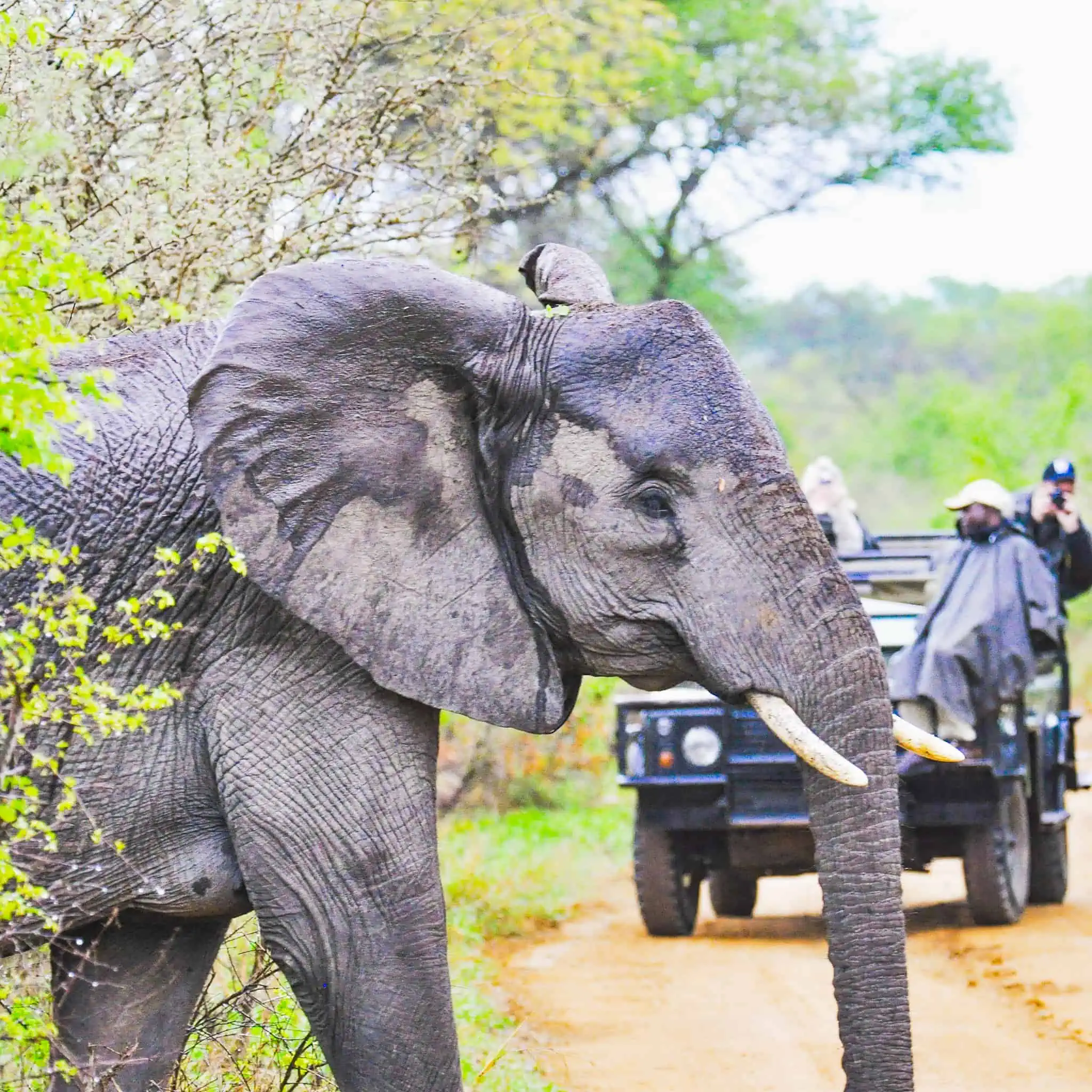
Nothing quite compares to seeing animals in their natural habitat, and given that safari conditions can vary widely, it’s very important to bring the right gear with you on safari. Prior to my trip, I made a list of what to pack for an African safari, so use the list below as your safari clothing guide.
You may also like: The Ultimate Beach Bucket List
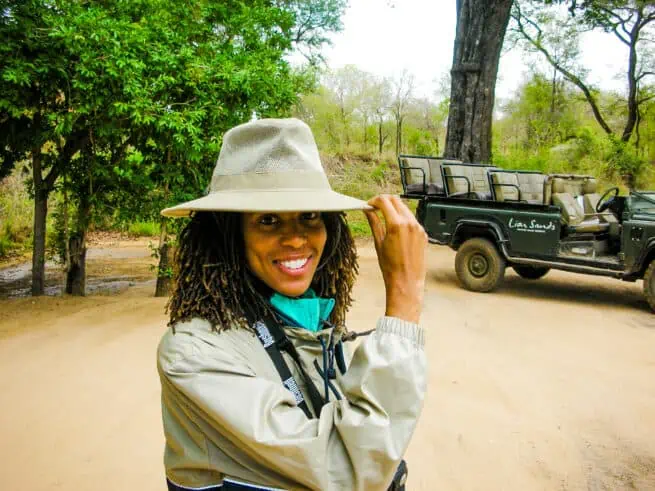
Since many animals are nocturnal or are most active when the sun is less intense, safari game drives typically occur during dusk and dawn. Due to sunrise and sunset game drives, bush walks, and even night game drives in the rain, I packed a variety of clothing from windbreakers to water-repellant pants.
Safari clothing packing list
While on safari, clothes that are light in weight and light in color are best. You don’t actually need a lot of clothes, and you should choose clothing that you can wear in layers.
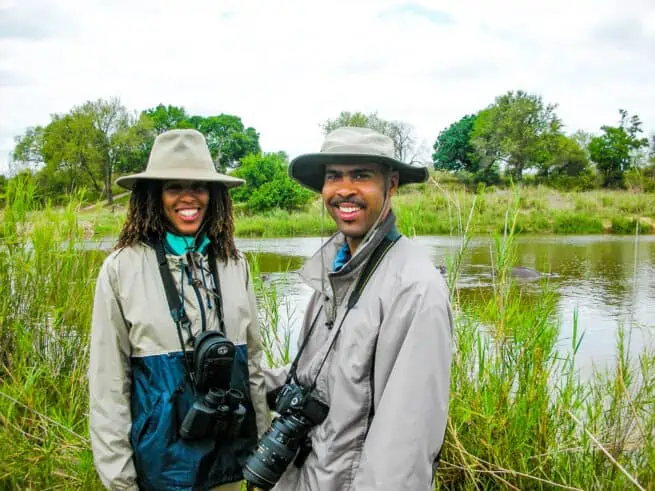
Depending on your safari duration, it’s best to stick to three to four days worth (i.e., one safari outfit per day) of safari clothing and launder the clothes every few days.
To ensure you have all the essentials, here are some must-have items to pack:
Also Read or Continue With Article
You and a friend could get paid $10,000 to watch solar eclipse 2024, how many national parks are there, discover glamping, where nature meets luxury, 15 places to visit in arizona to fill your adventure soul.
- Waterproof, lightweight jacket. The North Face Women’s Osito Triclimate Jacket is very versatile and offers many options for different weather conditions. For one, it’s waterproof, which is a must. Second, it incorporates a fleece, which is one of the other items I recommend, as sometimes, especially at night, it’s good to have an extra layer of warmth. You can either buy the Triclimate Jacket or The North Face Osito Jacket (fleece) separately.
- Poncho. Typically, safari camps have ponchos for guests to use. However, given that they are easy to pack, it’s safe to bring one with you, such as the Anyoo Waterproof Rain Poncho Lightweight Reusable Hiking Hooded Coat Jacket .
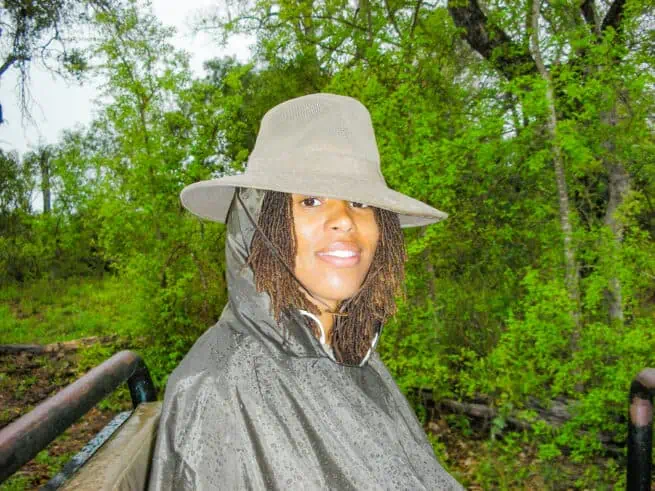
- Lightweight sweater. If you want variety and a little more style in the clothes you wear, opt for a lightweight sweater that you substitute for a fleece. Tommy Bahama offers some of my favorite travel wear.
- Light-colored, long-sleeve shirts. My favorite brand for outdoor and activewear apparel is Columbia. The attention to detail and insulating properties of their clothes make them so easy to wear. The Columbia Women’s PFG Bahama Long Sleeve Shirt and Columbia Women’s PFG Zero Long Sleeve Shirt are both quick-dry and offer a variety of colors.
- Soft stretch-cotton camis. When dressing in layers, Hanes Women’s Stretch Cotton Cami is very comfortable and are an important layer of clothes for outdoor activities. If you are a person that sweats a lot, you should also consider the Under Armour Women’s Rest Day Cami Shirt .
- Water and stain-repellent pants . Bring two to three pairs of pants such as Columbia Women’s Saturday Trail Ii Convertible Pants , which are also convertible to shorts.
- Dressy outfits. Though not necessary, packing a few dressier outfits for the boma dinner will add a little pizazz to your experience. A boma is an open-air place that is enclosed within a wall of tall reeds, where guests gather for a candlelit outdoor dinner, typically with a fire pit, too. It’s a very intimate setting in which many guests wear nicer apparel. A few of my favorite brands for such an occasion are: J. Crew , Ralph Lauren , Anthropologie , and White House Black Market .
- Swimsuit. Most luxury safari lodges have either a private or public pool and a small spa, so you should definitely bring a few swimsuits so you can take a dip in the pool. J Crew is one of the best brands for stylish yet comfortable vacation swimwear.
Shoes and accessories
- Moisture-wicking socks. I love Dickies Women’s Dritech Advanced Moisture Wicking Crew . They are engineered for air circulation and moisture control and have arch support.
- Waterproof hiking boots. KEEN Women’s Voyageur Mid Hiking Boot is a durable option for a variety of safari conditions. You should also bring a pair of flip-flops and casual shoes.
- Safari-style Hat. I like Columbia’s Unisex Bora Bora hat , which features UPF 50 protection, a sweat-wicking headband, and a mesh vent panel.
- Sunglasses. Ray-Ban’s Rb4440nf Blaze Wayfarer Sunglasses have offer a futuristic style of one of the brand’s iconic shapes. In addition, the polarized lenses help to reduce glare, which is something to consider during while bird watching, on bush walks, or observing animals in trees.
Safari equipment
- Binoculars. Bushnell is my got-to brand, and the Bushnell H2O Waterproof/Fogproof Roof Prism Binoculars are the perfect pick for the varied conditions of an African safari.
- Backpack. The Osprey Daylite Plus Daypack is a great option for safari outings. It’s multifunctional compartments and lightweight design allow you store items you might need, including snacks, water, and binoculars, and small accessories and clothing.
- DSLR Camera. I love Nikon cameras for their exceptional quality, and the Nikon D5600 DSLR has all the features you’ll need, including WiFi and Bluetooth. While on safari, renting a supplemental lens, from companies such as Borrow Lenses , for up close shots is highly recommended.
Where to stay near Kruger National Park
My safari experience in South Africa took place at the luxury Sabi Sands Game Reserve, a private game reserve with more than 20 luxury lodges adjacent to Kruger National Park.
Situated on a prime location on the Sabie River, one of those lodges, the Lion Sands Game Reserve , was my safari oasis. Lion Sands offered the ultimate glamping experience featuring luxury tents, exciting game drives, sundowners on the savannah, and boma dinners under the stars.
Have you been on a safari before? Would you add any items to our safari clothing list?
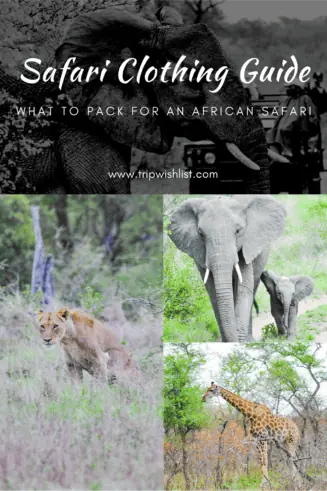
Subscribe to our mailing list to receive blog updates and free travel advice. No spam ever. *
Yes, I would like to receive emails from The Trip Wish List. (You can unsubscribe anytime)

The Trip Wish List is a boutique travel agency that helps people from all walks of life pursue their travel dreams. Follow us on social media for inspiration for your next trip. Visit our blog and sign up for our mailing list for travel news, tips, and hacks. Join us on one of our trips to tick exciting places off your travel bucket list.
FOLLOW ON INSTAGRAM

- Privacy Policy
© 2023 The Trip Wish List - All Rights Reserved.
- Central America
- United Arab Emirates
- United States
- South America
- Fall Travel
- Family Travel
- Food + Drink
- Luxury Travel
- Outdoors & Adventure
- Shopping + Fashion
- Solo Travel
- Summer Travel
- Wellness Travel
- Winter Travel
- Women’s Travel

Ultimate African Safari Packing List and Outfit Ideas
An African Safari is an amazing bucket list vacation . If you fortunate enough to be planning a safari vacation, you are in for a treat! Once you plan an African Safari , you are likely wondering what should be on your safari packing list.
Unlike other vacations, packing for an Africa safari takes a bit more thought and consideration. There are packing restrictions, color limitations and comfort to consider.
In addition, there are many extras to pack such as a headlamp and binoculars that you may not need for a traditional vacation.
The first time I went on safari, I remember my family frantically shopping for a new wardrobe that fit into the neutral color scheme. We stocked up on bug proof clothing, adventure wear, and supplies, then crossed our fingers that we packed correctly.
I’ve since been on three African safari’s and have mastered the art of what to wear on a safari. This packing list will take out the guess work for you by outlining exactly what you need to bring on your safari vacation.
Keep reading for my ultimate safari packing list. In addition, check out this packing guide for what to wear on your long-haul flight to Africa.
Some links on this blog are affiliate links, meaning I may earn a commission at no extra cost to you if you make a purchase through them. All opinions are my own, and I only recommend products and services I personally use and believe in. Thanks for your support!
What to Wear on a Safari
As I mentioned, packing for an Africa safari is more complicated than packing for an average trip. Here are some important things to consider when planning your packing list for African safari.
Neutral colors – The color scheme for safari is neutrals, such as green, khaki, beige, brown, and light grey. This is for your protection from insects and optimal game viewing.
Casual safari clothing – Even a luxury safari packing list should consist of casual clothing. This seems counterintuitive when staying in a 5 star luxury resort, but safari is meant to be a rugged, adventurous experience.
Layering – The temperatures in sub-Saharan Africa can fluctuate widely throughout the day. Layering is your best friend to stay comfortable from below freezing to 80 degrees over the course of a day.
Pack light – Since you will be travelling in small plane and safari vehicles, there are weight and luggage restrictions for safari. Packing light is key!
Packing Restrictions for Safari
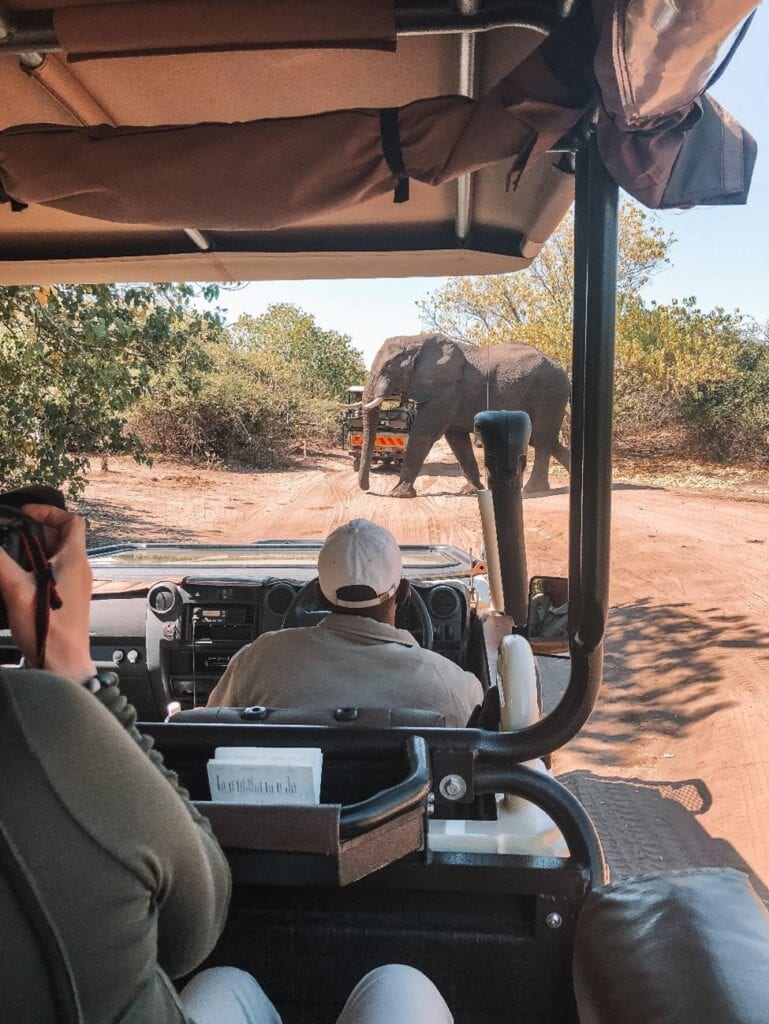
One of the main complications of a safari packing list is meeting all the packing restrictions set by the tour companies.
Weight Restrictions : Many tour companies will limit the weight of your luggage to 35 pounds to account for the small internal flights you will take.
Luggage Restrictions : Since tour companies transfer your bags between small planes and jeeps, pack soft-sided luggage such as backpacks or duffel bags for easily storage.
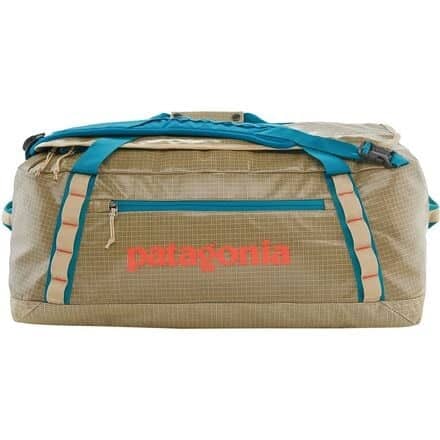
Patagonia Black Hole 55L Duffel Bag
✅ Removable backpack straps for easy carrying
✅ Highly water-resistant material
✅ Tough fabric for rough baggage handling
Building a Safari Capsule Wardrobe
To prepare for this limited amount of packing, utilize a capsule wardrobe to be able to mix and match a small amount of clothing items. A capsule wardrobe is a collection of clothing items that can be combined create different outfits. Typically, a capsule wardrobe includes staple pieces in the same color scheme so they can be combined make up a capsule wardrobe.
Additionally, many safari outfitters will include laundry in the price of the tour. At a few lodges, you will be able to get overnight laundry, allowing you to re-wear outfits easily.
Below are three helpful tips for packing for safari and two examples of safari capsule wardrobes.
Safari Packing Tip #1 – Stick to the Neutrals
An important guideline for a safari packing list is the colors to wear on safari. Tour operators strongly discourage certain colors for safety and comfort reasons. Some of these colors can be difficult to find and may need to be purchased specially for safari.
Colors TO Wear on Safari
The best colors to wear on safari are light blues, greens, browns, greys, and tans. Fortunately, these colors tend to match, making capsule wardrobes easy. The below collages are fantastic examples of how to create a capsule safari wardrobe.
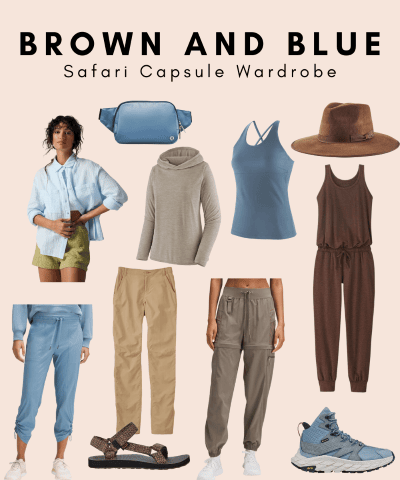
One great option for a safari capsule wardrobe is a mixture of blues and browns . For clothing items, I love convertible pants like these that can be worn as both shorts and pants to save packing space. Also jumpsuits are super easy to throw on, are fashionable, and super comfortable.
Shop this blue/brown safari capsule wardrobe
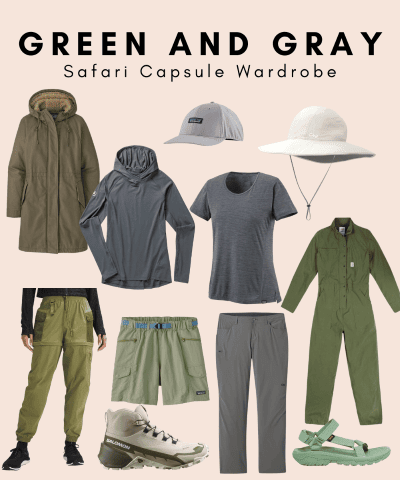
An alternative color scheme for your safari outfits is greens and greys, shown above. You don’t have to be strict and only pack in one scheme, but it will make mixing and matching very simple.
Shop this green/grey safari capsule wardrobe
Colors NOT to Wear on Safari
Black/ Navy Blue – Dark colors such as black and navy attract bugs such as mosquitos and tsetse flies. Since these bugs are annoying and carry harmful diseases, it is best to stay away from these colors. This means to leave your jeans and black leggings at home.
Camouflage – Camo is a popular print right now and falls into the suggested green color category. However, many people in African countries associate camouflaged print with military and its even illegal in some places.
Red – Animals in Kenya and Tanzania associate red with the local Masai warriors. Animals avoid this color to avoid being hunted. To not scare off the wildlife, be sure to not pack any red or other bright colors.
White – White is ok in moderation, but easily get’s dirty and will be difficult to re-wear.
What to Wear on Safari Tip #2 – Materials Matter
As mentioned above, comfort is key when deciding what to wear on safari. Focus on materials that are moisture wicking, comfortable to sit in, and breathable.
The temperature on safari will have a wide range, depending on the time of day and location. On my trip, we experienced near freezing temperatures in the morning and in mountain locations. We also experienced warm, summer weather during the day at lower elevations.
To best dress for the heat, focus on clothes that are breathable for the heat, but easily layered to stay warm. Materials such as performance fabric, linen, and high quality cotton are great options.
Africa Safari Outfit Tip #3 – Wear Versatile Clothing
Since packing space is limited, it’s important to find clothes that can be dressed up, dressed down, and paired with a variety of other clothing items. This will allow you to wear different outfits with a few staple pieces.
To demonstrate this idea, here are a few examples:
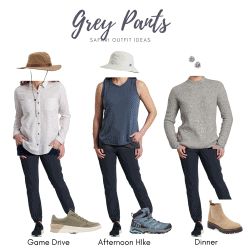
Kuhl Womens Freeflex Dash Pant – These pants are a great staple piece for safari. The material is comfortable, durable, and hides dirt easily. The pants have a built in cinch at the hem that allows them to be worn as a straight-leg or jogger style. This versatility allows you to have two pants in one.
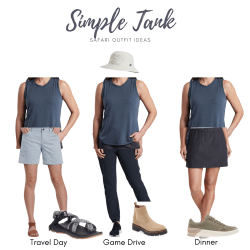
Kuhl Konstance Tank – This tank top is another example of a versatile piece of clothing for safari. It can be paired with different bottoms or layered with a jacket to create a completely different look. The cut is also super flattering and the material is soft and breathable.
The Best Shoes to Wear on Safari
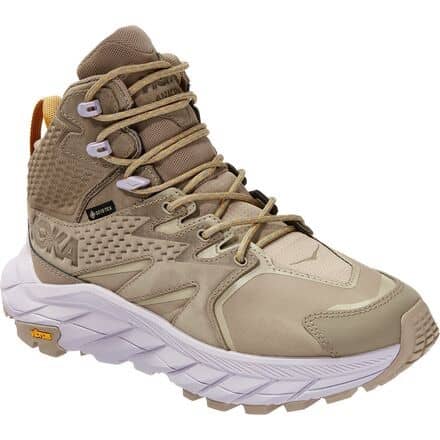
Hiking Boot
If you are doing any hiking on your trip, a hiking boot is a must. These are super comfortable for all-day wear and come in safari-friendly colors.
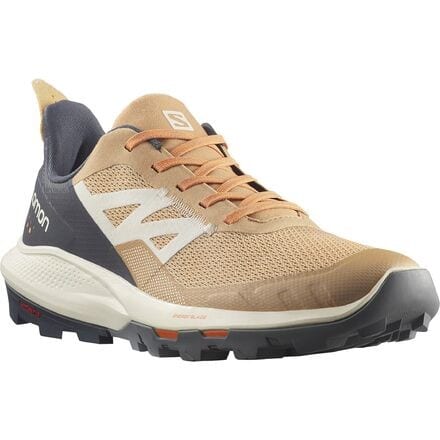
Hiking Shoe
If you are not hiking, save space and bring a hiking shoe instead of a boot. These have plenty of support for walking around camp and the bush.
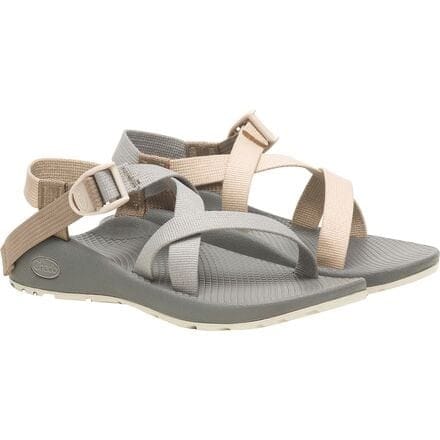
Sturdy Sandal
In addition to a sneaker, a pair of adventure sandals is great for around camp or on game drives. I even wear these on short hikes because they’re so comfy.
Safari Packing List: Clothes and Shoes
- 1 Pair of Walking shoes : Even though you will spend most of the day in vehicles, it is important to have sturdy shoes for any walking that you may do. The African bush has uneven ground and dirt, so sturdy shoes like these are important.
- 1 Pair of Sandals : In addition to your hiking/walking shoes, pack a pair of sturdy sandals to wear around camp or in the safari vehicle.
- Convertible Jacket : Depending on the area, temperature can range from freezing to 80+ degrees during your safari trip. Be sure to include a convertible jacket, like this 3-in-1 option on your safari packing list.
- Tops : For a 7-10 day safari, I recommend packing three short sleeve shirts, one long sleeve shirt, and two button up shirts for layering
- Pants : Bring one pair of pants for every three days of safari and 1-2 pairs of shorts for the entire trip.
- Swimsuit : This item is easily overlooked, but you will appreciate the swimwear to spend time in resort pools.
- Safari hat : A good safari hat will protect from sun and bugs.
Safari Packing List: Other Important Items
- Headlamp : Many lodges and camps will have outdoor pathways connecting common areas to rooms. At night, the paths can be hard to see, so a headlamp can be helpful for hands-free lighting.
- Binoculars : Binoculars are critical for seeing faraway animals.
- Camera : Safari is prime for getting amazing photographs. If you have a good camera or are thinking of buying one, make sure it makes it on your safari packing list.
- Phone zoom attachment : iPhone attachments can help enhance phone photos.
- Insect repellent : As mentioned above, it is important to keep bugs off you. Pack bug spray with deet or bug-off wipes for daily use.
- Sunscreen : Wear sunscreen daily for protection from the near-equator sunshine.
- Cash : It’s super important to bring all the cash you will need for your trip. ATMs are very hard to come by in the bush, and often local currencies are not preferred. Bring enough new, crisp, US dollars for tips and purchasing souvenirs.
Summary of What to Wear on a Safari
The most important aspect of an African safari packing list is focusing on essentials that will provide comfort, safety, and function. Be sure to utilize layers in complimentary colors to make your items go far. Do not forget the other essential items like bug spray and a headlight.
Want more outfit ideas? Check out my guide to what to wear in Uganda that explains what to wear on safari for all activities and occasions such as a game drive, hiking, or lounging at the lodge.
For more information on safari travel, read my post on what to expect on a luxury South Africa Safari .
If you have any questions, please leave a comment below and be sure to share this post on Pinterest for others to find.
– Camoflauge or military-style clothing – White clothing – Black / Navy blue clothing – Red clothing – Expensive jewlery – Formal clothing – High heels
Dinner attire on safari is very casual, even at luxury resorts. You can often wear what you wore on safari that day, such as long pants, hiking shoes, and a button down top. If you prefer to change your outfit, something simple like a green jumpsuit or linen set is very appropriate.
Most safaris require you to pack in soft-sided luggage such as a duffel bag. I recommend a duffel bag that is waterproof and a scratch-resistant material. In addition, there are weight limits for safari, so ensure your bag is the appropriate size to not be overweight.
The best colors to wear on safari are neutrals such as green, beige, brown, grey, and light blue.
I do not recommend wearing jeans on a safari. First, they are often dark blue which is a big no-no for tsetse flies. In addition, jeans are not breathable or flexible for active days.
Related Posts:
- Ultimate Uganda Packing List – What To Wear In Uganda On Safari
- Planning A Trip To Uganda | Complete Uganda Travel Blog
- The Best Luxury Lodges In Uganda – A Quick Guide To Where To Stay In Uganda On Safari
- What To Expect On A Luxury South Africa Safari
What to Wear to Disney World in October: Halloween Outfits
- Alaska Cruise Guide: Top Tips for Your Alaska Vacation
- The 13 Best Beaches in Oahu Hawaii (2024)
- CocoCay Bahamas Things to Do & One Day Itinerary
Lauren is the creator of The Traveling Moore blog. She's travel obsessed, having been to nearly 50 countries and all 7 continents. She has a full time corporate job, and loves showing others that it's still possible to travel the world with limited PTO hours. Lauren is also travel hacking obsessed, finding every way to travel more often and more luxuriously.
Similar Posts
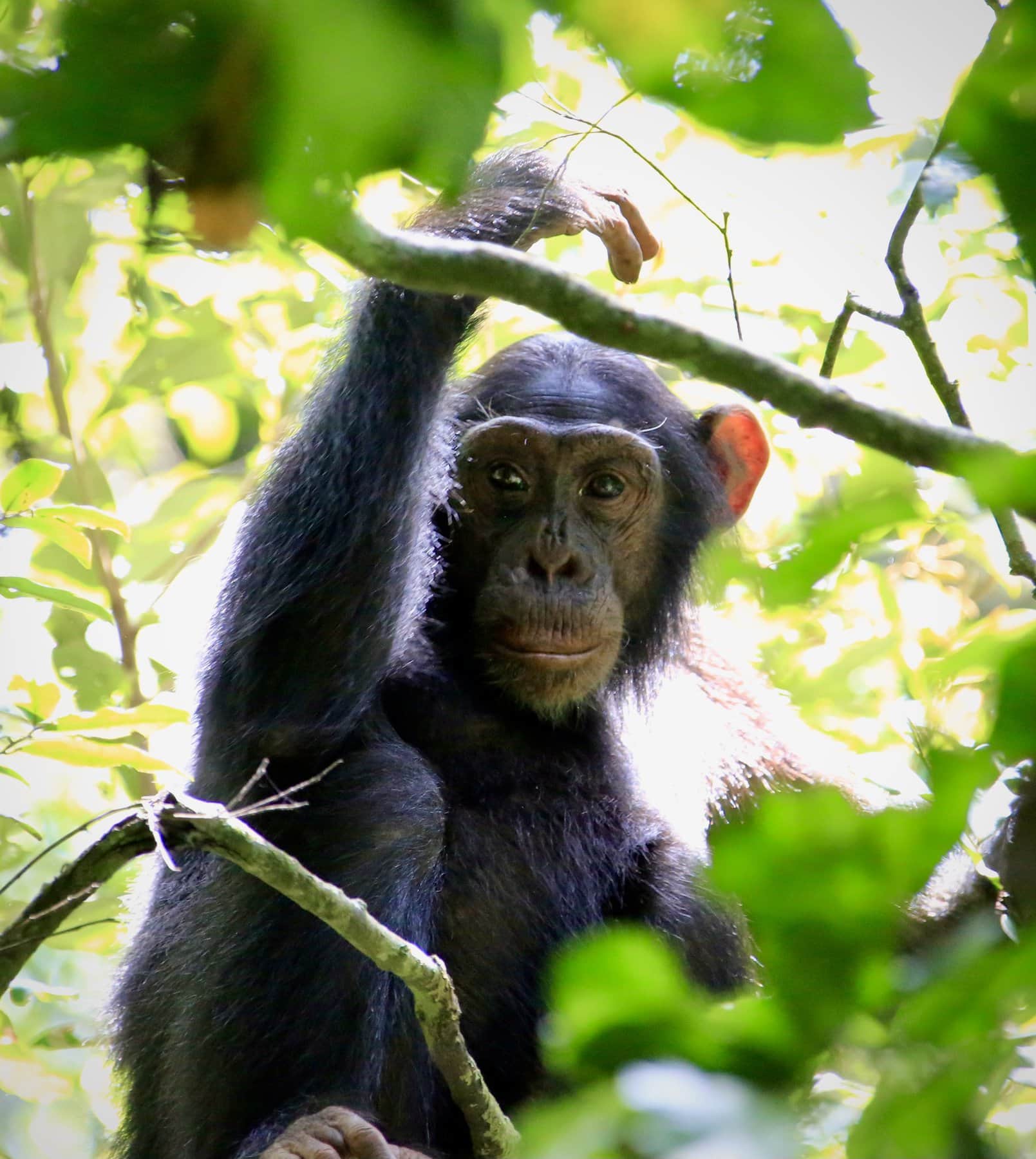
Guide to Chimpanzee Trekking in Uganda: What to Expect
Share via: Facebook Twitter LinkedIn Copy Link More The main reason people visit Uganda is to see Mountain Gorillas…
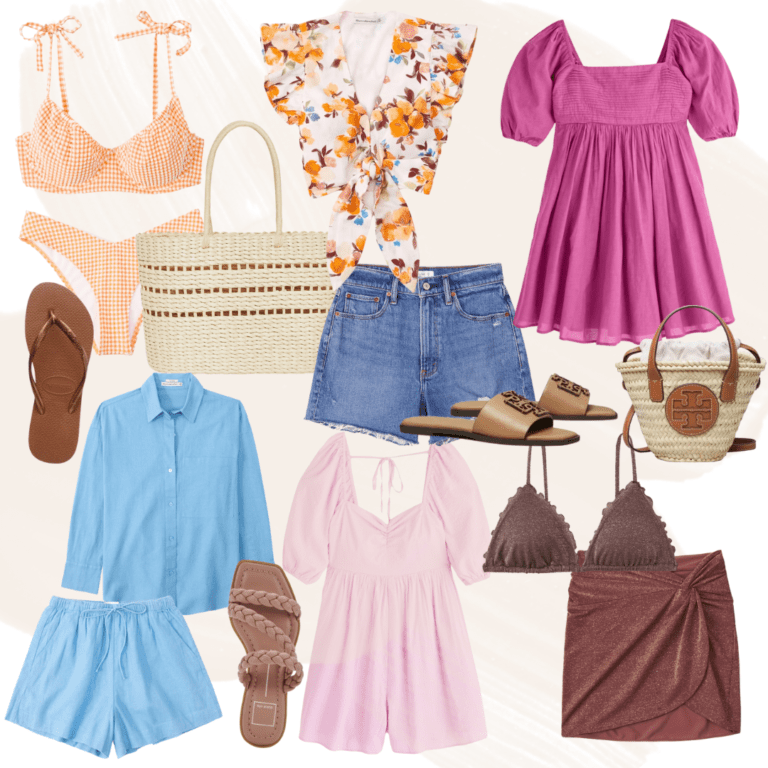
Complete Packing List for Mexico All Inclusive Resorts
Share via: Facebook Twitter LinkedIn Copy Link More I am going to Mexico this weekend! I literally cannot wait…
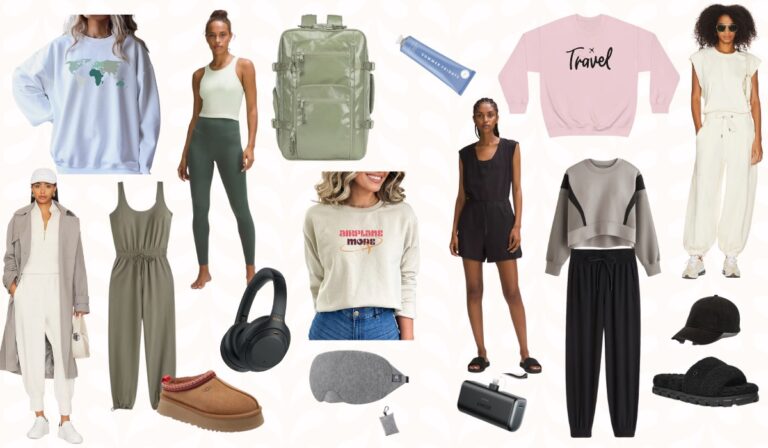
What to Wear on a Long-Haul Flight: Cute and Comfy Outfits
Share via: Facebook Twitter LinkedIn Copy Link More I feel like there are two types of people at the…

Ultimate Las Vegas Packing List: What to Wear in Vegas For Women
Share via: Facebook Twitter LinkedIn Copy Link More If you are wondering what to wear in Vegas, or what…
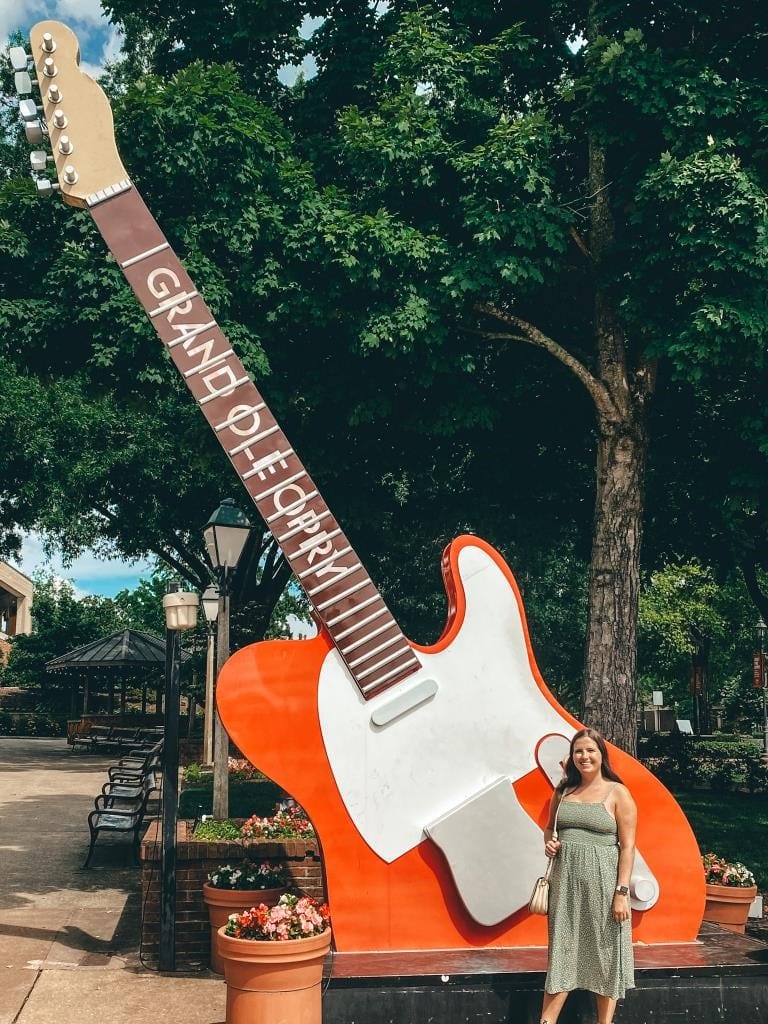
What to Wear in Nashville: Packing List for Women (2024)
Share via: Facebook Twitter LinkedIn Copy Link More Nashville is one of my favorite cities in the United States…
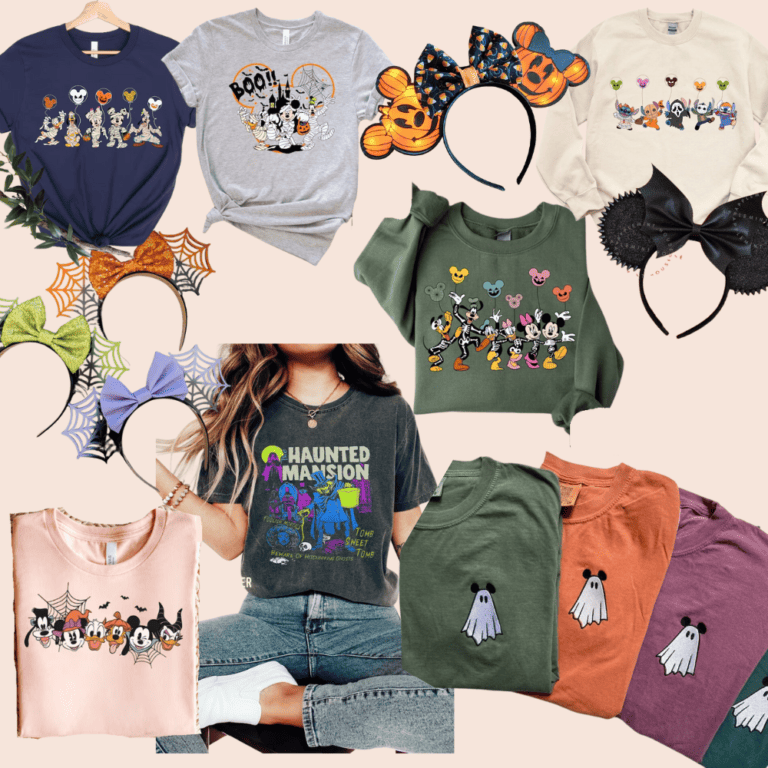
Share via: Facebook Twitter LinkedIn Copy Link More If you’re visiting Disney World around Halloween, one of the biggest…

What to pack for safari in Africa? Detailed Safari Packing Guide
Neutral-colored safari -style clothing and camera gear are a must to pack for a safari, but what else and what do you have to take into account while packing for an African safari ? In this complete safari packing guide, I share exactly what to pack for a safari in Africa . It helps you choose what to wear on safari, what not to wear, and which safari essentials are important to bring on a game drive . It also includes a complete African safari packing list and practical information to get prepared for your safari trip, like important travel documents, appropriate safari clothing, shoes, handy gadgets, electronics, and type of camera.
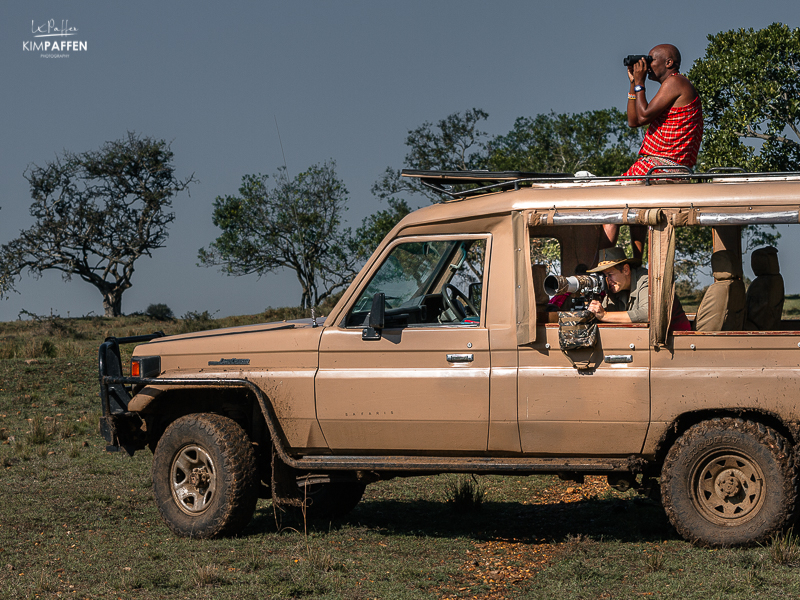
Important travel documents in preparation for your African safari
It is crucial that you prepare all the necessary travel documentation (print or digital) before you hop on a plane to your African safari destination. Your travel document checklist should include your passport (valid for at least 6 months after arriving back home), visas if needed, airline tickets , vaccination certificates (Yellow Card), insurance documents, accommodation vouchers, car-rental reservation forms, and an international driver's license if necessary.

Visas for Sub-Saharan Africa
Many Sub-Saharan countries in Africa require a visa to enter . Check the visa requirements of your African travel destination (s) and make sure if you need a visa, what kind of visa, and how to apply for a visa. More and more countries want you to apply online, in advance, while other African countries ask you to pay cash on arrival. Most countries accept US Dollars, printed after 2009 and in good condition.

Check the local currency of the African country you're planning to visit. To most accepted foreign currencies are the US Dollar and the Euro. Bring US Dollar bills if you need a visa on arrival. I would always recommend taking a credit card and cash money. Don't exchange money with locals on the street. It’s illegal and risky. I would recommend withdrawing local cash money at an ATM machine upon arrival or exchanging your own currency at an exchange office. Cash is king in Africa as power cuts or blackouts are normal and you can't pay with your bank or credit card everywhere. Cash is also handy for souvenir shopping and tipping guides and general staff as tipping is common in Africa and very much appreciated by the locals.
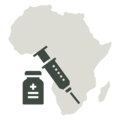
Vaccination certificates
Required vaccinations vary per country in Africa. Most African destinations require Hepatitis A and Yellow Fever . If you’re traveling in an area with a risk for malaria, consider taking anti-malarial tablets. My best and only advice is to plan a consult with a medical travel clinic, 4-6 weeks before departure, to know exactly what’s needed for your safari trip.
Make sure your International Certificate of Vaccination or Prophylaxis (ICVP), also known as the Yellow Health Card , is updated with the recommended vaccines (including the date and validity of the vaccine, stamp, and signature of the doctor). It's an official vaccination report created by the World Health Organization (WHO) and is basically a kind of medical passport that is internationally recognized to enter certain countries with health risks for travelers. Personally, I've been asked for my Yellow Health Card only once during all my Africa travels and it was about the Yellow Fever certificate.
Depending on the government regulations you either need a COVID-19 vaccination certificate, a negative COVID-19 PCR test result , or a recovery certificate. For details about the latest COVID-19 regulations, it’s advised to visit the official websites of the country you are traveling to and the airline you are flying with.

Checklist of important travel documents to bring on safari
- Valid Passport (required to be valid for another six months after returning)
- Visa (if needed)
- Airline ticket(s)
- Vaccination certificates / Yellow Health Card
- COVID-19 proof of vaccination, negative (PCR) test result, or recovery certificate
- Insurance documents
- Accommodation vouchers
- Car rental reservation forms
- International driver’s license (if needed for a self-drive)
- Bankcard, credit card
- Cash money, also in the local currency (withdraw money on arrival: it’s not always possible to pay by card plus it's useful for tips)
- Photocopy of your passport
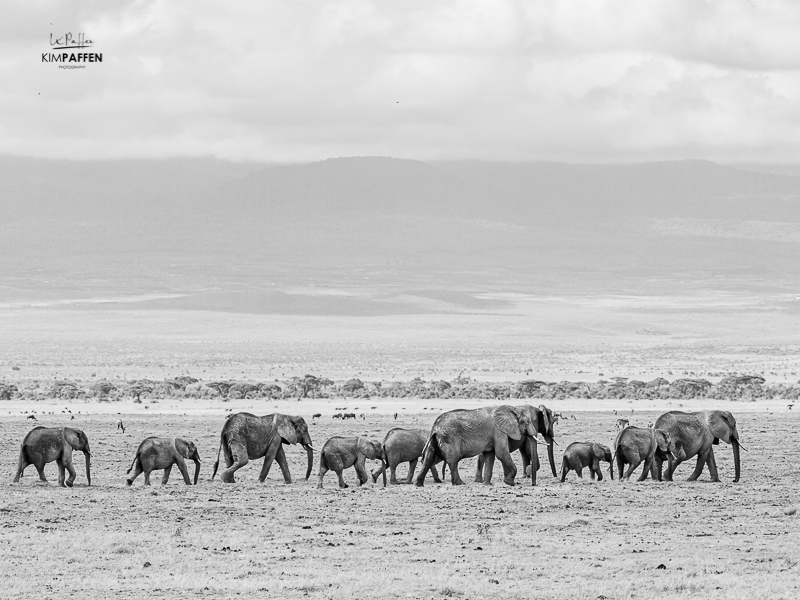
What clothes to wear on an African safari?
The best safari clothing is comfortable, lightweight, and durable. That’s necessary to adapt to the environmental conditions in Africa like heat, moisture, dust, and insects. The best clothing for an African safari offers sun and anti-insect protection and dries quickly. It’s advised to pack neutral colors, like earth tones.
Best colors to wear on Safari
Khaki, brown, sand, and green are the best colors to wear on safari . Neutral-colored earth tones work best to become part of the African bush. Dark clothes like black and blue attract heat, biting tsetse flies, and other insects. Colors you should not wear on safari are too bright or neon colors can scare the animals away. Avoid camouflage clothing, as in some African countries it’s worn by military personnel only. Also, avoid busy patterns as you don't want to draw the attention of the wildlife to you.
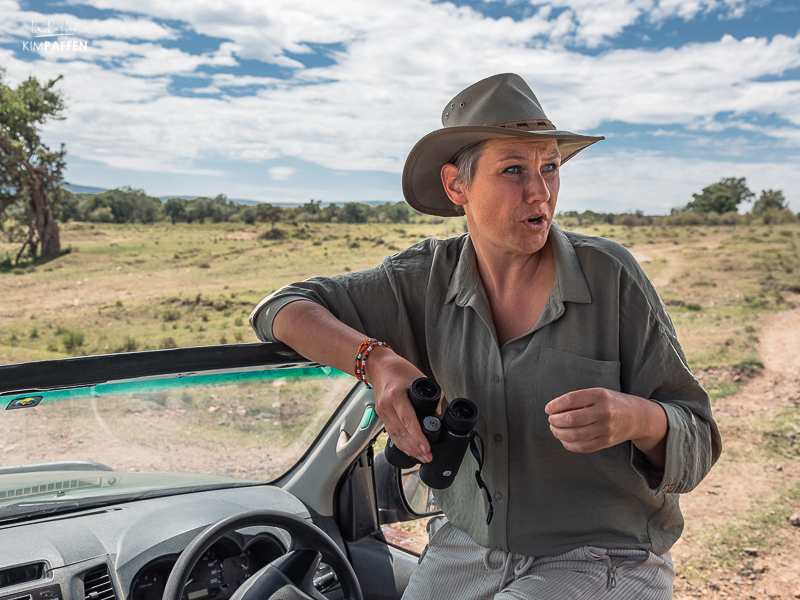
Wear layers on your game drive
The weather in Africa can change very quickly. It can be cold and windy in the morning, and hot during the day, plus you can always be surprised by an African rain shower. For that reason, wear layered safari clothing on your game drive and bring a hat and scarf. Wearing lightweight pants (or zip-offs) and a long sleeve light-weight blouse also helps with extra protection from insect bites and the sun. Roll up your sleeves or zip off your pants if it gets warmer.
RELATED: I also wrote a guide to game drives including 15 things to know about going on a game drive in Africa .

Safari clothes for women
Finding suitable safari clothing for women can be challenging because the clothes made for safari are often focused on men but sold as unisex. I definitely get that most women like to pack stylish safari clothing, but do realize your safari clothing still needs to be comfortable. Imagine going to the bush toilet on a game drive and you’re wearing a jumpsuit, or you need to climb in the vehicle with a short skirt. You get the point.
RUGGEDWEAR’s Tayla Jane Range
Women should definitely check out RUGGEDWEAR’s Tayla Jane Range . The clothes offer exceptional comfort, breathability, rapid drying, and a fashionable appeal. It’s one of my favorite safari clothing brands for women with the Parka as my fave item.
I also always make sure to pack RUGGEDWEAR’s blouses when I go on safari. Thanks to the breathable material, I can comfortably wear them for multiple days in a row without worrying about unpleasant odors. Plus, these clothes require no ironing after washing, and even dirt, such as mud, can be easily removed, making them a convenient and essential choice for my journeys.
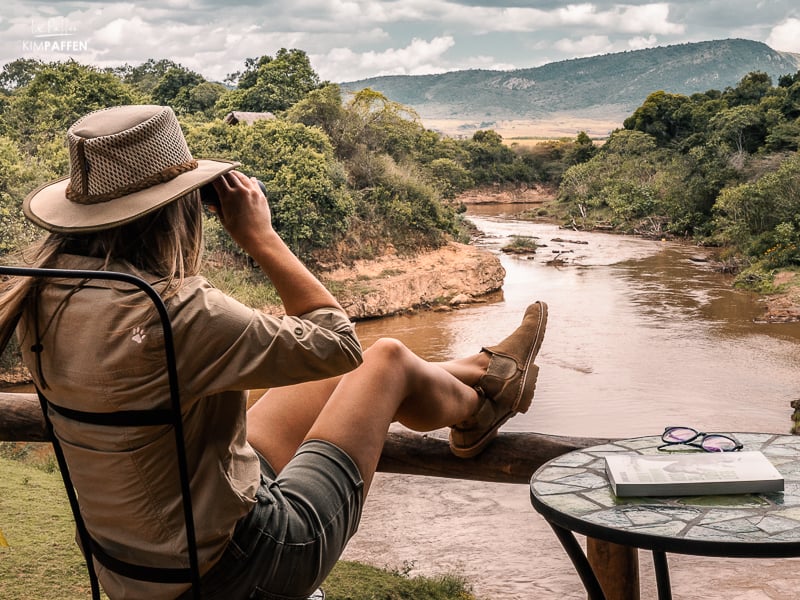
Colmar for urban styles, and outdoor activities
The luxury Italian clothing brand Colmar primarily specializes in outdoor skiwear. However, their high-quality clothes are also well-suited for safari adventures. Colmar's commitment to durability, protection from the elements, functionality, breathability, and the versatility of layering make their clothing an excellent choice for both skiing and safaris.
My favorite Colmar item is this casual lightweight jacket with a fixed hood. It's convenient, comfortable, and made of thermal and water-repellent material. The side pockets and a practical adjustment drawstring make the jacket feminine and functional for safari.
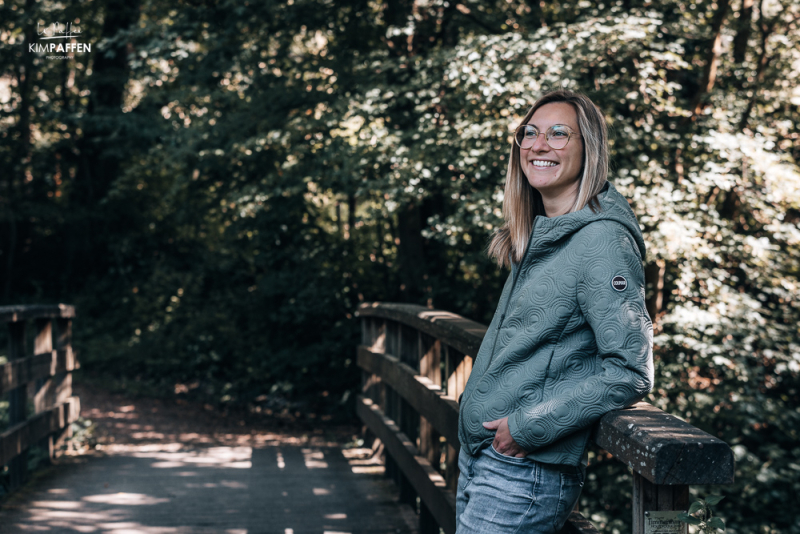
Safari Clothing List
Below is a safari clothing list to use as a guideline for your safari trip. Most lodges or accommodations offer a laundry service at a small rate or even free of charge. My advice: pack light and make use of the laundry service. It’s also a great way to support (local) employees.
- 5-6 neutral-colored shirts and/or tops
- 2 long sleeve safari blouses (light and breathable)
- 2 sand or khaki-colored shorts
- 2-3 light-weight long trousers (optional are zip-offs)
- a light jacket like a soft shell (water- and windproof, luxury lodges provide ponchos on their game drives)
- One fleece or warm vest
- Scarf or buff/bandana (handy for colder drives as well as protection from the sun)
- 4-6 pairs of neutral-colored socks
- Underwear (take enough for 5-7 days, then do your laundry)
- Swimsuit or swim shorts for the lodges that have a pool
- Safari hat (I love Rogue Hats, but any neutral-colored hat is fine)
- Stable safari shoes and flip-flops
- Gaiters (for walking safaris )
- Sport-bra for women
- Ziploc bags to keep your dirty laundry separate from clean safari clothing
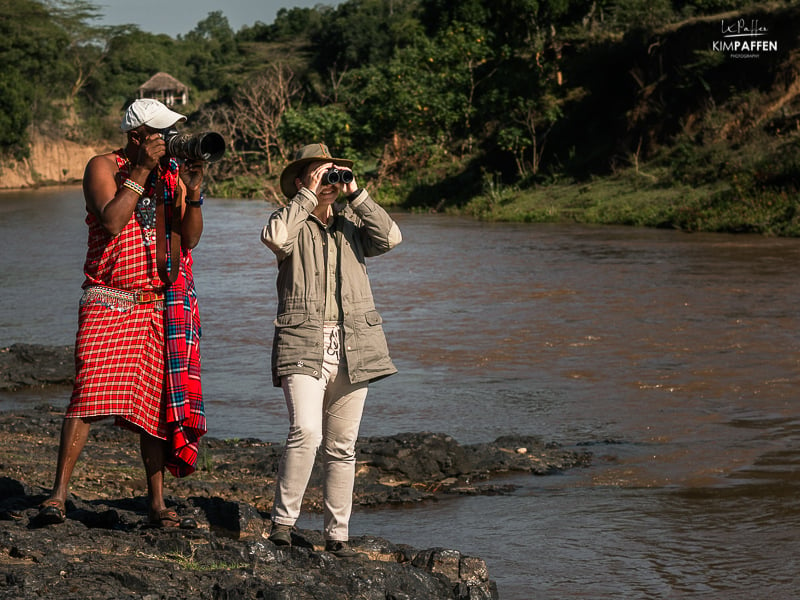
Formal evening wear
Formal evening wear is not necessary on safari, as most safari lodges and camps have a casual safari-style dress code . Some people like to change before they go to dinner. However, in reality, almost no one is going to their room to freshen up after the afternoon game drive as you arrive back in the dark. Most of the time you have a drink at the fire when returning from the game drive and go for a cozy Boma dinner straight after. On my first safari in Africa, I went back to the room to have a shower and change but I learned quickly that most people stay around the fire after the game drive, have dinner and go to bed early because of the early start.
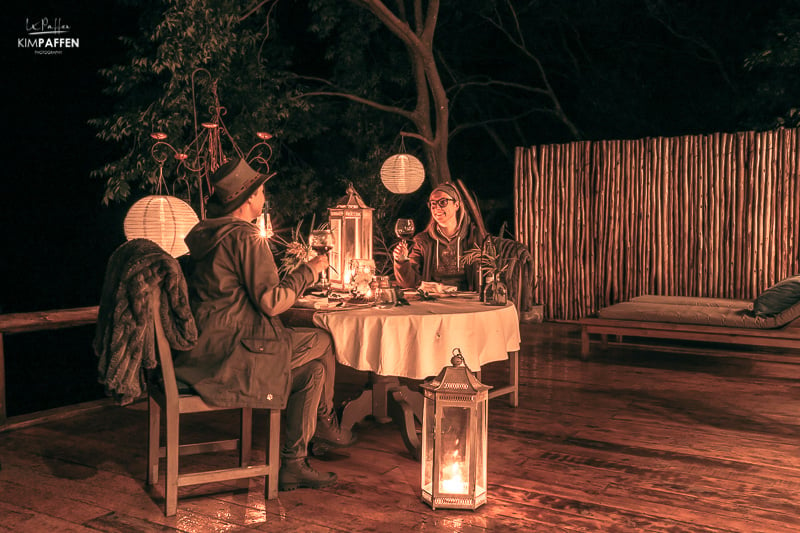
I've had several safaris in various African countries. There were times I also packed two dresses but in reality, I almost never wore them. Sometimes around the camp in between the two game drives. It obviously depends on the kind of safari trip you're doing, but if you are in a lodge doing two game drives per day you usually wear suitable safari clothing for game drives. If you also visit a city during your safari trip, like Cape Town, I would also pack one or two dresses.
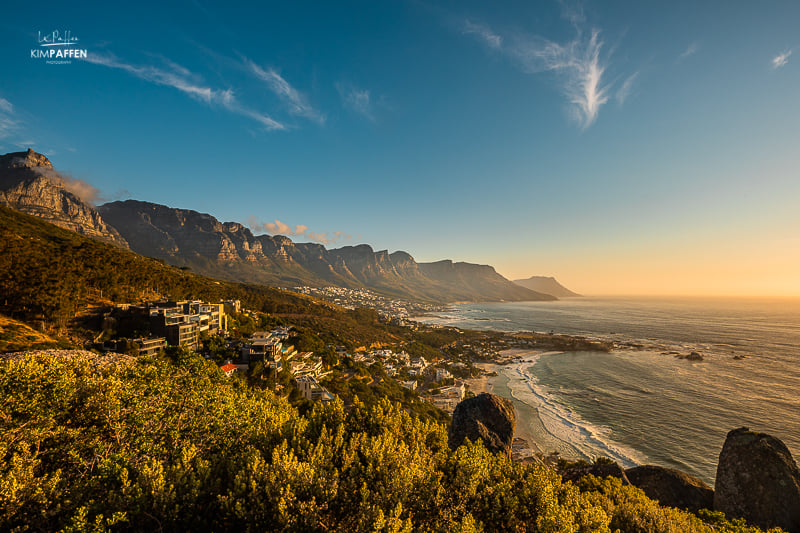
What shoes to pack for safari in Africa?
On a safari in Africa, you need to bring sturdy footwear. Hiking boots or hiking shoes aren’t always necessary and take up a lot of space in your suitcase or backpack. If your safari trip includes walking safaris or hikes, do bring hiking shoes or trail shoes that provide enough grip and protect you from thorns.
Otherwise, comfortable, closed, and sturdy shoes are more than enough. If you are in an area with lots of insects or snakes, a higher-rise boot is recommended, or wear gaiters for extra protection. For me, insects and thorns are the main reason why I prefer to wear closed safari footwear on a game drive plus you are better protected during comfort breaks, coffee stops, and the afternoon sundowner . Normal sneakers are not the best option as thorns go straight through these soles.
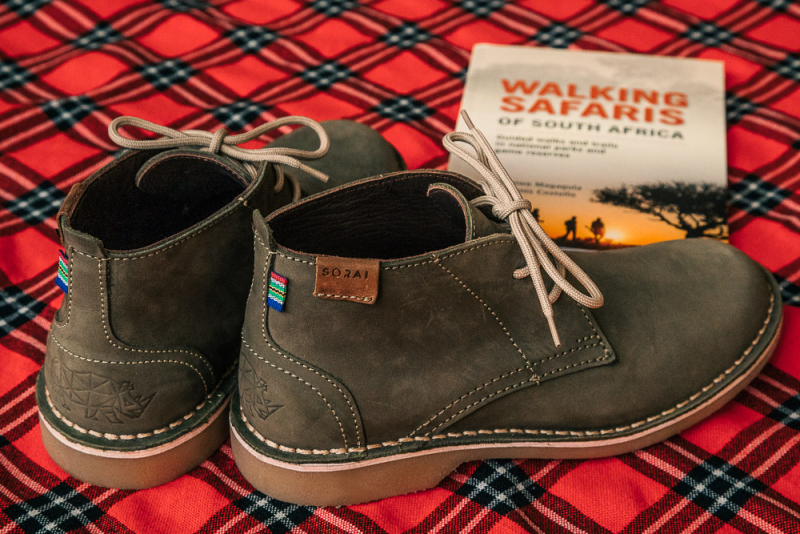
Safari Shoes
My favorite safari shoes are the Authentic South African Veldskoen boots . Veldskoen boots are handmade and stitched in South Africa and often worn by local field guides. Choosing a Veldskoen means comfort and style. It will definitely complete your safari outfit. Apart from closed shoes, bring a pair of flip-flops or sandals to wear around the camp.
Safari First aid kit and toiletries
Professional medical care isn't always close when on safari. For that reason, it’s important to be prepared for medical issues. Your guide or tour operator will always have a first aid kit available. However, it’s advisable to bring a basic medical kit yourself. The most basic and crucial medical safari essentials are insect repellant, after bite, anti-malarial tablets, painkillers, and blister band Aids. In case you have any medical issues or if you use any medicines, it’s necessary to inform your guide on forehand.
Your first aid kit for safari should contain:
- Prescription medicines / Antibiotics (if you currently take any)
- Malaria medication (if necessary)
- Paracetamol or other painkillers
- Anti-diarrhea pills for food poisoning
- Oral Rehydration Salts in case of diarrhea or dehydration
- Anti-histamine for allergic reactions
- Cough drops
- Insect repellant (eco-friendly)
- Lavender essential oil (functions as after bite and many more purposes like a good night of sleep)
- Pads for blisters
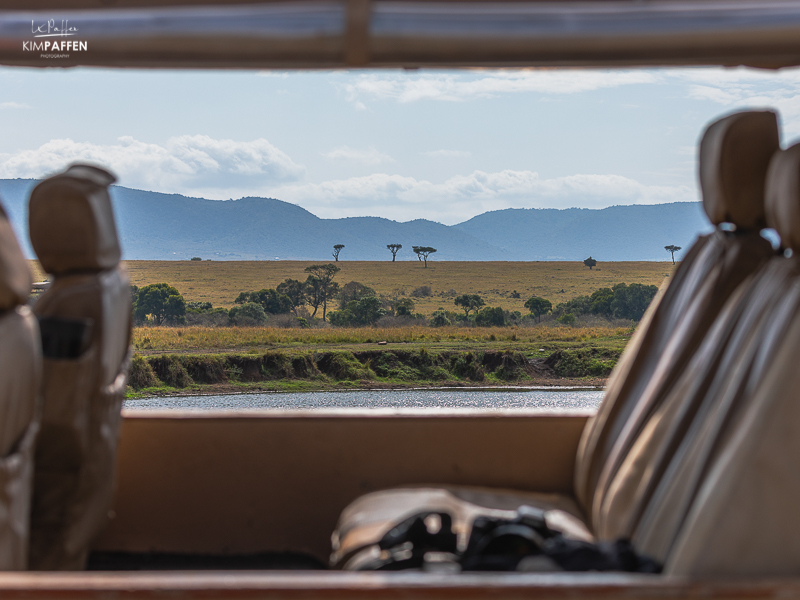
Other toiletries to pack for your safari:
- Soap, shampoo, conditioner
- Toothbrush, toothpaste, and dental floss
- Feminine hygiene products
- Contact lenses and fluid
- Wet wipes (handy on camping trips or long drives)
- Lip balm for the dry air
- Face mask and hand sanitizer
- Hand and body lotion
- Shaving kit or razor
What camera gear should I bring on safari?
Having the most expensive camera doesn’t mean you’ll shoot the best photos because whatever camera you bring on safari, it’s critical to know how to use it. You will be disappointed if you invested a lot of money in camera gear and your pictures are too dark or blurry.
If you do know how to use a camera or if you have the time and motivation to learn how to use a camera, I would advise bringing a DSLR (Digital Single Lens Reflex) camera with exchangeable lenses. The best zoom lenses for wildlife photography are in the range of 200-600 mm with a minimum of 200mm zoom to capture wildlife.
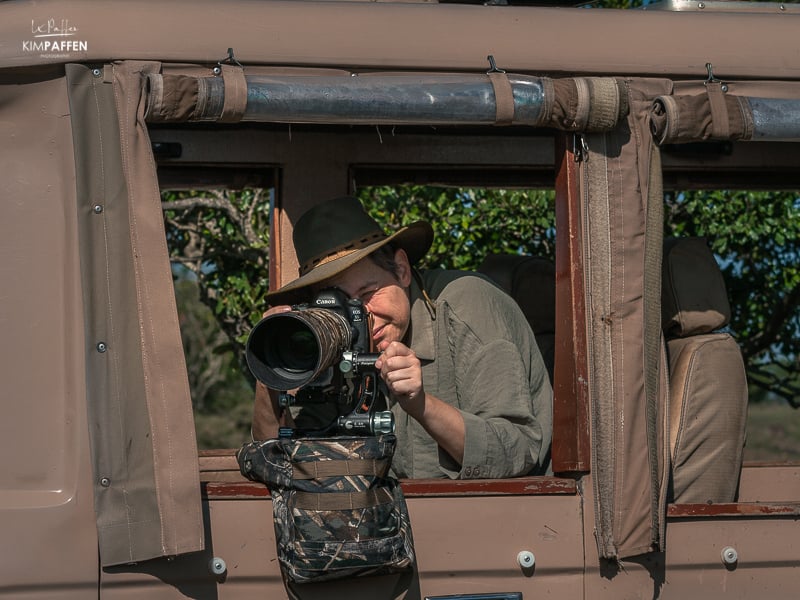
As a travel and wildlife photographer, I always bring different zoom lenses to photograph wildlife and a more wide-angle lens to capture Africa’s gorgeous landscapes, for example, the Canon 16-35mm 2.8.
To practice and learn how to use your camera, you can read the instruction manual, watch some tutorials on YouTube, take a class, and most importantly practice with different settings and conditions before departure. If you don’t have the time, motivation, or skills to learn how to take (better) photos with a DSLR, then save your money and enjoy the experience on its own.
You can try to take photos with your smartphone. Nowadays, the cameras on smartphones are pretty good, but you will definitely lose quality when you try to zoom in with your smartphone camera. Important to know about photographing in Africa is that it is considered rude in African culture to take photos of people without asking them first.
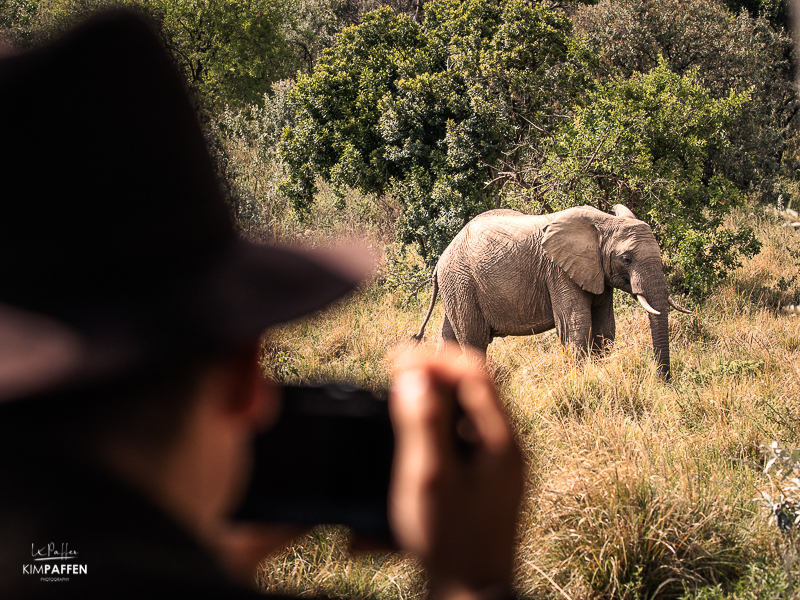
Packing list for camera gear on safari
I would suggest bringing the following camera gear on safari:
- A DSLR camera plus a long-range zoom lens (70-300 mm, 28-300 mm, 18-400 mm). If you bring a camera with a long-range zoom, you don’t need to switch lenses or bring different bodies
- Memory cards (plenty)
- Cleaning equipment (it will be dusty, so bring cleaning cloths)
- Charger (you don’t want to run out of battery)
- Extra batteries
- Rain cover or towel (to protect your camera from rain, dust, and moist)
- Ziplock bags (to protect equipment from dust)
Curious about the photography equipment I use? Check out my photography gear collection .
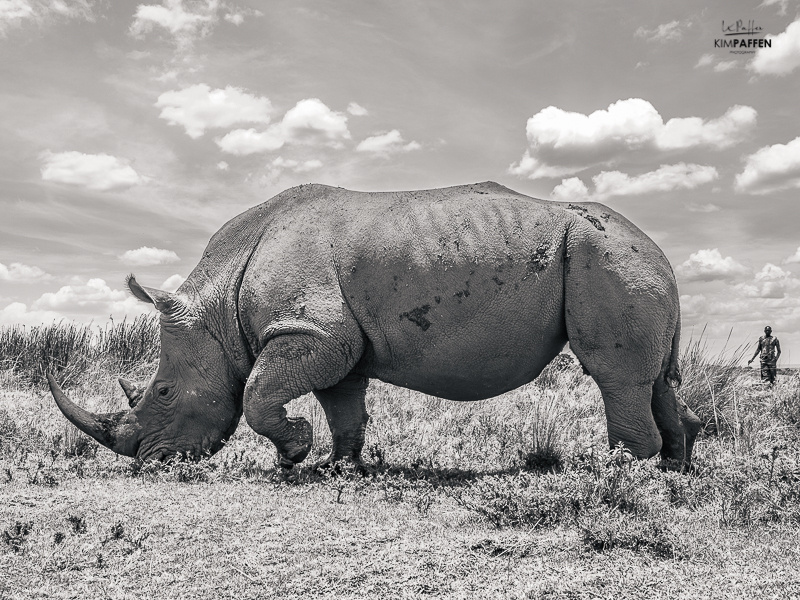
For the more advanced photographers , I recommend bringing:
- An extra body
- Different lenses (wide angles lenses, zoom lenses, etc.)
- A tripod to photograph the beautiful night sky or a monopod for extra stability on your game drives
- Camera remote
- External hard drive
- A sensor cleaner and blower brush (important when you often change lenses)
- Filters (optional)
In case you are interested in a photography-focussed safari, you might want to read my blog about planning a photo safari in Africa, including 7 essential tips to consider before booking your photography safari .

Electronics to pack for safari in Africa
Power can be limited in the bush, but there are some must-have safari gadgets, like your camera, batteries, and phone that require frequent charging. In Africa, you sometimes need to deal with power cuts or blackouts .
The location or type of accommodation can influence the availability of power. Some budget accommodations or eco-lodges only offer solar lights in the tents, no individual plug-in options, and use time slots for power . In those accommodations, a shared charging station is usually available in the main building. Most mid-range or luxury accommodations have charging stations in the room or tent. Africa uses 220-240 volt electricity at 50hz. Check which plug converter is needed for the country you're traveling to.
I always bring my own solar energy source because I use a lot of technology on safari. One of my favorite safari essentials is the WakaWaka Solar Panel combined with the Power 10 . It’s one of the most powerful solar panels and power bank-combination that can charge up to five electronic devices at once. In Africa, it is relatively easy to make use of the sun for energy, and it’s also sustainable! Other electronics I usually pack for safari are a headlamp, a torch, and my laptop for photo editing.

Useful electronics to pack for safari are:
- A solar power panel
- A portable Power Bank (to charge devices in lodges without electricity or during the game drives)
- Torch and/or headlamp (very useful in the evening and night)
- Mobile phone unlocked for international use (you can buy a local sim card on arrival)
- Charger for your phone, including charging cables
- Tablet or laptop plus charger (for a game, writing, or photo editing)
- An e-reader (optional for free time in between game drives)
- International plug converter
- Optional travel hairdryer, however, most lodges have hairdryers in the room
Safari essentials
To complete your safari packing list, there are a few safari essentials you should not forget, like binoculars , and a thermal water bottle . When I pack my bag for safari, I won’t leave my Celestron TrailSeeker Binocular and my Stanley coffee percolator . Those are two of my favorite safari essentials. Other practical things to bring on safari are bird and animal books.
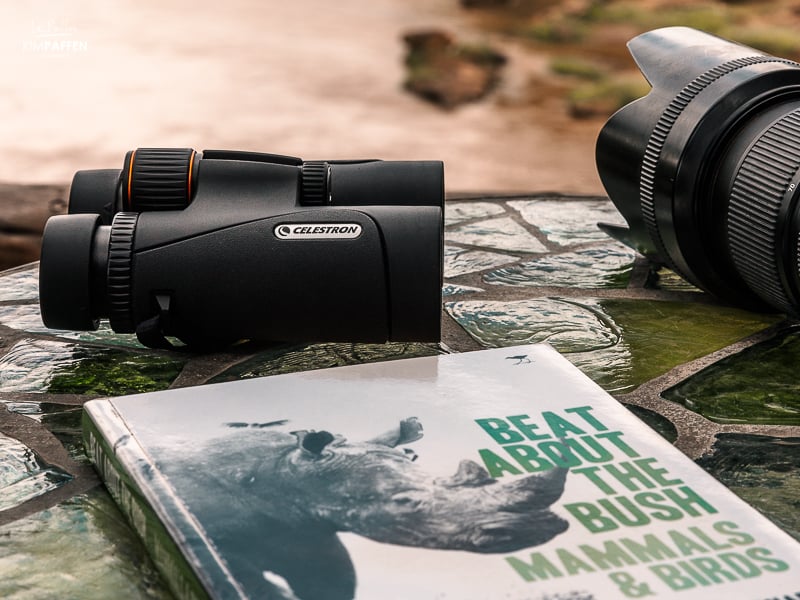
Other important essentials you should bring on a safari in Africa:
- Carry-on daypack for your game drives
- Thermal water bottle
- Stanley coffee percolator (if you're a coffee lover like me)
- Snacks if the usual meals a day are not enough
- a small notebook and pen (or use your notes on the phone)
- waterproof dry bag to keep important stuff or electronics away from water, sand, and dust
- Bird and animal checklist or book (or use apps like the Roberts Bird App to document and read about sightings)
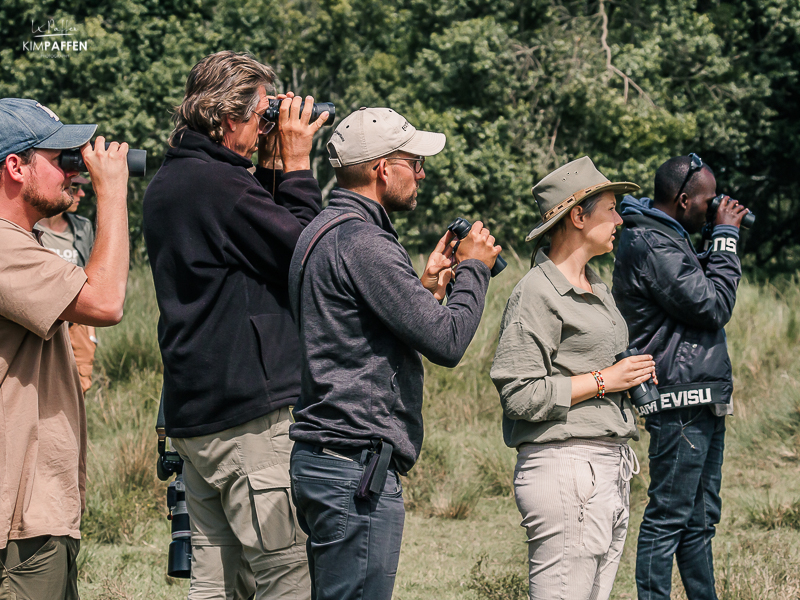
The complete safari packing guide
After reading this complete safari packing guide , you know exactly what to pack for safari in Africa. I recommend using packing cubes to organize your bag. For traveling in Africa it's advisable to travel with a soft bag or suitcase. Charter flights to for example airstrips in the Maasai Mara have a maximum weight allowance and not a lot of space to store heavy hard suitcases.
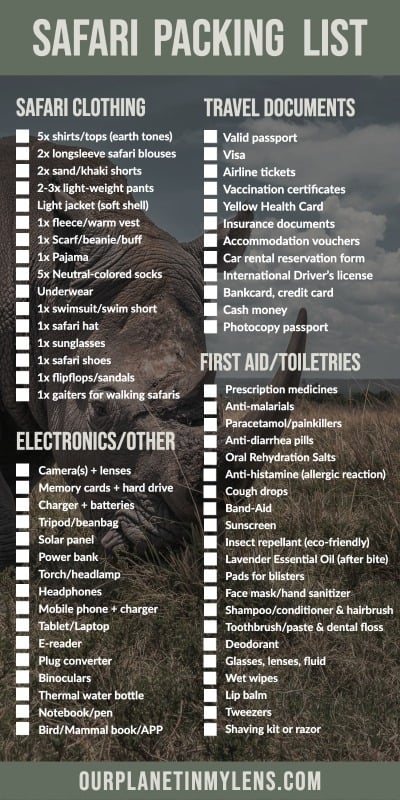
If this packing guide is helpful for you, you could help me in return by sharing the link of this article on Instagram, Facebook, and Twitter or pinning it on Pinterest for your future safari trip to Africa. Have a great safari in Africa!


Animals Around the Globe
10 Best African Countries for Safari
Posted: December 19, 2023 | Last updated: December 19, 2023
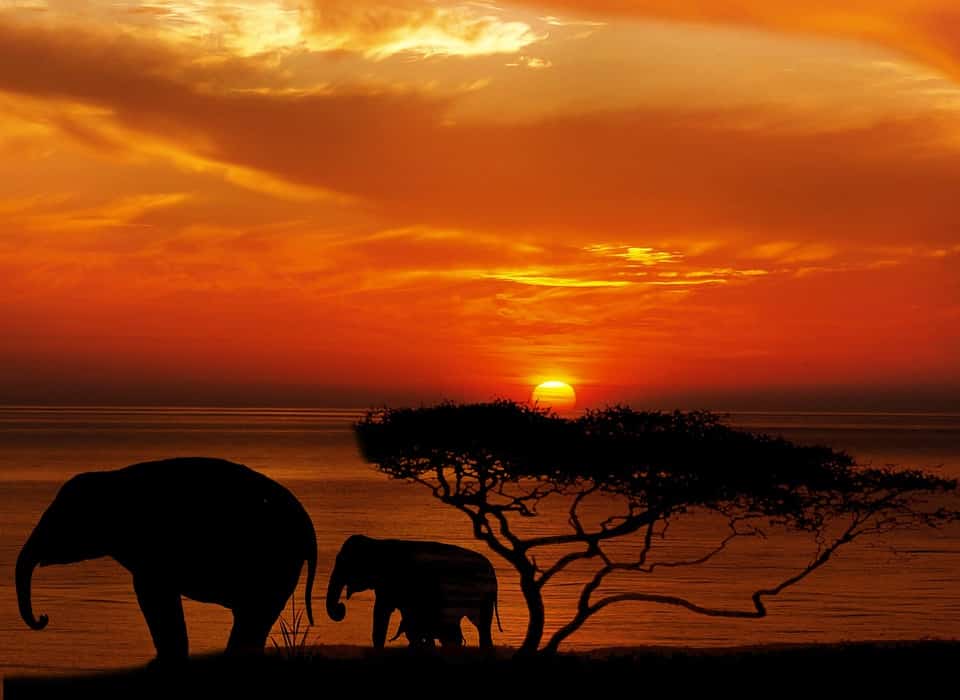
#1 Botswana
Recommended Tours:
Thus, poachers are seen as enemies of the people. As a result, Botswana has come into view as Africa's most sought-after ecotourism destination. Starting from the Chobe National Park to the Moremi Nature Reserve, you'll be able to witness numerous gems all around the country.
Back in 2014, Botswana widely banned the hunting of wild animals and implemented strict laws which are still in practice. The country resumes its zero-tolerance for poaching and their very own environmental minister, Tshekedi Khama, has even launched a shoot-to-kill policy for poachers.
Botswana, with its wildlife conservation and natural parks, is a haven for nature lovers. It is currently in the top 5, as its approach to the protection and conservation of wildlife is worth the praise. As a country, it is very forward-thinking, some may even call it aggressively forward-thinking when it comes to its preservation and anti-poaching laws.

Its fertile land provides a safe and comforting home to around 200 mammal species. This includes elephants, hippos, monkeys and so much more. Along with 650 bird species and 5,500 plants. Even though the country is still underdeveloped and most of the population live in rural households, its national parks, and sight-seeing destinations are on the top 10 of our lists.
Even though many would face some difficulties in locating Malawi on a map, given how tiny it is, the country is home to the world-renowned Lake Malawi National Park. This is practically one-third of the country and is the most biodiverse lake in the world.
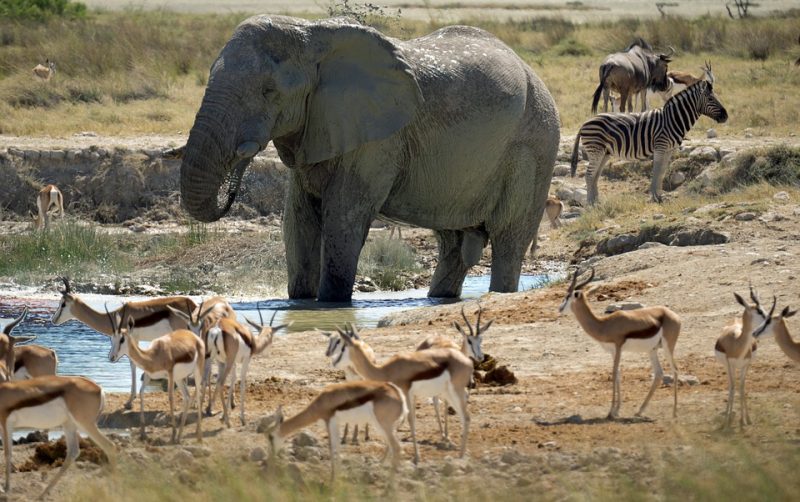
Most of the land in Namibia is occupied by the Kalahari and Namib Deserts. Along with that, the country also has 12 national parks and many other areas which are protected. So, if you go there for a safari, you'll have many rich areas to see and explore.
When it comes to countries with the least amount of population, Namibia is one of them. Which proves to be a good thing for nature. This is because most of the land in Namibia is still unspoiled by human filth or any sort of development, giving nature a chance to breathe.

In the country's Volcanoes National Park, you'll find 10 habituated gorilla families. Groups of 8 trekkers can visit them for one hour per day. But that's enough to get the best African safari experience. And as a nature lover, you'll enjoy the experience to the max.
If you've been around for some time, you'll be familiar with Rwanda's mountain gorillas. They were famously broadcasted and their fight for survival was shown on National Geographic . This was all thanks to the late Dian Fossey back in the 1970s who advocated for the rights of these mountain gorillas throughout her life.
Considering the tragic history surrounding the mass genocide of the people of Rwanda back in 1994, it's truly a blessing what the country has achieved in the past 25 years. There have been countless investments in infrastructure. This has resulted in the country being a very fast-growing destination for ecotourism.
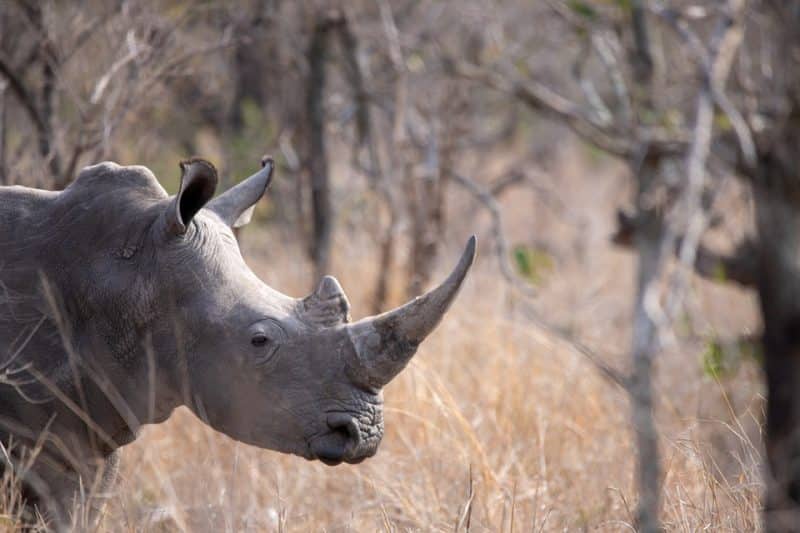
#6 South Africa
But given all the advantages, it's safe to conclude that South Africa also suffers from over-tourism. I mean, if you have so many great attractions, people will flock towards it. Chances are that you'll find yourself in the middle of dozens of unruly visitors who are not too keen on obeying the rules. This occurs mostly during the peak seasons.
Annually, the country has one million visitors. Its biggest attraction is the Kruger National Park with its enrichment in biodiversity. Visitors there also have the liberty to self-drive, thus, getting a first-person private but superb experience.
For some time now, South Africa has been climbing the charts to become one of the most popular destinations for African safaris. Given its location, South Africa is a very convenient and cheap destination for people from the United States. Besides that, the country also boasts a well-developed infrastructure which makes it perfect for luxury travelers as well.
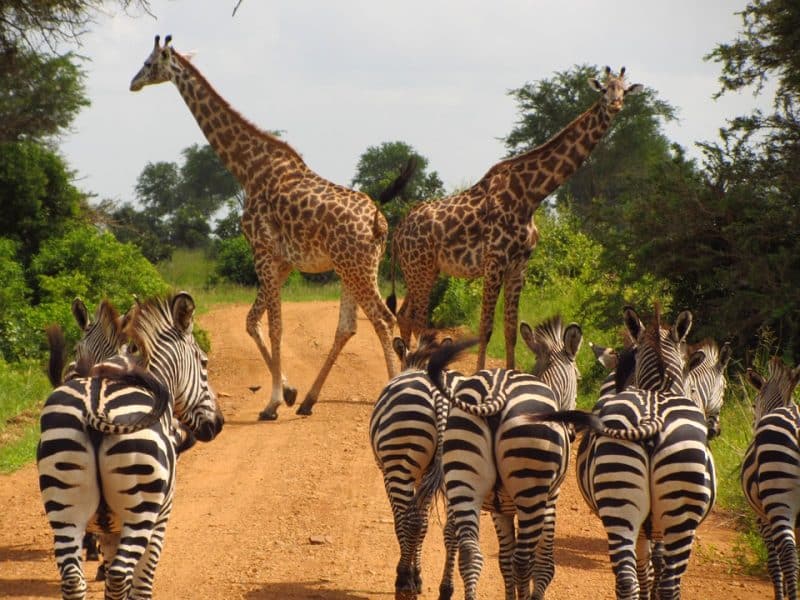
#7 Tanzania
One of the most popular locations would be the Ngorongoro Conservation Area. The country is also a haven for 1100 different bird species. It's no wonder that Tanzania gets this much rep. Especially when the country boasts so many wonders.
We talked about Kenya being the top destination for Safari. Now Tanzania here takes second place in being the continent's most popular safari destination. And why shouldn't it? The country has 16 national parks and an extraordinary amount of wealth and wildlife wonders for the people to witness.
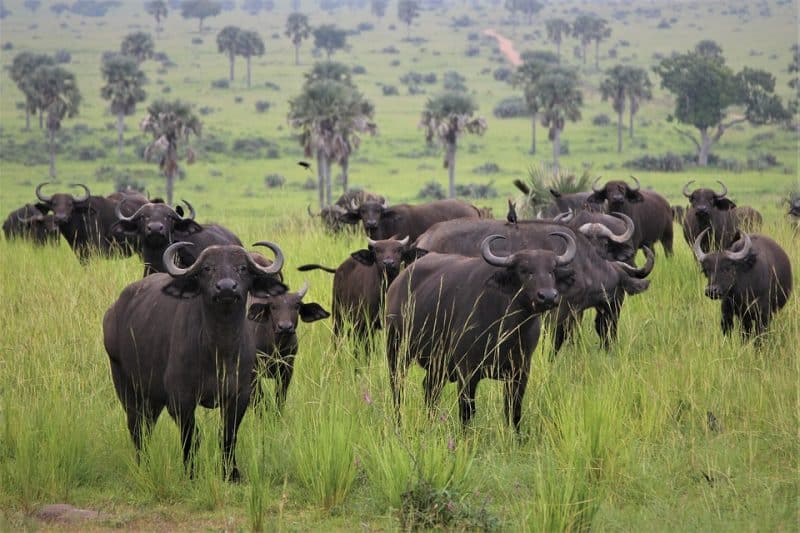
Some of its natural attractions include housing the highest mountain range in Africa. It also has the world's largest free-standing volcano and the second-largest freshwater lake. With its 30 national parks and other wildlife reserves, Uganda boasts many more sanctuaries which are worth the visit. Especially if you're a lover of nature and wildlife.
Often called "The Pearl of Africa", Uganda is certainly a great pick for an African safari. Its reputation as being one of the best ecotourism destinations comes from the country's natural attractions and wildlife.

Out of its 20 national parks, the Mosi-oa-Tunya National Park is home to many wildlife animals such as African elephants, Angolan giraffes, Cape buffalo, etc. Other than that, there are many private ownerships of National parks, notably the Kasanka National Park which is near the basin of Lake Bangweulu. It's a safe place where visitors can see 400 different avian species.
Zambia may be a bit far down the list of popular destinations for your African safari, but many consider it to be a destination for diversified and immersive safari experiences, and making a notable feature on our 10 Best African Countries for Safari guide. The country is steadily focusing on conservation as their president has shown a keen interest and is working on building the nation's economy as well as the infrastructure.
More for You
This Is How Long You Can Leave Butter On the Counter, According to Land O'Lakes
Israel displays what it says is an Iranian ballistic missile retrieved from Dead Sea
McDonald's menu adds new takes on a fan-favorite sandwich
If you use any of these 4 phrases you have higher emotional intelligence than most
Ancient DNA from a 25,000-year-old pendant reveals intriguing details about its wearer
I moved from California to Tennessee for my husband's job. We can finally save money, but it's been a major culture shock.
Is It Safe To Grill Frozen Hamburger Patties Straight From The Freezer?
The dog breeds that are plummeting in popularity, according to data
White House Response To Soaring Gas Prices Sparks Backlash
Tax Day deals 2024: Score discounts, freebies at Krispy Kreme, Hooters, Potbelly, more
I became a millionaire at age 27—here are 4 'unpopular' rules rich people follow that most don't
I've lived in a van full-time for 3 years. Here are the 5 biggest downsides no one talks about.
15 Rude Conversation Habits You Need to Stop ASAP
The dog breeds gaining the most popularity in America, based on data
These are the 10 worst U.S. states to live in for your mental health, according to a new study
20 of the most unique voices in all of music
KFC Is Changing Its Menu—Here’s What to Expect
Ketanji Brown Jackson's New Warning To Supreme Court
0416 Today in History
I worked for Beyoncé for a year. She wasn't a diva and wasn't passive — it was a master class in executing a creative vision

Turn Your Curiosity Into Discovery
Latest facts.
10 Facts About International Romani Day April 8th
9 Facts About National Cherish An Antique Day April 9th
40 facts about elektrostal.
Written by Lanette Mayes
Modified & Updated: 02 Mar 2024
Reviewed by Jessica Corbett

Elektrostal is a vibrant city located in the Moscow Oblast region of Russia. With a rich history, stunning architecture, and a thriving community, Elektrostal is a city that has much to offer. Whether you are a history buff, nature enthusiast, or simply curious about different cultures, Elektrostal is sure to captivate you.
This article will provide you with 40 fascinating facts about Elektrostal, giving you a better understanding of why this city is worth exploring. From its origins as an industrial hub to its modern-day charm, we will delve into the various aspects that make Elektrostal a unique and must-visit destination.
So, join us as we uncover the hidden treasures of Elektrostal and discover what makes this city a true gem in the heart of Russia.
Key Takeaways:
- Elektrostal, known as the “Motor City of Russia,” is a vibrant and growing city with a rich industrial history, offering diverse cultural experiences and a strong commitment to environmental sustainability.
- With its convenient location near Moscow, Elektrostal provides a picturesque landscape, vibrant nightlife, and a range of recreational activities, making it an ideal destination for residents and visitors alike.
Known as the “Motor City of Russia.”
Elektrostal, a city located in the Moscow Oblast region of Russia, earned the nickname “Motor City” due to its significant involvement in the automotive industry.
Home to the Elektrostal Metallurgical Plant.
Elektrostal is renowned for its metallurgical plant, which has been producing high-quality steel and alloys since its establishment in 1916.
Boasts a rich industrial heritage.
Elektrostal has a long history of industrial development, contributing to the growth and progress of the region.
Founded in 1916.
The city of Elektrostal was founded in 1916 as a result of the construction of the Elektrostal Metallurgical Plant.
Located approximately 50 kilometers east of Moscow.
Elektrostal is situated in close proximity to the Russian capital, making it easily accessible for both residents and visitors.
Known for its vibrant cultural scene.
Elektrostal is home to several cultural institutions, including museums, theaters, and art galleries that showcase the city’s rich artistic heritage.
A popular destination for nature lovers.
Surrounded by picturesque landscapes and forests, Elektrostal offers ample opportunities for outdoor activities such as hiking, camping, and birdwatching.
Hosts the annual Elektrostal City Day celebrations.
Every year, Elektrostal organizes festive events and activities to celebrate its founding, bringing together residents and visitors in a spirit of unity and joy.
Has a population of approximately 160,000 people.
Elektrostal is home to a diverse and vibrant community of around 160,000 residents, contributing to its dynamic atmosphere.
Boasts excellent education facilities.
The city is known for its well-established educational institutions, providing quality education to students of all ages.
A center for scientific research and innovation.
Elektrostal serves as an important hub for scientific research, particularly in the fields of metallurgy, materials science, and engineering.
Surrounded by picturesque lakes.
The city is blessed with numerous beautiful lakes, offering scenic views and recreational opportunities for locals and visitors alike.
Well-connected transportation system.
Elektrostal benefits from an efficient transportation network, including highways, railways, and public transportation options, ensuring convenient travel within and beyond the city.
Famous for its traditional Russian cuisine.
Food enthusiasts can indulge in authentic Russian dishes at numerous restaurants and cafes scattered throughout Elektrostal.
Home to notable architectural landmarks.
Elektrostal boasts impressive architecture, including the Church of the Transfiguration of the Lord and the Elektrostal Palace of Culture.
Offers a wide range of recreational facilities.
Residents and visitors can enjoy various recreational activities, such as sports complexes, swimming pools, and fitness centers, enhancing the overall quality of life.
Provides a high standard of healthcare.
Elektrostal is equipped with modern medical facilities, ensuring residents have access to quality healthcare services.
Home to the Elektrostal History Museum.
The Elektrostal History Museum showcases the city’s fascinating past through exhibitions and displays.
A hub for sports enthusiasts.
Elektrostal is passionate about sports, with numerous stadiums, arenas, and sports clubs offering opportunities for athletes and spectators.
Celebrates diverse cultural festivals.
Throughout the year, Elektrostal hosts a variety of cultural festivals, celebrating different ethnicities, traditions, and art forms.
Electric power played a significant role in its early development.
Elektrostal owes its name and initial growth to the establishment of electric power stations and the utilization of electricity in the industrial sector.
Boasts a thriving economy.
The city’s strong industrial base, coupled with its strategic location near Moscow, has contributed to Elektrostal’s prosperous economic status.
Houses the Elektrostal Drama Theater.
The Elektrostal Drama Theater is a cultural centerpiece, attracting theater enthusiasts from far and wide.
Popular destination for winter sports.
Elektrostal’s proximity to ski resorts and winter sport facilities makes it a favorite destination for skiing, snowboarding, and other winter activities.
Promotes environmental sustainability.
Elektrostal prioritizes environmental protection and sustainability, implementing initiatives to reduce pollution and preserve natural resources.
Home to renowned educational institutions.
Elektrostal is known for its prestigious schools and universities, offering a wide range of academic programs to students.
Committed to cultural preservation.
The city values its cultural heritage and takes active steps to preserve and promote traditional customs, crafts, and arts.
Hosts an annual International Film Festival.
The Elektrostal International Film Festival attracts filmmakers and cinema enthusiasts from around the world, showcasing a diverse range of films.
Encourages entrepreneurship and innovation.
Elektrostal supports aspiring entrepreneurs and fosters a culture of innovation, providing opportunities for startups and business development.
Offers a range of housing options.
Elektrostal provides diverse housing options, including apartments, houses, and residential complexes, catering to different lifestyles and budgets.
Home to notable sports teams.
Elektrostal is proud of its sports legacy, with several successful sports teams competing at regional and national levels.
Boasts a vibrant nightlife scene.
Residents and visitors can enjoy a lively nightlife in Elektrostal, with numerous bars, clubs, and entertainment venues.
Promotes cultural exchange and international relations.
Elektrostal actively engages in international partnerships, cultural exchanges, and diplomatic collaborations to foster global connections.
Surrounded by beautiful nature reserves.
Nearby nature reserves, such as the Barybino Forest and Luchinskoye Lake, offer opportunities for nature enthusiasts to explore and appreciate the region’s biodiversity.
Commemorates historical events.
The city pays tribute to significant historical events through memorials, monuments, and exhibitions, ensuring the preservation of collective memory.
Promotes sports and youth development.
Elektrostal invests in sports infrastructure and programs to encourage youth participation, health, and physical fitness.
Hosts annual cultural and artistic festivals.
Throughout the year, Elektrostal celebrates its cultural diversity through festivals dedicated to music, dance, art, and theater.
Provides a picturesque landscape for photography enthusiasts.
The city’s scenic beauty, architectural landmarks, and natural surroundings make it a paradise for photographers.
Connects to Moscow via a direct train line.
The convenient train connection between Elektrostal and Moscow makes commuting between the two cities effortless.
A city with a bright future.
Elektrostal continues to grow and develop, aiming to become a model city in terms of infrastructure, sustainability, and quality of life for its residents.
In conclusion, Elektrostal is a fascinating city with a rich history and a vibrant present. From its origins as a center of steel production to its modern-day status as a hub for education and industry, Elektrostal has plenty to offer both residents and visitors. With its beautiful parks, cultural attractions, and proximity to Moscow, there is no shortage of things to see and do in this dynamic city. Whether you’re interested in exploring its historical landmarks, enjoying outdoor activities, or immersing yourself in the local culture, Elektrostal has something for everyone. So, next time you find yourself in the Moscow region, don’t miss the opportunity to discover the hidden gems of Elektrostal.
Q: What is the population of Elektrostal?
A: As of the latest data, the population of Elektrostal is approximately XXXX.
Q: How far is Elektrostal from Moscow?
A: Elektrostal is located approximately XX kilometers away from Moscow.
Q: Are there any famous landmarks in Elektrostal?
A: Yes, Elektrostal is home to several notable landmarks, including XXXX and XXXX.
Q: What industries are prominent in Elektrostal?
A: Elektrostal is known for its steel production industry and is also a center for engineering and manufacturing.
Q: Are there any universities or educational institutions in Elektrostal?
A: Yes, Elektrostal is home to XXXX University and several other educational institutions.
Q: What are some popular outdoor activities in Elektrostal?
A: Elektrostal offers several outdoor activities, such as hiking, cycling, and picnicking in its beautiful parks.
Q: Is Elektrostal well-connected in terms of transportation?
A: Yes, Elektrostal has good transportation links, including trains and buses, making it easily accessible from nearby cities.
Q: Are there any annual events or festivals in Elektrostal?
A: Yes, Elektrostal hosts various events and festivals throughout the year, including XXXX and XXXX.
Was this page helpful?
Our commitment to delivering trustworthy and engaging content is at the heart of what we do. Each fact on our site is contributed by real users like you, bringing a wealth of diverse insights and information. To ensure the highest standards of accuracy and reliability, our dedicated editors meticulously review each submission. This process guarantees that the facts we share are not only fascinating but also credible. Trust in our commitment to quality and authenticity as you explore and learn with us.
Share this Fact:

IMAGES
VIDEO
COMMENTS
Your safari clothes should feature synthetic fabrics that are hard wearing, quick-dry, easy to wash, and won't show dirt or dust. What to Wear on Safari . When it comes to options for what to wear on an African safari, womens travel brands tend to feature technical fabrics focusing primarily on khaki and olive colors.
We love the Sony RX100V for a pocket-size camera and the Fujifilm XT-4 for a professional camera. Check out our favorite cameras for Africa. Safari Clothes: Lightweight, beige, and moisture-wicking clothing are great for traveling Africa. See our favorite safari clothing here. Safari Hat: A good hat is both stylish and functional.
2 warm fleece tops or jackets (good for a summer or winter safari outfit) 2 pairs of flip-flops or sandals (one for the wild and one for at the lodge) 2 safari dresses (for at the lodge) 2 swimming costumes. 1 waterproof jacket. 1 kikoy or sarong. 1 wide-brim hat or baseball cap. 1 beanie.
Wear neutral colors, such as khaki, beige, taupe or grey. Black and dark blue are thought to attract the African tse tse flies, whereas predators identify red with wounded animals. With the amount of dust in the bush, white is hardly recommended as it gets dirty very easily.
Safari Clothes: Lightweight, beige, and moisture-wicking clothing are great for traveling Africa. See our favorite safari clothing here. Safari Hat: A good hat is both stylish and functional. Safari Bag: A durable bag is ideal for traveling around Africa. Safari Pants: We recommend neutral-colored pants as they're great at hiding dirt and can ...
What to wear on safari: my Africa packing list. So now we've gone through the details, here's what I would pack for a 10-day or two-week safari in Africa. What to wear on safari: Clothes. T-shirts in neutral or earthy colours x 5. The green t-shirt in the photo above is by Mountain Equipment. I love it so much I bought three! Long trousers ...
Amazon. Unbound Merino Wool V-Neck. MSRP - $85 | Material - Merino Wool. Our favorite women's t-shirt for safari and travel is the Unbound Wool V-Neck. A merino wool shirt is a worthy investment and one of the best travel clothes for any trip. Despite the price, we've already transitioned a lot of our wardrobe to the material.
This smart travel adapter covers more than 160 countries, including all the African safari destinations. My favorite part is that you can charge up to five devices at once thanks to its multi-USB ...
An African safari is a dream adventure for many travelers. The opportunity to witness the magnificent wildlife, explore breathtaking landscapes, and immerse oneself in the rich cultures of Africa is an experience like no other. However, packing for an African safari can be a daunting task, especially when it comes to choosing the right clothing.
The left side shows that the best colours to wear on safari are shades of Africa's neutral and natural tones which blend in with the browns, greens, and khakis of the African bush. ... Top tips for selecting safari clothing with the best in safari, travel, and outdoor clothing technology & garment engineering. 1.
Ben's 30 Insect Repellent Pack 3.4 oz, Pack of 4. $28. Mosquitos, tsetse flies, chiggers, and other critters are often unavoidable on safari, but a good bug spray can reduce your chances of ...
Shop online at The Safari Store for safari clothes, safari shirts, safari hats, safari luggage, repellents & outdoor anti-insect range. ... whether it be a walking safari in Africa, a walk on the Inca trail, or a walk to meet friends at your favourite local pub or restaurant. ... Please do read some of our reviews from clients and travel ...
An easy Safari Packing List that tells you what to wear on safari and offers top tips for your travel packing list for African safari trips. Toll Free Numbers: 1-888-414-6513 -808-189-1052, All Other Countries ... (like the nice-to-haves, what to wear on an African safari, packing no-nos, and more). 1. ESSENTIAL SAFARI PACKING LIST .
Sweaters/Hoodies. An unexpected essential in any safari packing list is a warm sweater or hoodie to keep you protected from the cold weather of early mornings and late nights. My favourites for women: Tentree's cotton crew sweater is a really flattering fit made with 100% organic cotton.
The Best Clothes to Pack for an African Safari. You'll need one set of travel clothes to wear to and from Africa. A good addition would be a travel or photographer's vest so you can keep ...
Columbia. View On REI View On Zappos $55 View On Columbia.com $30. A long-sleeve shirt might be the most crucial part of your safari wardrobe. Though most safari destinations can get pretty hot ...
Safari clothing packing list. While on safari, clothes that are light in weight and light in color are best. You don't actually need a lot of clothes, and you should choose clothing that you can wear in layers. Depending on your safari duration, it's best to stick to three to four days worth (i.e., one safari outfit per day) of safari ...
Building a Safari Capsule Wardrobe. Safari Packing Tip #1 - Stick to the Neutrals. Colors TO Wear on Safari. Colors NOT to Wear on Safari. What to Wear on Safari Tip #2 - Materials Matter. Africa Safari Outfit Tip #3 - Wear Versatile Clothing. The Best Shoes to Wear on Safari.
Checklist of important travel documents to bring on safari. Valid Passport (required to be valid for another six months after returning) Visa (if needed) Airline ticket (s) Vaccination certificates / Yellow Health Card. COVID-19 proof of vaccination, negative (PCR) test result, or recovery certificate.
If you're craving the ultimate safari adventure, look no further. We've meticulously curated the ultimate guide to unveil the 10 Best African Countries for Safari, designed especially for ...
Travel from. To. See all options. Search accommodation with Expedia. Duration: 49 min: Distance: 42 mi: Average price: $14: Nearby airports: 5 found: Closest airports to Elektrostal. The nearest airport to Elektrostal is Zhukovsky (ZIA). However, there are better options for getting to Elektrostal. You can take a train from Moscow Domodedovo ...
40 Facts About Elektrostal. Elektrostal is a vibrant city located in the Moscow Oblast region of Russia. With a rich history, stunning architecture, and a thriving community, Elektrostal is a city that has much to offer. Whether you are a history buff, nature enthusiast, or simply curious about different cultures, Elektrostal is sure to ...
Central Air Force Museum The Central Air Force Museum, housed at Monino Airfield, 40 km east of Moscow, Russia, is one of the world's largest aviation museums, and the largest for Russian aircraft. 173 aircraft and 127 aircraft engines are on display, and the museum also features collections of weapons, instruments, uniforms (including captured U2 pilot Gary Powers' uniform), other Cold War ...
Rome2Rio is a door-to-door travel information and booking engine, helping you get to and from any location in the world. Find all the transport options for your trip from Elektrostal to Moscow right here. Rome2Rio displays up to date schedules, route maps, journey times and estimated fares from relevant transport operators, ensuring you can ...